
May 23, 2021 | Countries

Chile By Train
A Travel Guide For Train Travel In Chile.
Here you will find information for Chile about trains, routes, tours, connections, where to buy train tickets, and more.

Useful Information
Population: 18 .73 million
Currency: Chilenian Peso
Language: Spanish
Capital: Santiago de Chile
Country code: +56
Time zone: Chile Standard Time (CLT)
Train Companies | Tickets | Rail Passes | Train Types | Routes | Main Stations | Good To Know
Train Companies
The rail network in Chile is operated by the state owned company Empresa de los Ferrocarriles del Estado (EFE) .
Train Tickets

Check timetables and buy your train tickets for Chile online at Grupo EFE.
Rail Passes
There are no rail passes available for Chile.
TrAIN tYPES
- National Trains
Terrasur trains run from Santiago South to Chillán.
- Air-conditioned
- Refreshment car
Frequently Travelled Routes In Chile
International, chile travel routes, main train stations.
- Santiago (Estación Alameda)
- San Fernando
Good to know
Best time to travel to chile.
Chile is a year-round destination but depending on what kinds of activities you enjoy will determine a better time to visit than another. For the best savings, we recommend traveling in the shoulder seasons: autumn (March to May) and spring (September to October), this is when accommodations will be more affordable. The best time for outdoor activities is November to March when the mountains are clear of snow offering up Patagonia as a nature lover’s paradise.
Interested in snow sports? Visit from June to August. Looking toward the north? The capital, valleys, and desert are year-round places to visit and when you want to visit the whole country in one swoop the best month to do so is in March. Love wine? Come during April or May during the harvest season and celebrate Vendimias, celebrated in the lake district, Santiago, and in Valparaiso. And before leaving, don’t forget to witness the best stargazing opportunity in the salt flats from December to February
Chile is truly amazing from spectacular beaches to breathtaking mountains to hundreds of geysers to sprawling vineyards to desert to everything else you’d want to see! Oh and don’t forget about Easter Island! All in all, we promise Chile won’t disappoint!
- High Season: November to February
Accommodation In Chile
The best place to find cheap hotels for is to book by www.booking.com . There you will find a large selection of cheap hotels, hostels, and apartments. > BOOK HERE

Hostelworld
If you are looking for a low budget accommodation, then go on www.hostelworld.com . They have the best choice of cheap hostels for backpackers and low budget travelers. > BOOK HERE

Guidebooks For Chile
Travel with a guidebook ease your journey to find best sights and things to do. Buy it on Amazon.

Back to Top
- Deutsch ( German )
- Travel Guide
General train travel information for CHILE. Rail travel tours, accommodation, sightseeing.
Brief History
The history of rail transportation in Chile dates back to the mid-19th century. In January 1884, Empresa de los Ferrocarriles del Estado (EFE) was created through the purchase of companies operating longitudinal routes and the Santiago-Valparaiso route. Over time, the company also acquired the railroads of companies involved in sodium nitrate mining in northern Chile. From 1913, EFE's network extended from Iquique to Puerto Montt. The stable political and economic climate allowed EFE to embark on the largest investment program in its history during the Ricardo Lagos administration. Between 2003 and 2005, about US$1 billion was spent to increase passenger traffic on the suburban network and improve long-distance passenger services, as well as to restore rail service between Santiago and Puerto Montt via Temuco. However, the project has been plagued by a series of corruption scandals and mismanagement. The long-distance trains purchased from the Spanish railroad company RENFE had serious deficiencies, and the service to Puerto Montt was shut down after a few months. This triggered a government investigation which uncovered a crisis in the company due to mismanagement. Over the past decade, the company has experienced a revival thanks to public investment during the administrations of Michelle Bachelet and Sebastián Piñera, as well as the rehabilitation and reconstruction of old routes and the integration of some of them with the public transportation systems of Santiago, Valparaíso and Concepción. Today, EFE continues to evolve, adapting to changing needs. Newly invested funds and infrastructure upgrades underscore the importance of rail transport in Chile and its contribution to the country's development.
General Information and Statistics
Empresa de los Ferrocarriles del Estado (abbreviated EFE, lit. State Railway Company) is the national railway and the oldest state-run enterprise in Chile. The company carried about 20.07 million passengers in 2022
Chile’s railway network extends 7,300km (2019). As of August 2023, there are 119 railroad stations in Chile.
What connections to other countries there are.
Chile has no railroads connecting the country to other nations, the only railroad goes to Bolivia, but it is almost completely abandoned.
Are trains fast in Chile in general? How much time to cross the country?
Trains in Chile are getting faster. New high-speed trains will reach speeds of up to 160 km/h on the Santiago-Chilian route, reducing travel time from 5 to 3 hours and 40 minutes. This is part of a project to modernize the country's rail infrastructure. The journey from Puerto to Limache takes 1:03 hours and from Central to Rancagua takes 1:10 hours.
What railway companies are available?
All passenger trains in Chile, except for the Santiago Metro, are operated by Chilean State Railways (EFE), which is exclusively a passenger operator. Currently, only three or four commuter trains leave Santiago each day, none of which reach further than Chilan, 400 kilometers from the capital.
What train types are available in Chile
Chile's railway system offers several types of trains, including:
• Interregional Trains: These are long-distance trains that connect major cities and regions. An example is the Santiago-Chillán route, which is being upgraded to include high-speed trains.
• Suburban Trains: Operating mainly in and around Santiago, these trains serve daily commuters. They connect the capital with its suburbs and nearby cities.
• Tourist Trains: Chile has a few scenic railway routes that offer tourists a unique way to experience the country's landscapes. These trains often run through picturesque regions and offer specialized services for travelers.
• Cargo Trains: While not for passenger travel, cargo trains play a crucial role in transporting goods across the country.
• Metro: Major cities like Santiago have efficient metro systems that provide convenient urban transportation.
Are there high-speed-trains available?
The new trains are part of a total US$70 million investment that EFE has allocated to the new railway engines. The trains are made in China by CRRC Sifang. The new trains will undergo calibration and testing for an estimated six-month period. This will allow them to come into operation during the second half of 2023.
Most important train stations / hubs.
The main railway stations in Chile are Santiago, Valparaiso, Chilan, Temuco, Concepción, La Serena, Antofagasta.
Websites to buy train tickets for Chile?
https://www.efe.cl/
Mobile apps to buy train tickets in Chile?
Empresa de los Ferrocarriles del Estado has its own app "EFE Trenes de Chile".
Possible to buy a ticket at a railway station in Chile?
Tickets can be purchased through the website or at ticket offices at times determined by the company.
Can I buy my ticket by phone?
There is no possibility to purchase a ticket by phone call.
Return the ticket.
The return of tickets may be made by the holder of the purchasehere. A surcharge of 30% of the value of the ticket will be made up to 2 hours before the departure of the train. The return will have an estimated term of 20 business days.
Train ticket prices
Prices vary depending on where you board the train and at which station you get off. If you are going from Estación Central to Chillán, i.e. between the two terminals, the price will be €21.
Cheapest train to the closest nearby country?
Chile has no railroads linking the country to other countries.
Where to find timetables.
Find train schedules on https://www.efe.cl/nuestros-servicios/tren-chillan/servicio-y-trazado/
Buying tickets in advance or right before the train
In Chile, it is recommended to buy train tickets in advance, especially if you are traveling during peak seasons or on popular routes. Buying tickets in advance ensures that you have a reserved seat and reduces the risk of trains being completely full. In addition, some routes and classes may have a limited number of seats, so buying tickets in advance gives you more choice.
Types of tickets.
There are three types of fares for trains to Santiago in Chile:
• «LOW» fare (06:00 - 06:59, 20:45 - 23:00). • «VALLEY» fare (09:00 - 17:59, 20:00 - 20:44). • «TIP» tariff (07:00 - 08:59, 18:00 - 19:59).
Interrail/Eurail Passes in Chile
Interrail/Eurail Passes are not available.
Saver price.
Saver price fare is not available on chili trains.
Is it cheaper to buy round-trip?
Buy single tickets, not return tickets. This will give you more flexibility if you need to change your travel plans. It is not cheaper to buy return tickets.
Flexible tickets.
A "bip!" card is used to pay for trips around Santiago, which can be recharged at various stations and other locations. Fares are integrated within 120 minutes, allowing up to two transfers at no extra cost.
Rules of boarding.
The ticket is non-transferable to another person, the train staff is empowered to request the passenger's identity card before boarding the train.
Discounts for group travel.
There are no discounts for group travel on Chilean trains.
Age groups and discounts.
Elderly (65+) The fare reduction is 10% on the general value of the type of class in which you wish to travel. Children under 1 meter and 10 cm tall do not pay for the ticket if they ride in the arms or on the lap of an adult, if they occupy a seat, they pay the child fare (10% discount from the regular fare). There is a special rate for middle and high school students.
Age limitations for minors.
Children under the age of 14 must be accompanied by an adult who is responsible for their safety. Persons over 14 years of age may travel independently with an ID card and are responsible for their actions.
Handicapped passengers.
People with disabilities The fare reduction is 50% of the total fare, at any time and for 365 days a year. A personalized, non-transferable card is issued so that people with disabilities can travel safely. It is valid for 1 year from the date of issue. After that it must be renewed free of charge.
Seat reservations in Chile trains.
When you buy a ticket on the website, you go to the map of seats in the train and can choose any seat you like, seat reservation is included in the price of tickets.
Comfort classes on the trains.
There are two main classes of service available on trains in Chile:
Preferential (Preferred Class): • Seats with reclining backrests. • Arranged in rows of 2 and 1 seats facing each other. • Seat separation is 50% forward facing and 50% rearward facing. • The distance between seats is greater than in airplane and bus. • Individual tables, power outlets, air conditioning. • Personalized service, catering and bar.
Lounge (Lounge Class): • Chairs with movable backs, rows of 2 seats. • Seating arrangement 50% facing forward and 50% facing backwards. • Individual tables, air conditioning. • Personalized service, catering and bar. Also available on some trains are the following comforts: • "Super Salon": 2+2 seating, reclining angle (130°), all seats facing in the direction of the train, footrests. • "Tourist": 2+2 seating, tilt angle (110°), 50% facing in the direction of travel and 50% against it, footrests and individual table.
Food and drink in Chile trains / train restaurant.
Some trains in Chile provide catering and a snack bar during the trip.
Night trains in Chile?
Night trains between Santiago and Concepción are available every weekend in January and February. Three classes of service: "Preferential", "super salon" and "Tourist". Intermediate stops at San Rosendo. Departure and arrival times may vary. Fares: "Preferential" - 33.70 €, "super salon" - 27.35€ , "Tourist" - 23.10€
Important train routes in Chile.
Central Station – Nos Station / 0:27 hours / from 0.68 EUR / every 6 to 15 minutes port station – Limache Station / 1:03 hours / from 1.07 EUR / First Train 06:15,Last Train 22:30 Hualqui Station – Coronel Intermodal Station / from 1:12 hours / from 0.79 EUR /1 train per 1-2 hours Central Station – Rancagua Station / 1:10 hours / from 2.32 EUR / every 30 minutes Talca Station – Constitution Station / 2:45 hours / from 1.58 EUR / 1 train a day Laja Station – Thno Market Station / 2:18 hours / from 1.85 EUR / 4 trains a day Victoria Station – Temuco Station / 1:25 hours / from 1.11 EUR / 4 trains a day Temuco Station – Pitrufquén Station / 0:41 hours / from 1.53 EUR / 3 trains a day San Carlos Station – Chillan Station / 0:20 hours / 8 trains a day Central Station – San Fernando Station / 1:46 hours / from 3.27 EUR / 3 trains a day
International train routes.
There are no international train routes in Chile.
Tourist / scenic routes in Chile.
A list of fascinating tourist railroad routes in different regions of Chile:
1. Arica and Parinacota Region: Arica to Poconcile Embark on an exciting tourist rail journey from Arica to Poconcile while enjoying the stunning scenery of the region.
2. Valparaiso Region: Gandola Carril Take a nostalgic gandola ride through beautiful Andean landscapes from Los Andes to Rio Blanco. 3. Valparaiso and Metropolitan Regions: Santiago-San Antonio Memory Train Replay the spirit of an old-time railroad journey linking Santiago and San Antonio.
4. Valparaiso Region: Santiago-Limache Memory Train Take an exciting wine train journey from Santiago to Limache while enjoying the scenery of the Aconcagua Valley.
5. Chillán-Central Station Train Travel from Chillán to Santiago, enjoying comfortable trains and scenic views.
6. Flavors of Maule, San Javier Wine Route Explore wine culture as you travel from Santiago to San Javier and visit wineries.
7. Talca-Constitución Bus Train Take a rural journey by bus-train from Talca to Constitución, experiencing the authenticity of the area.
8. Santiago-Constitución Night Train Spend an unforgettable night en route between Santiago and Concepción, traveling in comfort by train.
9. Biobio Region: Laja Short Tourist Train Take a variety of tourist trips in the Biobio region and explore its beauty.
10. La Araucania Temuco-Victoria Train Travel by steam train along the beautiful sites of La Araucania while enjoying the historic atmosphere.
Luggage information.
If you travel in Business Class, you can take one hand luggage and one suitcase at no additional cost that do not exceed the following dimensions: 60 x 40 x 40 cm. If you are traveling in Salon Class, you can bring hand luggage that does not exceed the following dimensions: 60 x 40 x 40 cm. If you show up with luggage that does not comply with the permitted measurements, an additional charge of 3.20 euro will be made. You can transport at no additional cost: wheelchairs, crutches, canes, prostheses.
Bicycle on the train.
You can transport your folding bicycle, as long as it meets the luggage dimensions (75 cm x 60 cm x 45 cm).
Ski or snowboard on the train.
There is no information about the possibility of bringing skis or snowboards on the train to Chile.
Luggage lockers on the stations in Chile.
Luggage lockers are available at several train stations in Chile, offering a convenient solution for passengers to store their belongings securely while traveling.
Lost and Found Items.
If you have forgotten an item or document on board, please contact our staff at the stations. They will know how to help you.
If you are not at the station, fill in the contact form with a description of the lost item. You can do this by going to the website (https://www.efe.cl/contacto/) or by contacting the customer service office directly.
Pets on the trains.
You can transport an animal in the train hold, meeting the following requirements: • They should be shipped only in kennel. • The measurements of the kennel should be a maximum of 60 x 45 x 47 cm. • The transfer of pets is considered special baggage, so you must cancel the value assigned for it 3.20 euros.
select city
Night train.
All night trains in CHILE. How to buy tickets, find ticket fares and schedules. Information about the categories seats, couchettes and sleepers.
TRAIN TYPES
The different train types and categories in CHILE. From local trains to high-speed-trains.
TRAIN COMPANY
A list of all train companies in CHILE. Detailed information and where to buy train tickets.

Do you have further questions and need assistance? Do not hesitate to ask in our friendly forum where you always get detailed help.
Train Routes
- Bosnia-Herzegovina
- Czech Republic
- Netherlands
- Switzerland
- United Kingdom
about railcc : We are real travellers and offer honest and well-grounded tips and tricks for your train journey.
Train tickets
- search train route
- night train
- train company
Rail passes
- Britrail Pass
- German Rail Pass
- Swiss Travel Pass
- Renfe Spain Pass
- Balkan Flexi Pass
Travel guide
- travel tours
- train types
- train travel in ...
- ferry connections
- bus tickets
- Interrail Global Pass
- Interrail One Country Pass
- first time Interrail
- how to Interrail
- Interrail train reservations
- Interrail night trains
- Interrail ferries
- Interrail buses
- Interrail country overview
- Interrail offers and discounts
- Eurail Global Pass
- Eurail Select Pass
- Eurail ONE Country Pass
- how to Eurail
- first time Eurail
- Eurail train reservations
- Eurail night trains
- Eurail ferries
- Eurail buses
- Eurail in ...
- Eurail offers and discounts
- about railcc
We speak more than 30 languages
rail.cc is partner and friend of

- +56 2 2570 8620
- Contact us!
Transportation

You can travel from Santiago to Chillán in modern and comfortable trains. Terra Sur Company offers differnt trips, in which you can enjoy the southern part of the country. Questions and reservations at www.efe.cl

What are you looking for?
Experiences.
- Accommodation
- Restaurants
- Things To Do
- Coffee and Ice Cream
- All Categories
- All Regions

Train information
Once upon a time, train trips were a normal part of life in Chile. However, times (and budgets) have changed and these days Chileâs rail network is not large, but it does have a small collection of scenic rail journeys with some unforgettable views. Chile's railways (except for a few industrial lines) are operated by the state owned company Empresa de los Ferrocarriles del Estado (EFE).
While many passenger lines are in disuse (there are no services north of Santiago), there are frequent services from Santiago south to Chillan . Seven 'Terrasur' trains run on weekdays, and four on weekends, stopping on the way at Curico, Talca, and Linares. The trains are air-conditioned, with one class, and a refreshment car. Some of these trains have a bus connection from Chillan to Concepcion. The rest of Chile's main line south from Chillan towards Temuco and Puerto Montt is currently not working, though there are plans to restore services in the future.
Smaller interurban lines with tousitic value include:
- Concepción-Laja (Corto laja): Train with 22 stops between Talcahuano and Laja, which diverse scenery including the cities of Talcahuano and Concepción and magnificant views of the Bio Bio River. CLP$1,650.
- Talca-Constitución (Ferrobus): A 3-hour journey bordering the beautiful Maule River to the coast with 11 stops. There are two daily services - Talca to Constiución at 7:15am and 4:30pm and Constitución-Talca at 7:00am and 4:15pm. CLP$1,400 (no telephone reservations)
As things can change due to government decisions or other events, please check the following pages before travelling:
- Trains in general: www.efe.cl
- Santiago-Chillan & Talca-Constitución: www.terrasur.cl
- Talcahuano-Laja: www.cortolaja.cl
Create New Guide
Mini guides.
Login to create your guides for Chile.
Add to My Guide
- Add to New Guide
Recommended Experiences in Chile
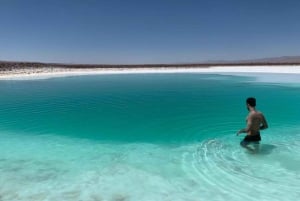
San Pedro de Atacama: Hidden Lagoons of Baltinache Tour
Discover the 7 hidden lagoons of Baltinache to see the crystal clear waters among rock and sand formations on a guided trip from San Pedro de Atacama. Swim in the lagoon to float on the salty water.

Puerto Montt: Osorno Volcano and Petrohué Falls Guided Tour
Travel from Puerto Montt to the Osorno volcano and the nearby Petrohué waterfalls on this guided day trip. Admire stunning views from the towering volcano and sparkling glacial water at the falls.
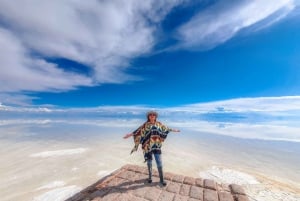
La Paz: Uyuni Salt Flats & San Pedro de Atacama 3-Day Tour
Depart La Paz to explore Uyuni and San Pedro de Atacama with a 3-day guided trip, including transportation and meals. Visit the Uyuni Salt Flats, Isla Incahuasi, Red Lagoon, Chiguana Desert, and more.
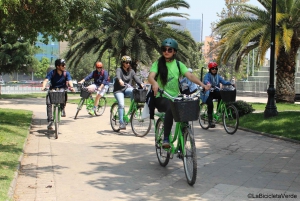
Santiago: Markets Bike Tour
Get off the beaten path and explore Santiago's hidden gems by bike. Have your senses heightened during your visit to the famous markets as a true Chilean native and enjoy the best introduction to Chile’s culture with your fun bilingual guides.
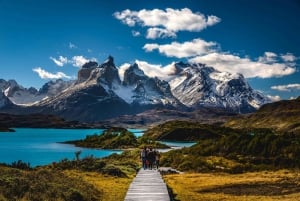
From El Calafate: Torres del Paine Full Day Tour
Discover the breathtaking landscapes of the amazing Torres del Paine on this full day guided tour from El Calafate. Explore one of the world’s most beautiful national parks, home to glaciers, turquoise lakes, stunning waterfalls and fascinating nature.
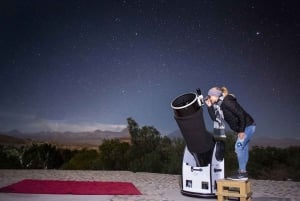
San Pedro de Atacama: Traditional Ethnoastronomy Experience
Get picked up from your hotel by night and drive out of San Pedro de Atacama for a magical sky-reading tour. Gaze at the Milky Way and understand the unique worldview of the native Andes people.

From Puerto Varas: Chiloe Island Full-day Tour
Drive along the highway and take a ferry to Chiloe Island. Admire the famous waterside houses on stilts. Visit the towns of Chacao, Castro, and Dalcahue on the island.
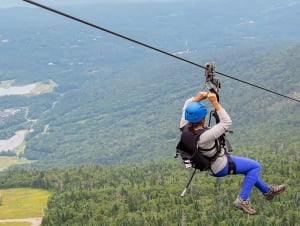
Chile’s history and awesome natural scenery offer a dazzling array of attractions to explore. A rich local culture and innumerable outdoor activities offer you an unforgettable time.
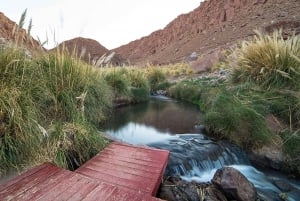
From San Pedro de Atacama: Puritama Hot Spring Experience
Immerse yourself in a relaxing natural bath in a unique natural environment, where the desert gives way to a green and beautiful ravine with hot springs. Dip yourself in 8 different hot water pools.
Search, Compare, and Save up to 70%!
Local car rental comparison with my guide, free cancellation.
No need to worry if your plans change with free cancellation options available
24/7 Customer Service
All of our providers offer 24/7 support
500+ trusted car hire partners globally
Create & share your own guide to chile with friends and family.
Add your recommended places to visit by browsing the website and pressing the icon.
Create your own guide of favourite 'must see' places
Earn your Local Expert badge by Sharing your guides with others
Get your guide seen by submitting it to the Mini Guides section
Wineries you need to visit when in Chile
Handpicked by a Local Expert

Top restaurants in Santiago de Chile
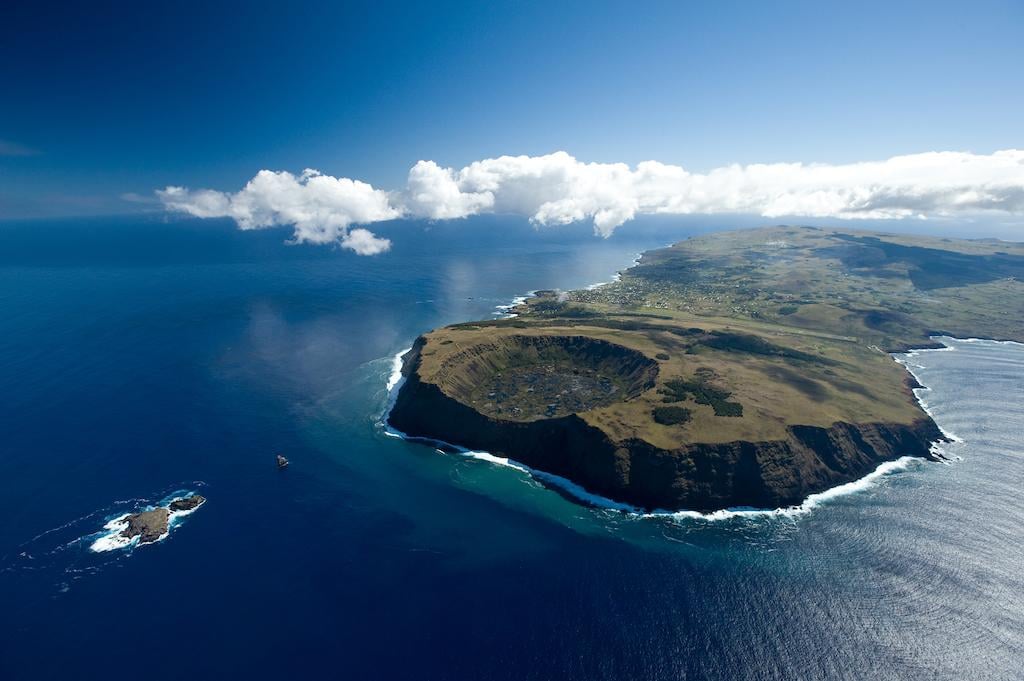
Where to stay when travelling though Chile
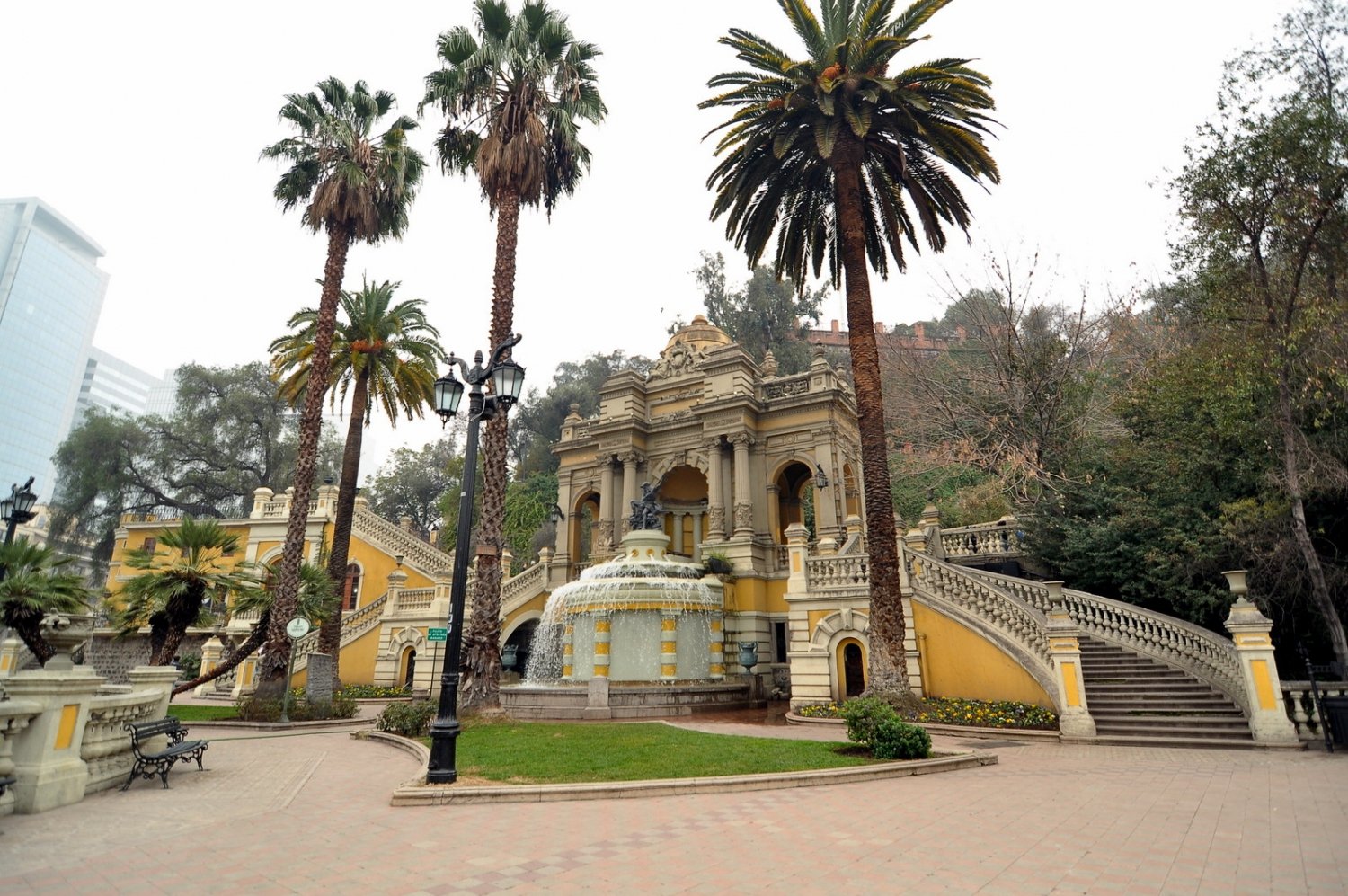
What to do in Lastarria Neighborhood

Best Wine Tours close to Santiago de Chile

The Best Wineries in Chile
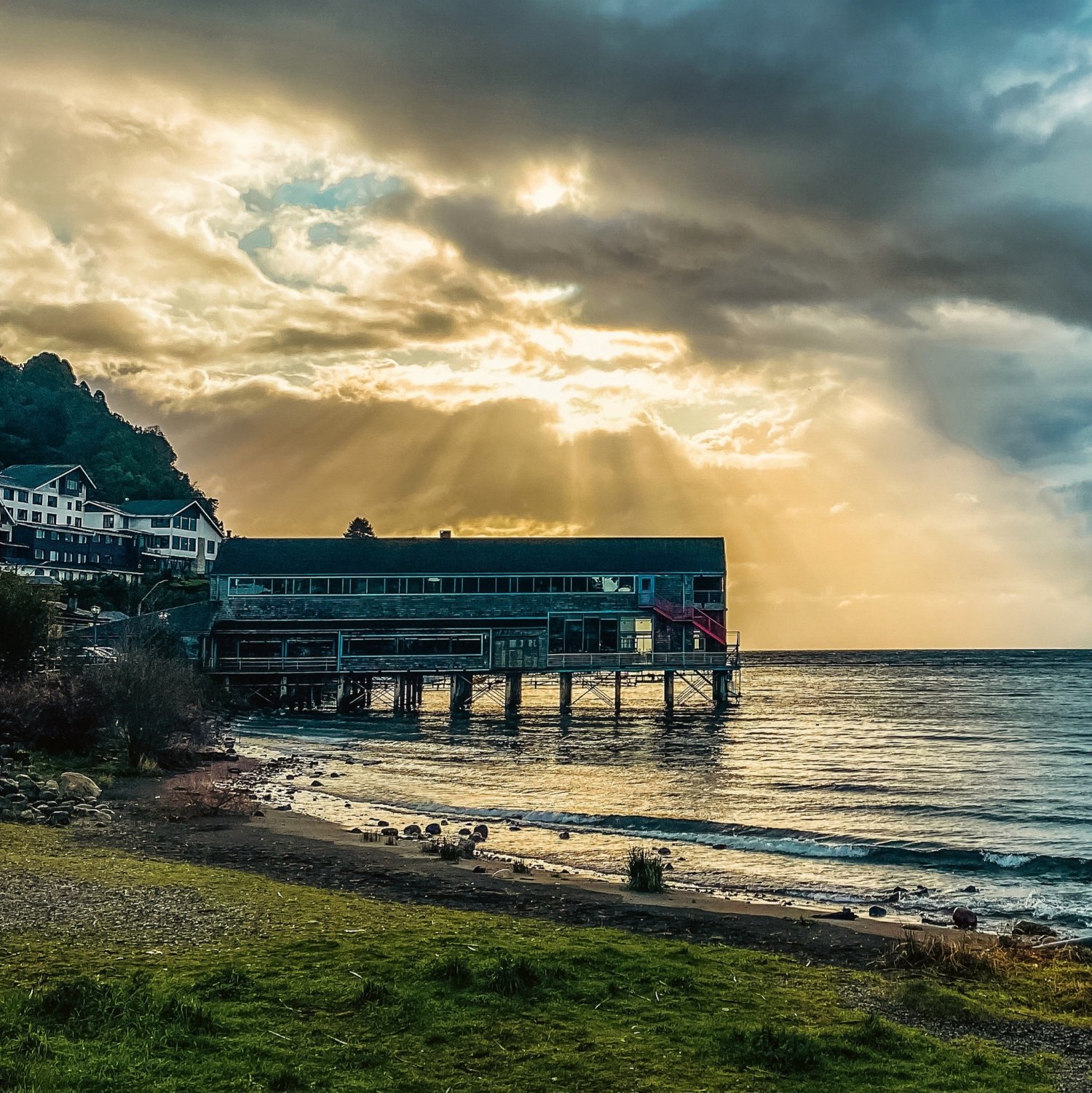
What to do in Puerto Varas

Best Cake Shops in Santiago

Best Sushi in Santiago
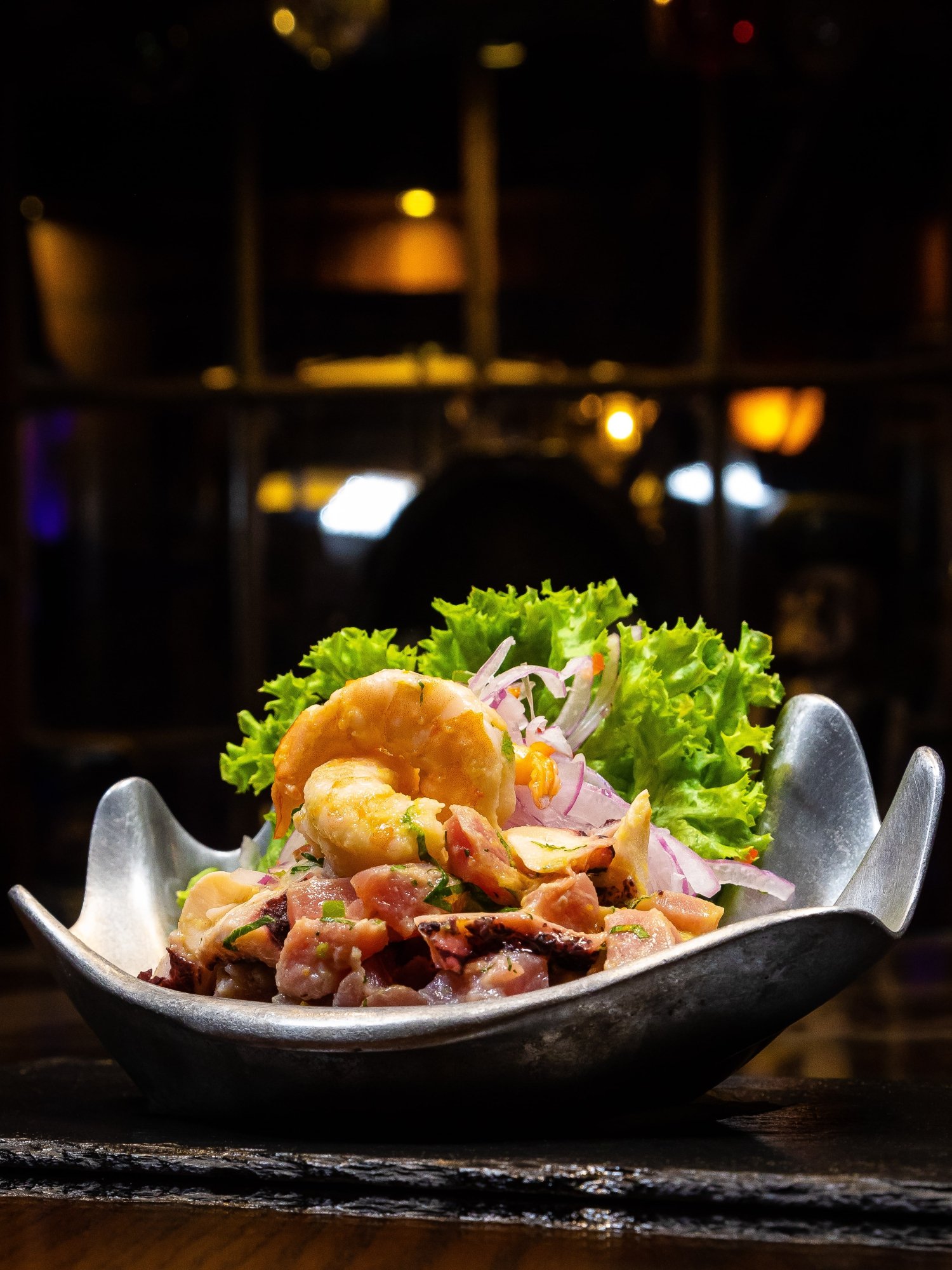
Seafood Restaurant for The Holy Week
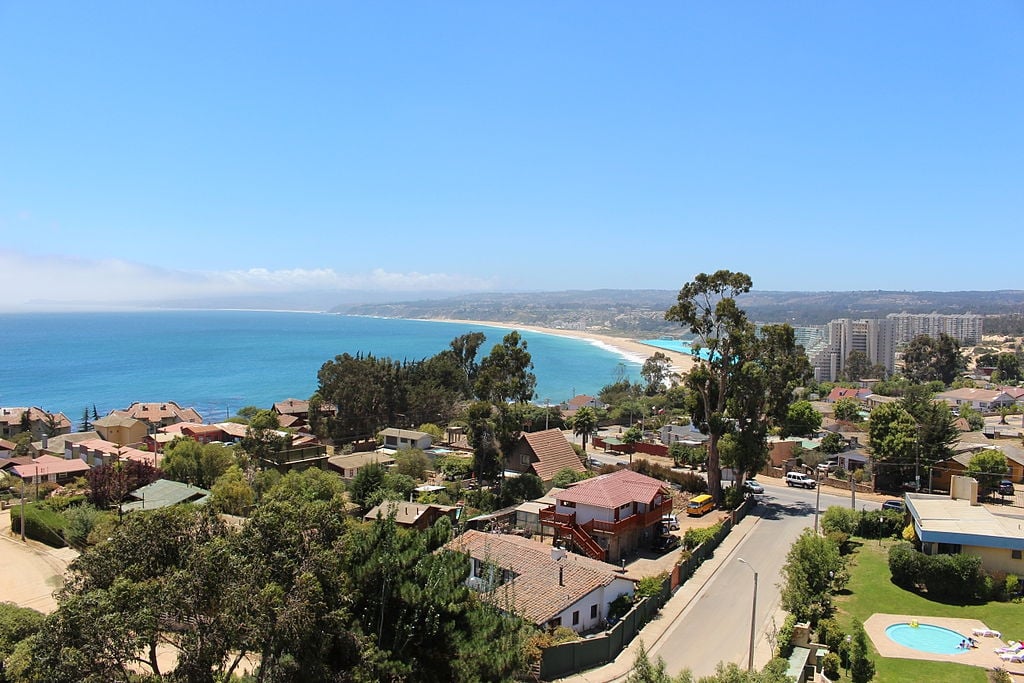
Beaches Close to Santiago
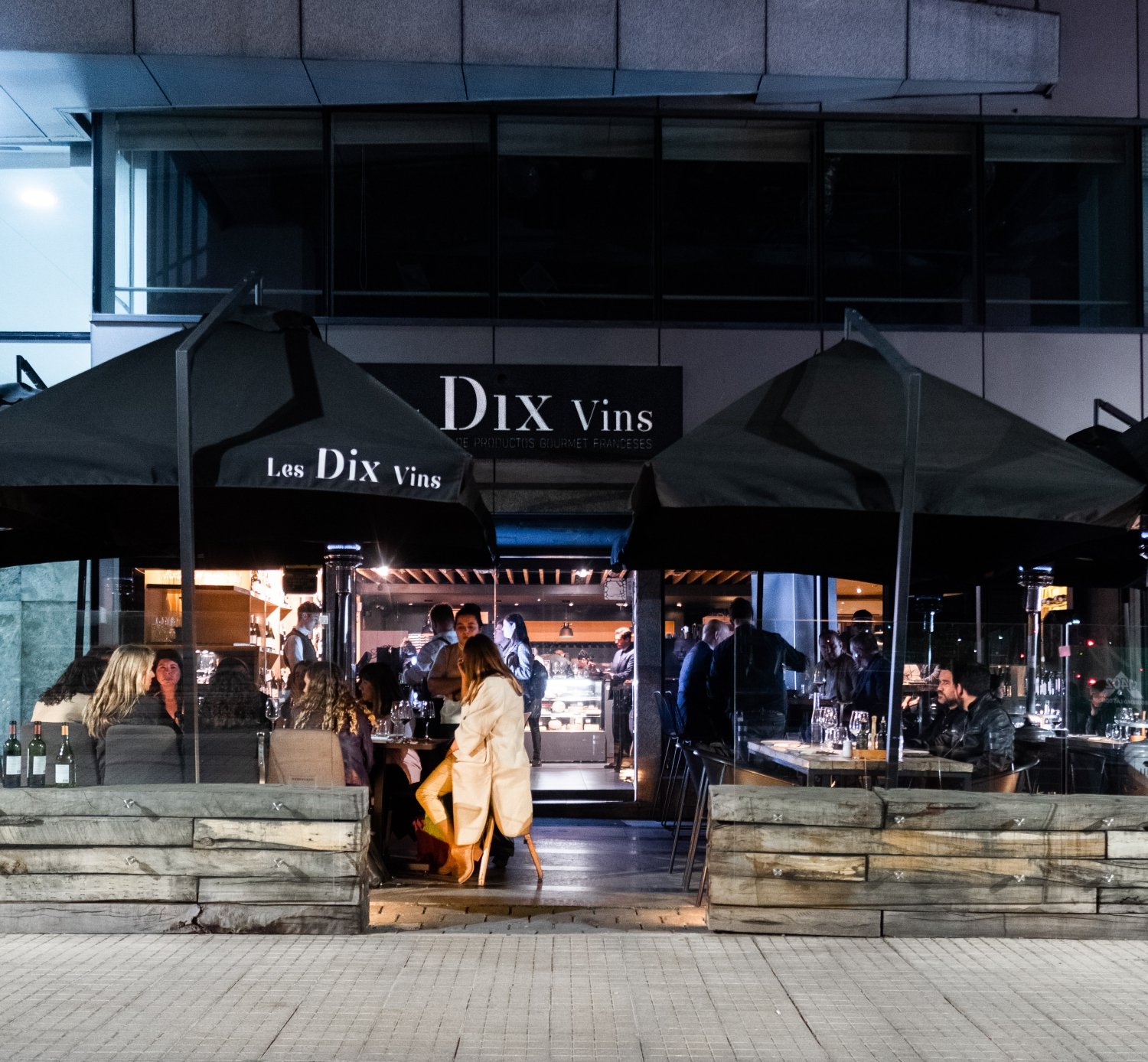
Top French Restaurants in Santiago de Chile
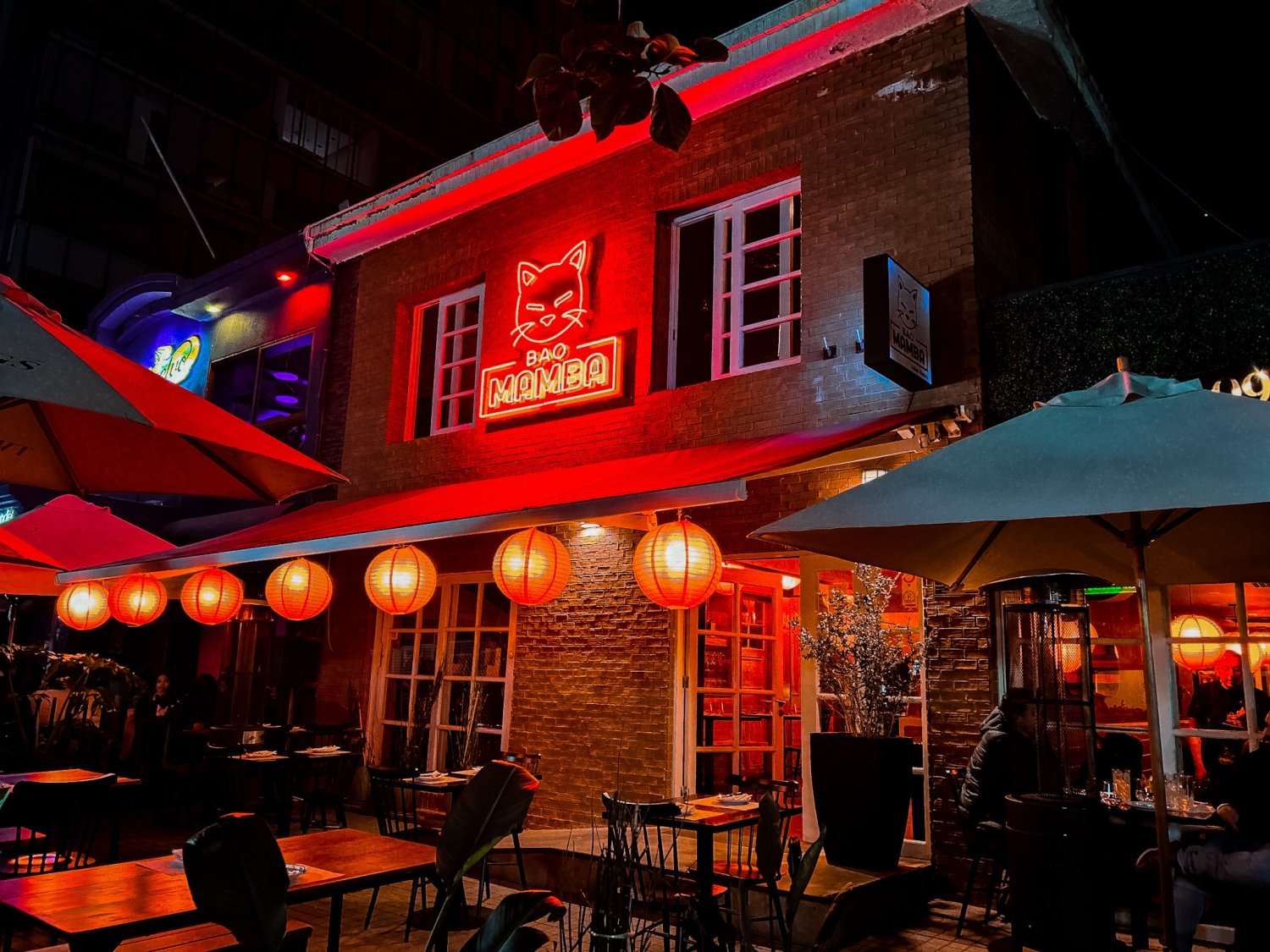
Best Sangria en Santiago

Best Pisco Sour In Santiago de Chile
Nightlife in santiago de chile.

Best Bakeries in Santiago

Best Pizza in Santiago
What to do in valparaiso.

Pet Shops and Services in Santiago

The Best Breweries in Santiago
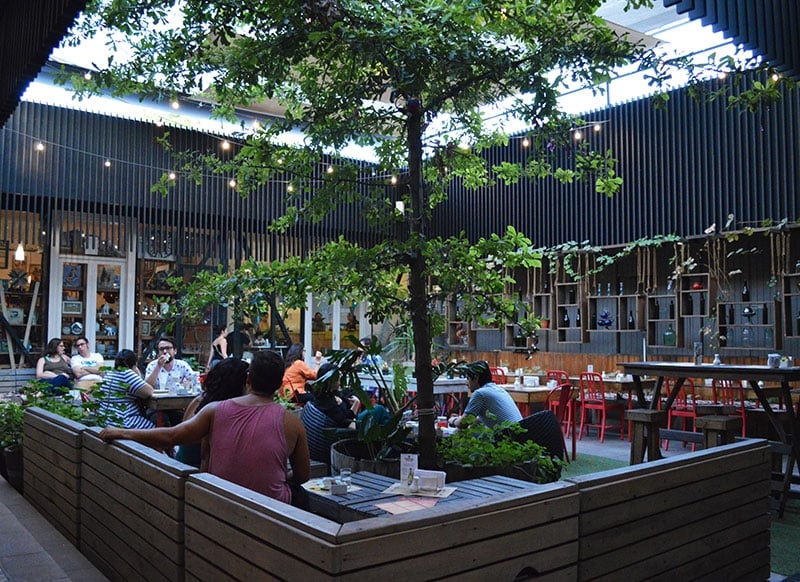
Food Neighborhoods in Santiago
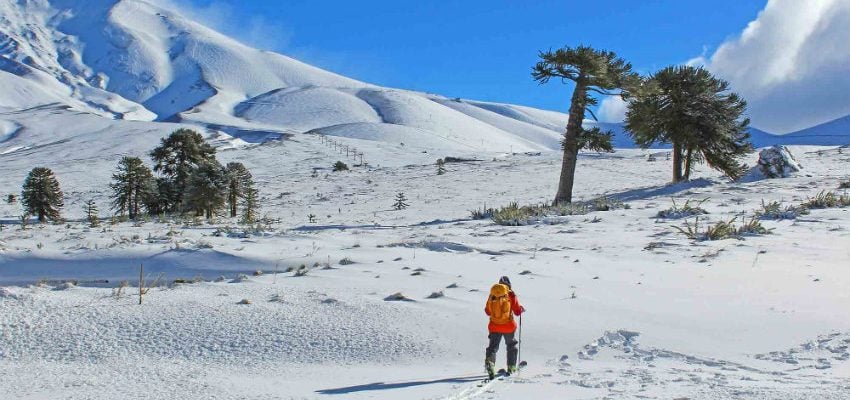
Where to Ski In Chile
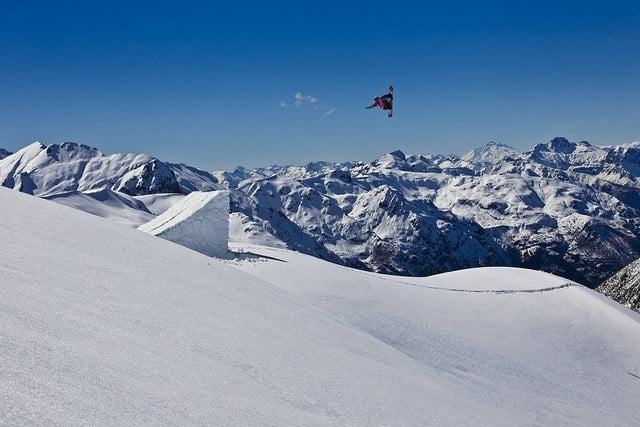
The Best Ski Resorts In Chile
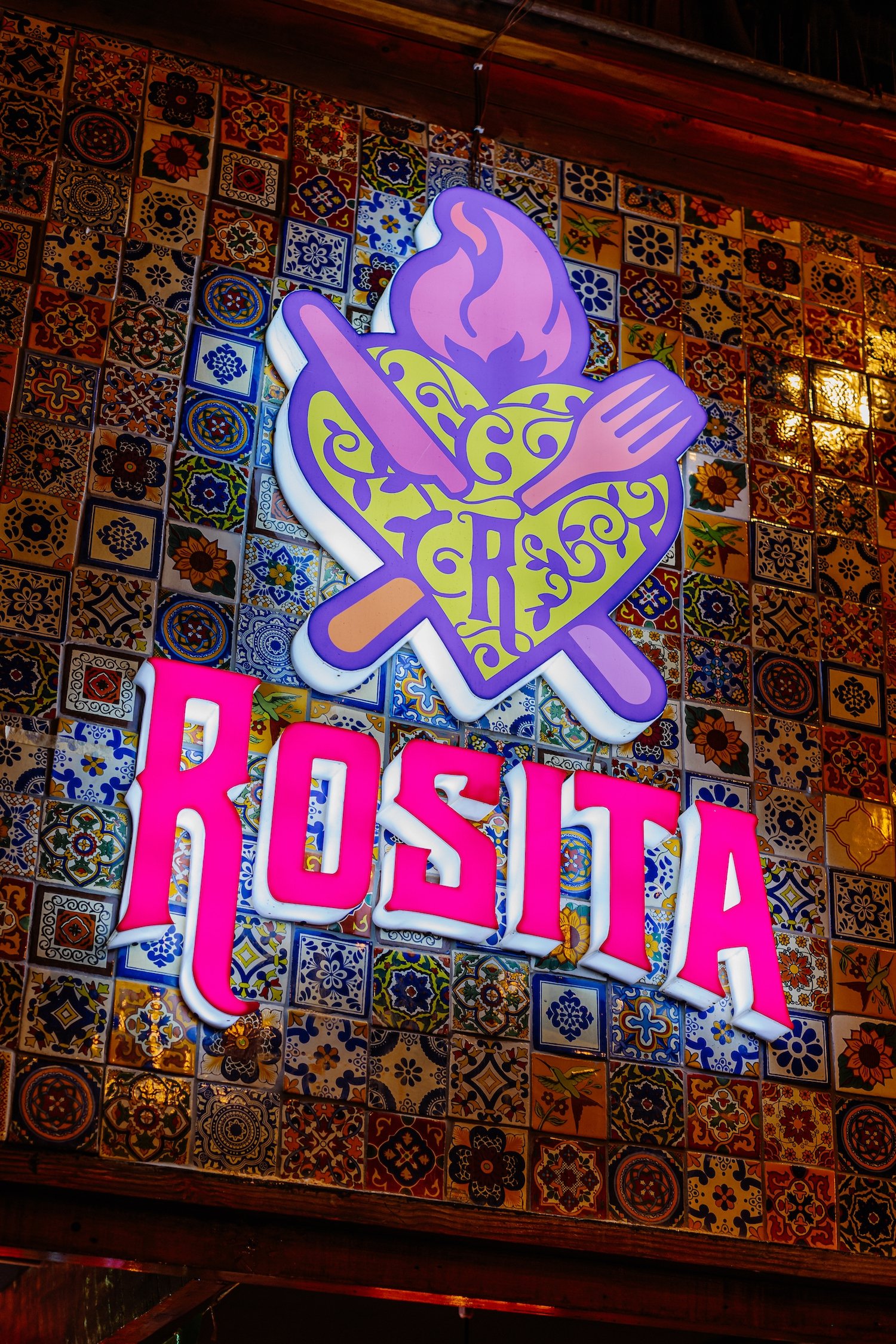
Restaurants in Plaza Ñuñoa
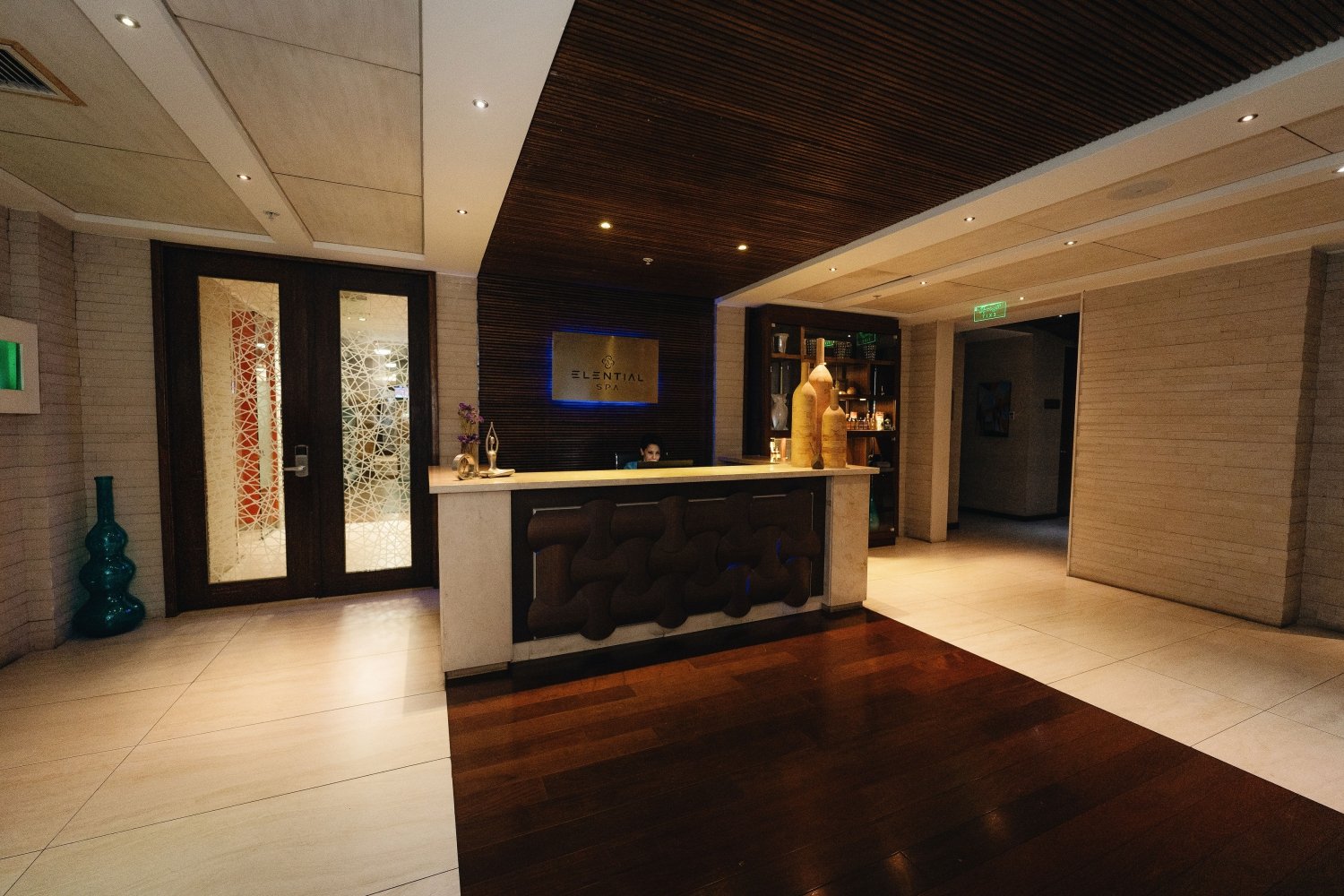
Best Spas in Santiago

What to do in Santiago
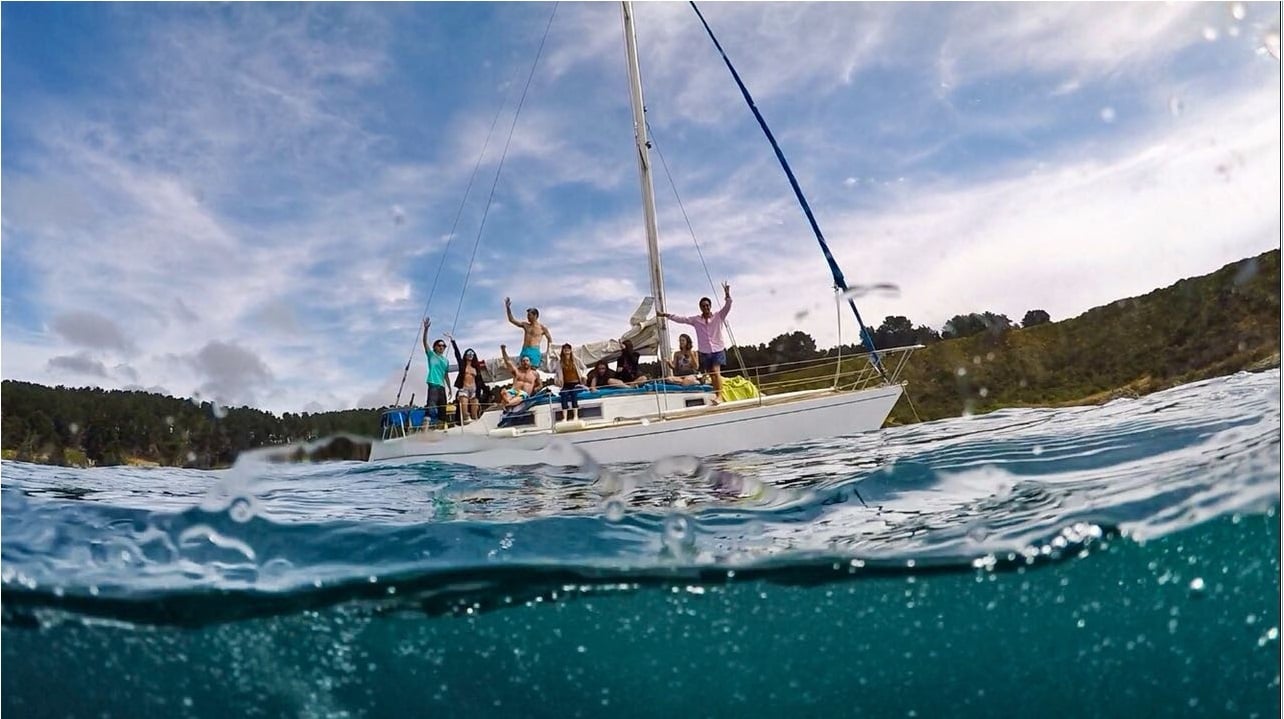
What to do in Algarrobo
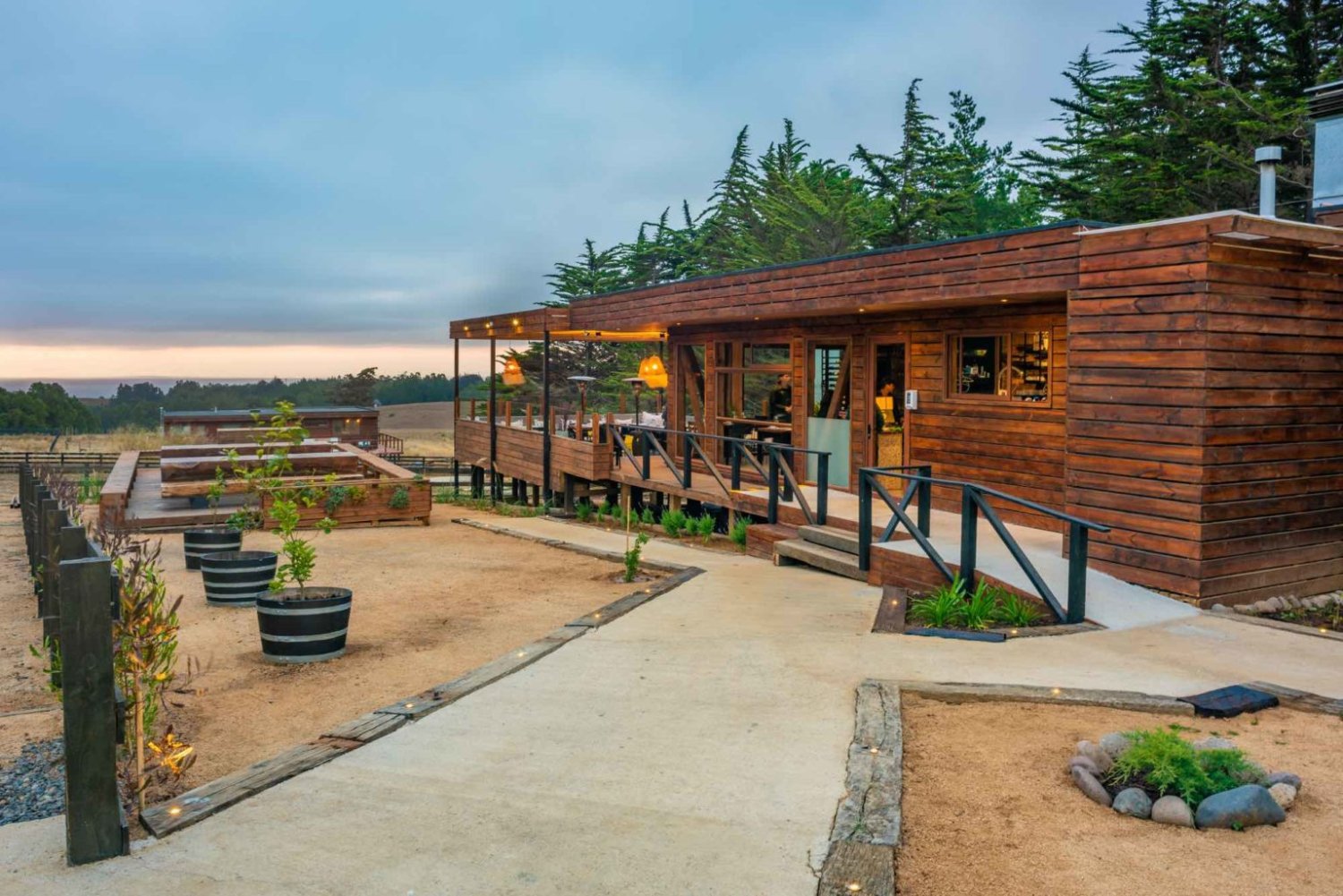
Restaurants in Pichilemu
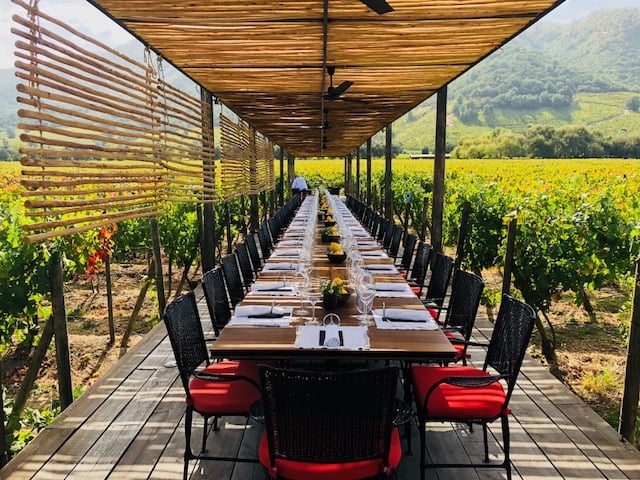
The Best Restaurants in Wineries
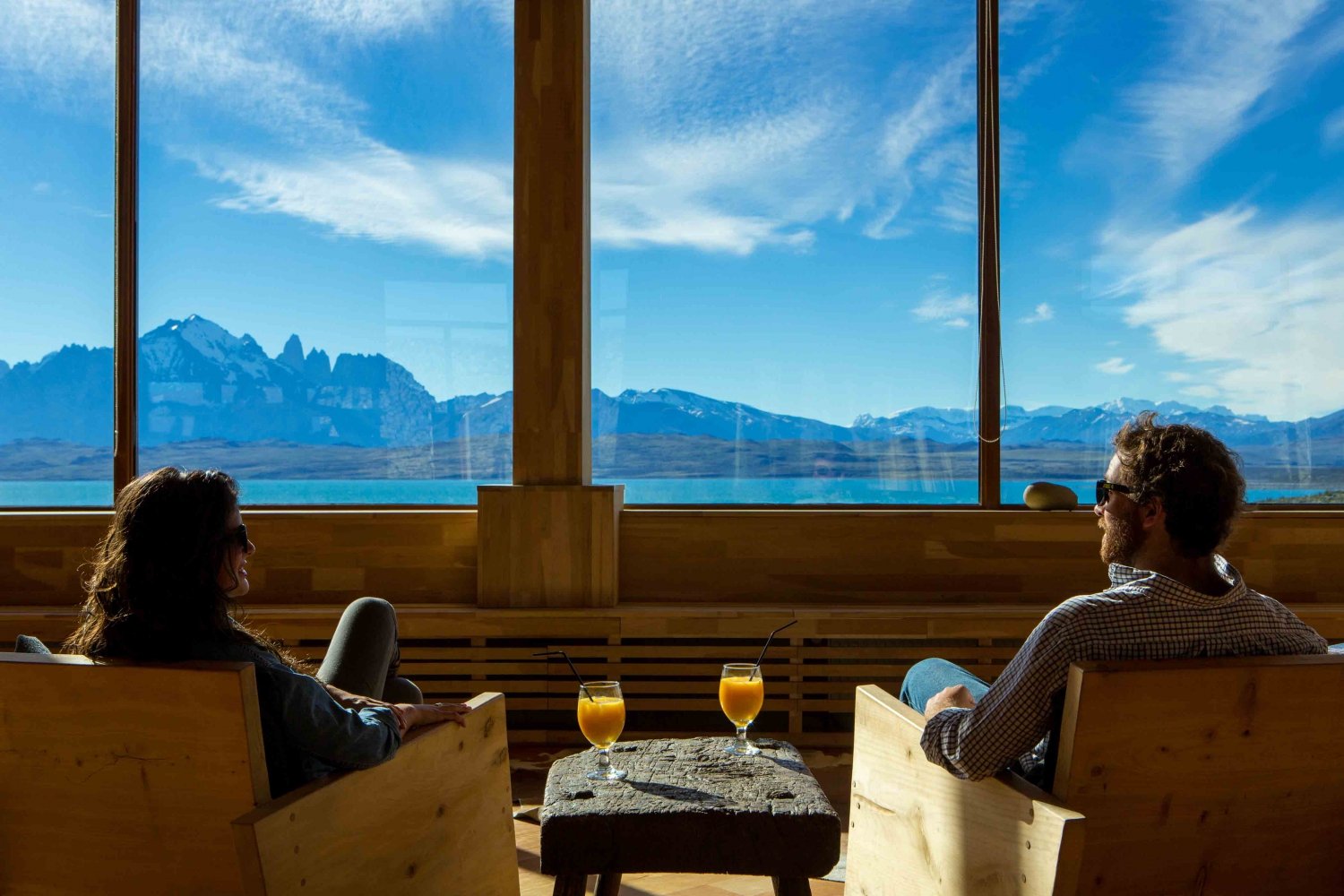
The Best and Most Unique Hotels Boutiques in Chile
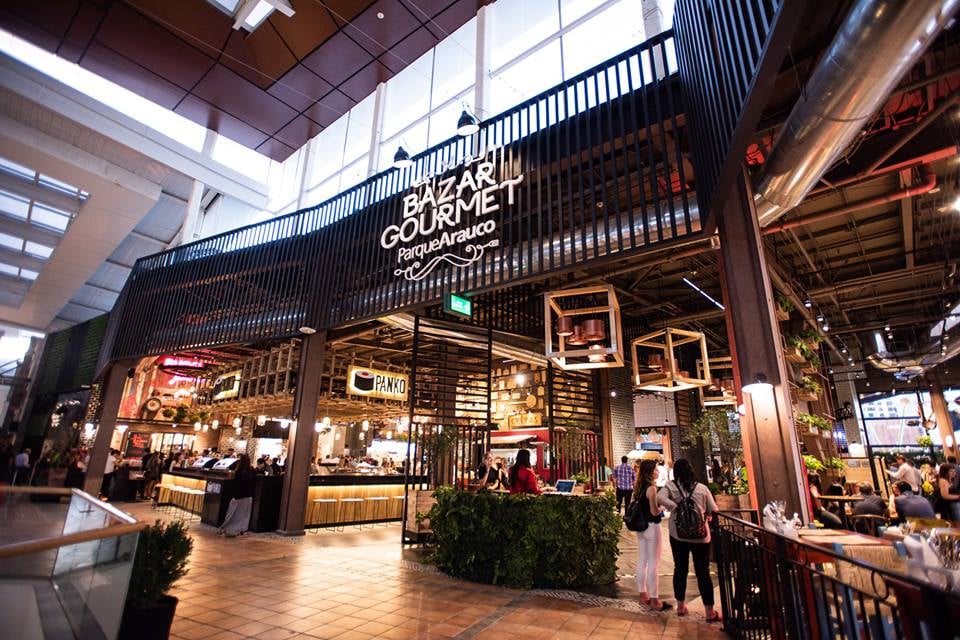
Shopping Centers in Santiago
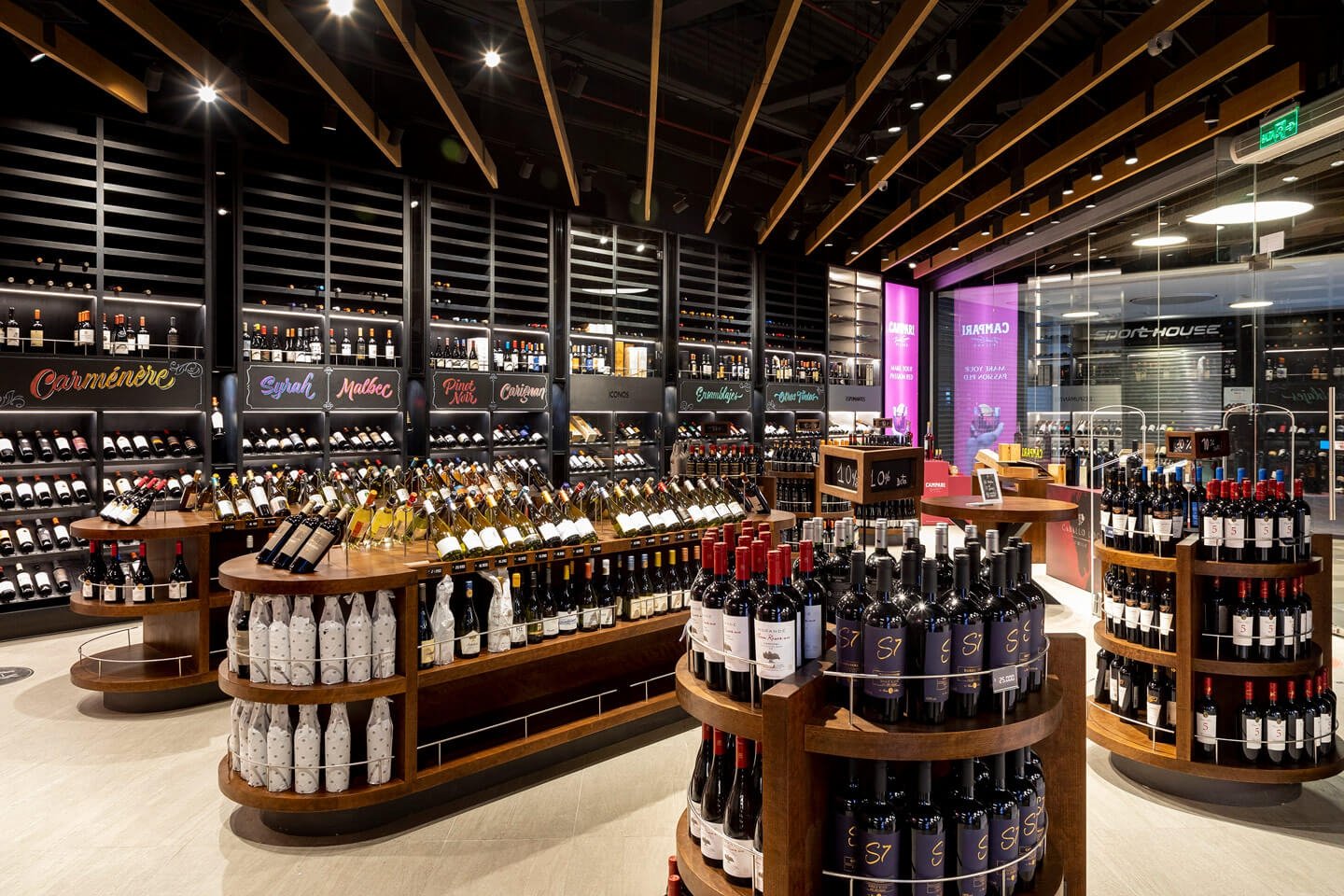
The Best Wine Stores in Santiago
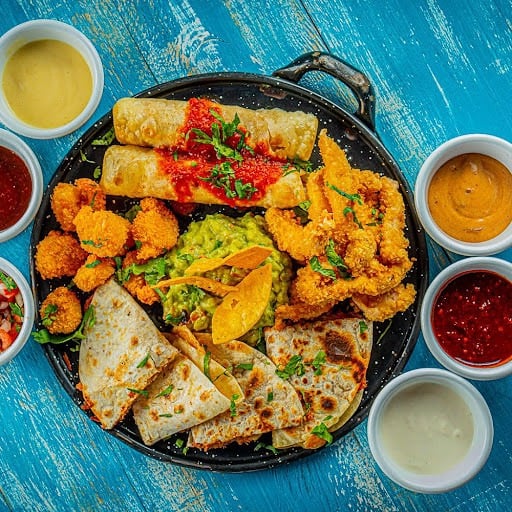
Mexican Restaurants in Santiago
Best restaurants in colchagua wineries.

Hotels Boutique in Colchagua

The Best Restaurants in Santiago de Chile

Best Seafood Restaurants in Santiago de Chile

Best Steak and Grill Meat Restaurants in Santiago

Best Places for Brunch in Santiago
Restaurants with the best wine list in santiago.
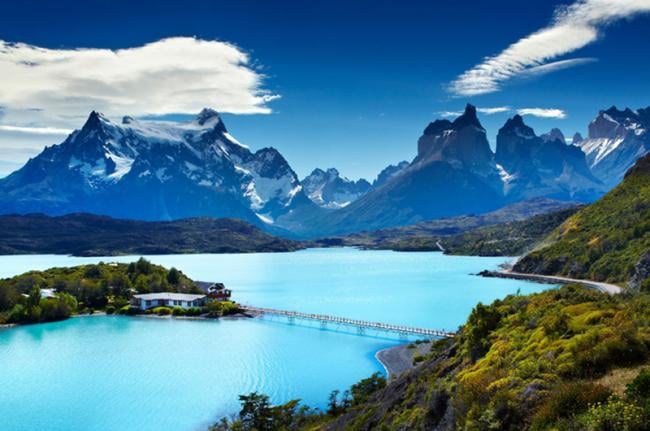
National Parks in Chile
Holidays tips for your january trip in chile.
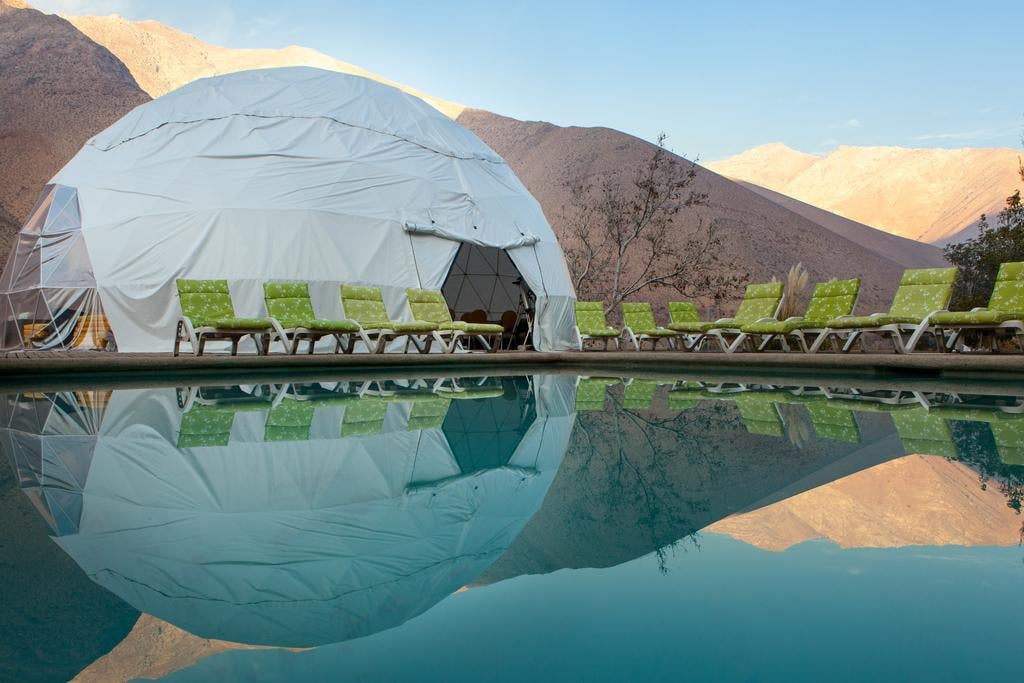
Iconic Places to see in Chile

Things to do in Sector Oriente of Santiago de Chile
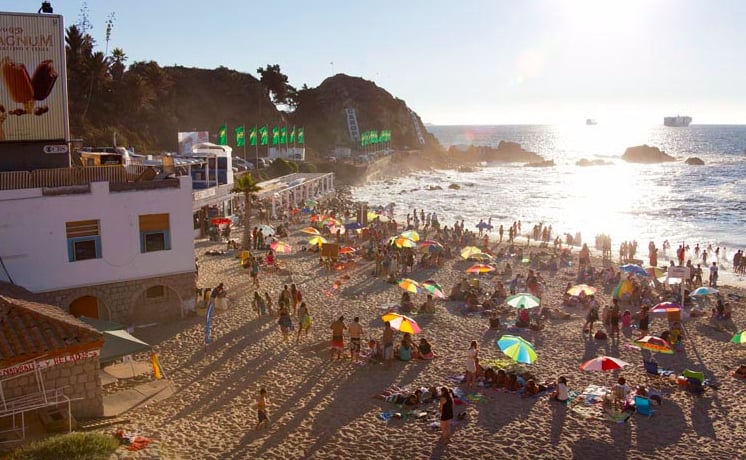
Things to do and visit in Vina del Mar

Best Tours in Valparaiso

The Best Ice Cream Shops in Santiago
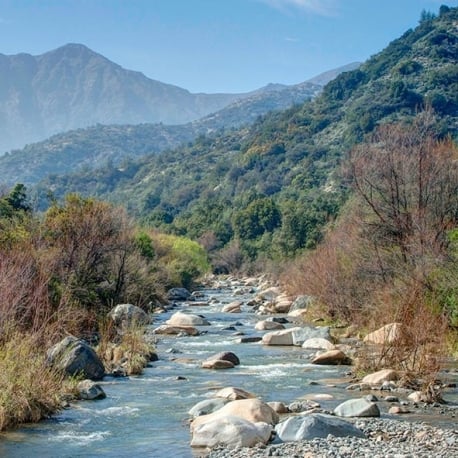
Best Places for Hiking

Typical Restaurants with Chilean Gastronomy
Best vineyards near pirque.

We Are Part of the My Guide Network!
My Guide Chile is part of the global My Guide Network of Online & Mobile travel guides.
We are now in 120+ Destinations and Growing. If you are interested in becoming a local travel partner and would like to find out more then click for more info about our Website Business Opportunity .
Nearby Destinations
- My Guide Argentina
- My Guide Peru
- My Guide Ecuador
- My Guide Colombia
- My Guide Panama
- My Guide Recife
- My Guide Costa Rica
- My Guide Trinidad and Tobago
- My Guide Barbados
No results found
Select Category first
{[{item.label}]}
- {[{data.title}]}
Events in Chile
Filter Events by Sub-Category
- This Weekend
Please select a Date first.
- Free E-Book
- Advertise with us
SantiagoChile.com The Ultimate Guide to Santiago – for Residents & Visitors

Taking the Train from Santiago
Abigail Dantes September 30, 2014 Transportation 10,927 Views
Train – Santiago Chile
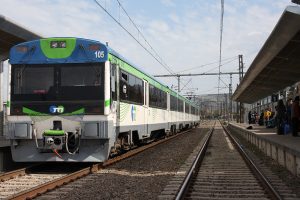
If you find yourself in need to take the train from Santiago don´t be intimidated by it, this is definitely an easy task. However, do have in mind that is very likely staff at the train station, and on the train itself, won´t be able to communicate with you in English at a proficient level. The good thing is that, in general, they are helpful and make the effort to meet your needs.
Unfortunately in Chile the trains only travel through a very short length of the country, that being the stretch: Santiago – Chillán. Between these two destinations there are 10 stops, but these do not make the journey slower than that on the bus. In fact, in Chile, many prefer to travel by train. The list of reasons for that may begin at how different the train and bus stations are from each other; the former being a much calmer, cleaner and straight-forward environment. The train is also renowned for consistently obeying the schedule, and although the bathrooms can often be quite dirty, overall all the facilities are clean.
Whenever purchasing your train ticket online, ( http://www.tmsa.cl/link.cgi/servicios/terrasureng/ ) the options on the departure drop down menu might be a little confusing if you are leaving from Santiago. When in this situation, the option you want is Alameda , which is the very place where the trains departure from. The final step of your purchase is to pay for your ticket via WebPay; now, if you are in luck it will work sooner than later, but this is not really the case most of the times. The best thing to do is to keep trying, it will work eventually. Otherwise, the only option left is to buy the tickets at the Alameda office at Estación Central – open every day from 08:00 to 20:00 hours , or at the Terrasur ticket booth at Universidade de Chile metro station – open from Monday to Friday from 09:00 to 20:00 hours, and on Saturdays from 09:00 to 14:00 hours.
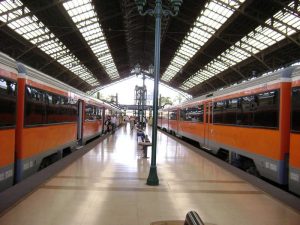
Prices range from CLP7,000 to CLP24,000 depending on the season, length of the journey and or which carriage you wish to travel. They basically follow two standards: Clase Preferent e (first class), where seats are considerably wider, more comfortable and far apart from one another, in addition each seat has its own electric socket; and Clase Salón (Economic), with narrower seats, which are greater in number, causing these carriages to be more crowded and often quite noisy as a consequence of all the kids on board. The train also provides a modest cafeteria service; you can either order/buy your snack as the waiter passes by with a snack trolley, or order at the carriage where they prepare the coffee and toasties.
There is a transportation fee of CLP2,000 for suitcases and boxes which will not fit in the hand-luggage compartment, and the fee for transporting mountain bikes, skies/snowboards and pets is CLP3,000.
The trains leave from Alameda , located in Estación Central (also known as Estación Alameda ), this is a bustling building in a bustling neighbourhood. When walking around here be very aware of your belongings at all times, thievery thrives in this area all day long. The best way to arrive there is to take the Linea 1 (the red line) of the metro grid line and head to the station of same name, there you will also find supermarkets, ATM machines, coffee bars, souvenir shops, newsagents etc.
Travelling by train in Chile is definitely something to consider doing. The journey itself is safe and pleasant; the views of the rural areas and cities´ backdrop provide an interesting insight of how varied Chile is when it comes to nature, infrastructure and wealth. Plus, it is most likely that your destination is going to be the stunning mountains in Termas de Chillán or the beautiful vineyards at Valle Colchagua ; making the decision of taking the train from Santiago all the more worth it.
Article by: Abigail Dantes
About Abigail Dantes
Related Articles
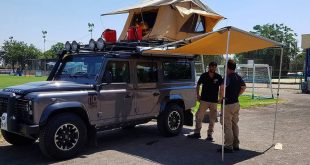
How to buy a car in Chile
May 30, 2017
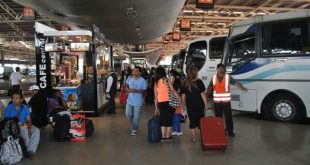
San Borja Bus Terminal
September 10, 2015
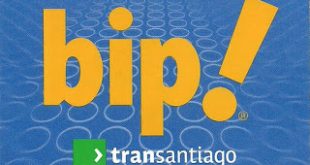
January 27, 2015
THE 10 BEST Chile Railways
Railways in chile.
- Taxis & Shuttles
- Bus Transportation
- Mass Transportation Systems
- 4.0 of 5 bubbles & up
- 3.0 of 5 bubbles & up
- Good for Kids
- Budget-friendly
- Good for Couples
- Good for Big Groups
- Good for a Rainy Day
- Good for Adrenaline Seekers
- Adventurous
- Hidden Gems
- Honeymoon spot
- Things to do ranked using Tripadvisor data including reviews, ratings, photos, and popularity.

1. Metro de Santiago
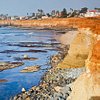
2. Metrô Valparaíso

3. Estacion de Ferrocarriles de Temuco

4. Ferrocarril Arica Tacna
5. Ramal Talca Constitucion

6. Tren del Recuerdo

8. Ramal Talca - Constitucion - Train

9. Tren Sabores del Maule
10. moneda metro de santiago.


11. Dtp Transantiago
12. locomotora kitson meyer n°59, what travelers are saying.
Call Us: +44 (0)20 8191 0620 | Email Us: [email protected]

South America Luxury Train Tours 2024
Although less renowned than in Asia and Europe, South America luxury train tours provide a glorious escape from the hectic modern world as you explore Latin America. Our 2024 train tours in South America were meticulously curated to offer total opulent rail journeys and are perfectly positioned to be incorporated into a more comprehensive tour of the region.
Luxury Rail Tours in Peru & South America
Just click on any of the tours listed below to open up or download a PDF file with the tour’s full details including dates and pricing. Note that we offer the Andean Explorer in conjunction with a wider luxury tour in Peru with our sister company – The Latin America Travel Company .
● Please remember that booking as far ahead as you can in advance is essential for these trains ●
12 Nights From UK £ 9,450/ US $ 12,280
Contact us for quotes in other currencies
Lima ● Arequipa ● Belmond Andean Explorer ● Lake Titicaca ● Cusco ● Machu Picchu ● Sacred Valley
18 Nights From UK £ 11,370 / US $ 14,780
Lima ● The Amazon ● Sacred Valley ● Machu Picchu ● Cusco ● Belmond Andean Explorer ● Lake Titicaca ● Arequipa
South American Regional Highlights
The following highlights of this region can be visited on our luxury rail tours and offer world class experiences. Contact us about rail tours we cna tailor in South America.

At an altitude of 2,380 meters this Peruvian city is surrounded by three volcanoes and has a rich mix of Spanish & indigenous culture.

Cusco was the capital of the Inca Empire and the gateway to the famous sites of Machu Picchu and the Sacred Valley of the Incas.

Puno is a picturesque port city at an altitude of over 3,800 metres, on the shores of Lake Titicaca on the Altiplano of Peru.
Experience The Finest Luxury Train Journeys South America Offers
Train trips in South America are nothing new, but now you can travel by train in South America at the height of luxury. Opulence abounds on these train journeys through Latin America, from onboard accommodations, dining experiences, and world-class service provided by the crew onboard the trains. Many people choose to nourish themselves in a South America luxury rail holiday while exploring the region on a wider exploratory tour.
Passengers onboard these luxury trains in South America can saturate their souls while breathing in the fresh, crisp Andean air from one of the train’s open decks. You’ll also be able to revel in menus with the finest seasonal dishes prepared by top-class chefs while taking a train across South America. After enjoying your fine meal, maybe relax by having a treatment at the onboard spa or retire to your luxury cabin for a comfortable night’s rest and prepare for the following day’s activities on your South America luxury train tour.
South America Luxury Train Tour Itineraries That Offer A Unique Perspective
Our South America luxury train holidays offer travellers a truly unique way of experiencing this incredibly beautiful region. While many people opt to fly throughout South America, rail travel in South America allows you to get on the ground and actually experience the incredible landscapes, cultures, and people that other forms of transport just can’t give you. We offer the best train rides in South America that have been designed with total luxury in mind.
These South America train travel itineraries have been curated to provide an unsurpassable Latin American experience. South America train tours with The Luxury Train Travel Company allow you to experience a myriad of magical destinations, from the picturesque port city of Puno on the shores of Lake Titicaca to departing from Quinto in Ecuador. If you desire to travel by train in South America, and want to do it in style and luxury, we’d gladly assist in making it happen.
Luxury South America Train Tours Curated By Leading Industry Experts
If you’re considering train travel in South America, there’s no better place to go than The Luxury Train Travel Company. We are industry-leading experts at organising train tours in South America and have a wealth of experience to call upon to offer the greatest itineraries for Latin America rail travel. In South America, travellers have such a monumental choice of destinations and activities, and we curate South America train tours that ensure you don’t miss out.
Regardless of the length of each tour or its destination, these train trips in South America are designed to provide travellers with the ultimate onboard experience. Whether you take a three-hour trip via train across South America or a four-night Andes to the Pacific South America luxury rail holiday that takes in some incredible volcanic views and spectacular rail engineering, you can be confident that you are getting the finest possible tour created by the best in the business.
Luxury Train Travel in South America via Peru, Bolivia, Argentina, Brazil, Chile & Patagonia
We often find that travellers head for Latin America due to the diversity it offers in landscapes, incredible city destinations, history, and intriguing cultures. South America train travel provides a wonderful way of seeing many of the region’s unique gems. A journey on a luxury train in South America will undoubtedly be the journey of a lifetime for many people, and choosing train journeys in South America with the most suitable itineraries is crucial for the overall experience.
You may opt for Bolivia as a destination you want to visit when you travel by train in South America. Bolivia truly is a land of extremes, with spectacular views, high altitudes, and astounding landscapes. Argentina and Brazil are also astonishingly popular for South America train tours. Peru, Chile, and Patagonia are also very favoured for South America luxury train holidays, and The Luxury Train Travel Company is here to ensure you get the best tour itinerary.
Find the Best Train Journeys in South America with The Luxury Train Travel Company
The Luxury Train Travel Company have been the go-to agency for train travel in South America for many years. Our entire team is passionate about luxury train journeys and the opportunities on offer from such an incredible mode of transport. Because we focus on train travel, we are in the position of being able to offer the best train journeys in South America.
You can choose from a wide variety of luxury trains in South America that will take you to many of the most popular destinations and attractions in Latin America. South America train travel makes a great addition to a tour itinerary or as a full holiday tour in its own right. You can search our luxury South America train tours to find the journey you want or speak to an expert, and we’ll help curate a bespoke itinerary that includes some incredible train trips in South America.
Interested In A South America Luxury Train Holiday in 2024? Speak to Our Experts Today!
The Luxury Train Travel Company has specialised in first-class rail travel for many years and has provided world-class travel itineraries for travellers worldwide. We are passionate about rail travel and train tours in South America. South America luxury train tours are often overshadowed by more famous Asian and European routes. Still, our beautifully curated journeys offer the best train rides in South America, and there’s no better time than now to book your South America train travel for 2024 than now!
If you’re in the early stages of planning a trip on a luxury train in South America, know exactly what you want, or you’re confused by all the choices you have and want to learn more and get some professional guidance, The Luxury Train Travel Company is here to help. The Luxury Train Travel Company can help with any queries concerning luxury train travel in South America and curate your dream trip. Please contact a member of our team who will be happy to chat and arrange a South America luxury train tour for 2024.
THE MOST POPULAR QUESTIONS
South america luxury train tours faqs, can you travel through south america by train.
If you’ve experienced any part of Latin America before, you’ll know just how stunning the countries are that make up this part of the world. With countries such as Peru, Bolivia, Argentina, Brazil, Chile, and Ecuador, you’re spoilt for choice when it comes to immersing yourself in new cultures and exploring some incredible destinations. Train travel in South America is a prevalent choice of transport for seeing Latin America at a slower pace that allows you to enjoy the journey rather than simply moving from point A to point B. You can travel by train in South America on a number of different routes and trains. Luxury train travel in South America is less talked about when compared to well-known routes through Europe and Asia. Still, the best train rides in South America provide travellers with something truly unique, from the opportunity of visiting glaciers and mountains to interacting with the indigenous people and experiencing new cultures and culinary delights that you simply can’t find elsewhere. One of the great things about train travel in South America is the number of route options. You could take a journey on a luxury train in South America with a duration of a couple of hours that is incorporated into a Latin America tour itinerary, or you could sit back and relax onboard one of the train tours in South America that wind its way through the region over the course of several days. Whatever the duration you decide to travel by train in South America, you’ll be creating an unforgettable experience that will instil a lifetime of wonderful memories.
Are there international trains in South America?
There is no longer a coherent international rail network in South America, but you can still choose individual railway networks as a fabulous way to see Latin America. Train travel in South America gives rise to boundless wonderful opportunities for travellers. In particular, Bolivia, Peru, and Ecuador are spectacular countries to explore on South America luxury train holidays. Brazil is also one of Latin America’s gems and well worth exploring. The country has some captivating rail journeys. Argentina and Chile would also be high on the list of countries to visit using South America train travel as your preferred mode of transport. Patagonia is a magical place to visit during a South America luxury train tour. If you’d like to explore all your options for train travel in South America, we’ve got experts that can help. The Luxury Train Travel Company has many years of experience creating itineraries and travel plans for clients looking for the best train travel experiences. Whether you want to experience a couple of short South America train tours during your trip or go cross-continent utilising luxury train travel in South America, we’ll help you design your ultimate train tour package that ticks all the boxes for you and ensures you get the finest South America train travel vacation.
What is South America’s most luxurious train?
The definition of luxury differs for different people. Still, as highly experienced luxury train experts, the Andean Explorer must be at the top of our list of luxury trains in South America. The train is operated by Belmond and strays away from more traditional interiors with a more contemporary aesthetic. The carriage interiors were completed using light earthy tones, and each carriage was given the name of flora or fauna that can be found along the train route. Passengers on these South America luxury train tours can choose between any of the beautifully appointed cabins. There are 35 cabins onboard, and you can enjoy either bunk beds, or twin, or suite cabins. Guests can enjoy an en suite bathroom with a shower on this luxury train in South America, a wardrobe, a 24/7 call button, a robe and slippers, and air conditioning. While onboard, passengers can relax in the lounge car and then indulge themselves in a genuinely wonderful fine dining experience in one of the train’s two luxury dining cars. Train travel in South America just doesn’t get better than this, which is why it is so popular among new and seasoned travellers. They’ve even taken luxury one step further with their train trips in South America by having the Picaflor Spa car. There surely can’t be a better way to relax during a journey than a spa treatment. They even provide an altitude acclimatisation treatment that helps to alleviate the effects of climate sickness when travelling at altitude. The choice of routes available is incredible, and you’ll be able to travel along one of the highest rail routes in the world, making it one of the best train rides in America, all done onboard the most luxurious and opulent train.
What’s the transcontinental rail route in South America?
An agreement was signed in 2017 for an Atlantic-Pacific railway, and work began in 2019. Due to be completed in 2024, the transcontinental railway will stretch some 3750 kilometres and make for wonderful train journeys in South America. There are two proposed routes that will be available for taking a train across South America. Both routes are expected to end in Santos, Brazil, with the Pacific coast ending in Ilo and Matarani, Peru. Passengers fortunate enough to be able to enjoy rail travel in South America along this route are in for a real treat. If you’re interested in taking a South America luxury rail holiday along the transcontinental railway, contact us here at The Luxury Train Travel Company, and our experts will gladly assist you in booking your dream train travel in South America.
The luxury train travel company
Contact us about south american train tours.
We look forward to hearing from you and are happy to answer any questions you have – just email or call us or use the form below.
Tel: +44 (0)20 8191 0620
Please complete The Form Below
Please provide as much information as possible so we can respond with the best answer and don't forget to press the submit button at the bottom. We reply to all enquiries within one working day.
How Can We Reach You?
How can we help, which region(s) are you interested in, which train(s) are you interested in, how did you hear about us, explore the world of luxury trains, explore the luxury train travel company.
Explore Our Range of Luxury Rail Tours Across the Globe. Learn About The Different Luxury Trains We Can Offer. View Our Tours by Region & Destinations. View our train departure Calendar.

The Man in Seat 61
A guide to train travel in Mexico,
Central & south america.
- Buy train tickets
- Buy ferry tickets
- Book a hotel
- Privacy & cookies
- Home
Train travel UK & Ireland...
Train travel in europe..., train travel in asia..., train travel in africa..., train travel in america..., train travel in australasia, train travel in mexico, central & south america.
Unlike in Europe, or parts of Asia or Africa, there's no real coherent international rail network, and most journeys must generally be made by long-distance bus or plane.. Indeed, most countries have no coherent national rail network. But here and there you'll find odd rail lines that make an interesting way to travel and are worth knowing about.
More information...
If you have any information, feedback or photos that would be relevant to travellers in South America, please e-mail me .
Europe to South America by sea
There are no regular passenger ships from the UK or Europe to Central or South America. If you have the time and money, it's possible to cross the Atlantic from Southampton to New York with Cunard, catch an Amtrak train from New York to New Orleans then somewhere like El Paso, followed by buses down through Mexico. See the United States page for more information. Alternatively, some freight ships have a limited number of passenger places, and there may be the occasional cruise especially in spring & autumn when cruise ships relocate across the Atlantic.
For Europe-South America cruises, try www.cruise.co.uk on 0800 408 6200 or www.cruisedirect.co.uk on 0800 093 0622.
For travel by freighter, the best place to start your research is www.freightercruises.com . UK agencies booking travel on cargo ships include www.strandtravelltd.co.uk & thecruisepeople.wordpress.com .
Back to top
Train travel in Argentina
There are InterCity services on quite a number of routes. Trains in Argentina are experiencing something of a revival, since the government intends to re-establish long-distance passenger trains between all major cities. The network or British & French-owned lines was nationalised in 1948, re-privatised in the 1990s and renationalised again in 2015.
You can now get timetables for all passenger routes at www.sofse.gob.ar/servicios/horarios-larga-distancia.php
Also try www.sateliteferroviario.com.ar/horarios (in Spanish only), which has info on all Argentinean train services. Also try www.argentina.gob.ar/transporte/trenes-argentinos . See map of Argentina .
El Tren a las Nubes
The Train to the Clouds (El Tren a las Nubes) is a tourist service runs from Salta in northern Argentina, see www.trenalasnubes.com.ar and also this report, www.tripadvisor.com/ShowUserReviews-g312822-d313778-r49377372-Train_to_the_Clouds_El_Tren_a_las_Nubes-Salta_Province_of_Salta_Northern_Argentina.html
Buenos Aires - Mar Del Plata
Buenos aires - rosario, buenos aires - rosario - cordoba, buenos aires - rosario - tucuman, buenos aires - bahia blanca, carmen de patagones - viedma - s.c. de bariloche .
Traveller Ian Hunter says "As in North America, people travel on the long distance trains in Argentina because they like travelling by train and dislike buses or flying. This creates a very convivial atmosphere in which the journey becomes a worthwhile experience for its own sake. It means the trains are busy so buy your ticket a day or two in advance if possible, especially if you want a sleeping car berth. The trains are cheaper than buses, so popular with students and young people. After years of decline, decay and neglect there is a political initiative to restore long distance trains, but progress is slow in rehabilitating track and rolling stock. There are reports that the 'Trans-Andino' line between Mendoza and Santiago de Chile will be operating again by 2010. I f this happens I would love to return to travel on it. The experience of train travel is unique in each country, and somehow manages to capture so much of a nation's character, but buses and planes are the same everywhere!"
Train travel in Bolivia
There are a few train services in Bolivia, operated by two train companies, eastern and western.
For the western network see www.fca.com.bo .
This network is more tourist-orientated, with trains from Oruro to Tupiza. There are two types of train, the expresso and WaraWara (the slower train makes more stops). There are 3 or 4 classes, ejecutivo being the best. It can get very cold in the train, with trips in both directions mainly made at night. The main line from Oruro to Tupiza runs almost daily. See map of Bolivia .
For the eastern network see www.fo.com.bo .
The rail hub is Santa Cruz, and trains go east to the Brazilian border and South to the Argentine border. There is a train every day from Santa Cruz east to Puerto Suarez. However, there are a mix of services. There is a normal train that locals take and takes the longest. There is an express train. And there is a fast but expensive ferrobus which is a modern railcar, fare about 150 bolivianos per person. Different services go on different days but there is some sort of service every day. Tickets can only be bought the day of departure at the ticket counter (train & bus stations are located together) which opens at 08:00 but the queue starts to form earlier. The service south to Villamontes has similar service and a complicated schedule and goes almost every day. The train is comfortable and for the eastbound journey pretty much the only way to go overland.
You can find train times to & from Santa Cruz at www.fo.com.bo/SERVICIOS/ Pasajeros/SitePages/TarifasItinerarios .
Train travel in Brazil
Vitoria - Belo Horizonte: Intercity train services operate on one route, from Vitoria to Belo Horizonte ( see map ). This train is cheaper and more comfortable than a bus. It leaves daily at 07:00 from Vitoria and 07:30 from Belo Horizonte, arriving at its destination around 19:30-20:00. The train has two classes, Executivo is the best with AC and aircraft-style seating with a decent amount of legroom or Econômica. There's a restaurant car, although the food does not get good reports. Operated by the most prosperous freight railway in Brazil, the journey is very scenic and it's a pleasant way to spend a day. The most scenic section is towards the Belo Horizonte end of the trip, so you'll see more of this in daylight if you start at the Belo end, travelling in the Belo to Vitoria direction. The train information part of their website is www.vale.com/brasil/pt/business/logistics/railways/trem-passageiros/paginas/default.aspx (the English version appears to omit the train info, so stick with Portuguese and remember that 'preç os' is prices and 'horarios' means 'timetables').
Traveller Pietro Ferreira reports: "The Vitoria-Belo Horizonte journey is indeed a wonderful way to spend the day. If you are travelling on weekends, it is highly advisable to buy your ticket two or three days in advance, as they may sell out quickly. Executive-class cars are comfortable and silent, although somewhat cold. Meals are charged separately and can be served at your seat. Drinks trolleys are frequent and are available on both classes. A great way to spend your time is to stand in the smokers area, where large windows are kept open throughout the journey. It is also a nice place to engage in conversation with other travellers."
The other operating train is a steam tourist oriented train but it offers transport in between two important Brazilian tourist towns, Sao Jao del Rei and Tiradentes. The steam train makes a nice alternative to the bus. The trip takes an hour and is about 20km. It runs daily leaving Sao Jao del Rei at 10:00 and returning in the afternoon. The train ticket gives free entry to the train museum at the station in Sao Jao del Rei. Internet info: www.antt.gov.br/destaques/anexos/TremDelreiTiradentes.htm .
There is now no train service at all between Rio de Janeiro and Sao Paulo. There's a list of all Brazilian train services (regular and tourist-orientated) at www.antt.gov.br/destaques/TrensDePassageiros.asp .
Train travel in Chile
The Chilean state railways official website is www.efe.cl , although for passengers trains use www.trencentral.cl .
Several Terrasur trains per day link Santiago's Alamada station with Curico, Talca, Linares and Chillan on the electrified main line. The trains are air-conditioned, standard class & preferente class with a refreshment car. Three of these trains have a bus connection from Chillan to Concepcion.
There's an overnight train between Santiago & Concepcion weekly in summer (January, February) and on key holiday weekends through the year, see tren.cl . It leaves Santiago on selected Fridays around 22:30 and arrives Concepcion around 07:00. It leaves Conception on selected Sundays at 21:20 arriving in Santiago next morning. The car has 3 classes of seat (but no sleepers) and a restaurant car.
Sadly, the rest of Chile's main line south from Chillan towards Temuco and Puerto Montt is currently not working, though there are plans afoot to restore service in the future. There are odd trains on a few other routes, such as Valparaiso to Limache (which crazily no longer goes on to Santiago). See map of Chile . If you have any feedback, please email me .
Traveller Kalle Michielsen reports from the Santiago-Concepcion night train (2023): "The train itself had 6 passenger cars, 2 Salón Turista, 1 Súper Salón, 2 Preferente and, to my surprise, a restaurant car. The price seems to fluctuate a bit depending on the departure date, but is around 22.000 pesos for Salón Turista, 26.000 pesos for Súper Salón and 32.000 pesos for Preferente. I decided to get a Preferente seat. The Súper Salón seemed most popular by the locals, and was sold out. Additionally, there were some large ancient cars at either end, though I have no clue what their purpose was. Just after departure, an attendant gave an extensive explanation of on-board rules to all participants. As most things in Chile, everything was in Spanish and you should not expect the staff to speak English. Most people were carefully listening and did not seem acquainted with train travel at all, quite an interesting contrast to Europe. Afterwards, a pillow and small blanket was provided. At around midnight the lights were lowered and everyone tried to keep quiet. The Preferente seat was quite comfortable, with a significant recline (though not completely flat). It also has electricity outlets (Type L, like in Italy) and a tray hidden in the armrest. I did not have time to explore the restaurant car or other classes, though it seemed like the restaurant car was open all night with drinks and snacks. The ride itself started smoothly, however the last section to Concepción is less well maintained. As the complete journey is in darkness I can’t say anything about the view, but I am quite sure that it would be spectacular during daytime hours, especially when the tracks follow the Biobío river. The arrival in Concepción was a tad chaotic, as the platform was not large enough for the train, so the last two carriages all had to go to the front to get off. The platform itself was a hole-filled mess, but it seems like they are working on fixing it."
Traveller Douglas Clark reports (2014): "I took the Terrasur train from Santiago (confusingly, listed as Alameda on the online booking system). This is an excellent service with two classes - standard and Preferente. The train consists of a three-car electric unit with one carriage of Preferente stock in a 2+1 seating format. There is then a standard carriage that features a cafeteria and then another open standard 2+2 carriage. There are two services a day to Chillan, one leaving at 0840hrs and the other at 1830hrs. The Preferente seating is extremely comfortable with wide, well-upholstered seats that recline fully. There is an at-seat service of refreshments in Preferente (for which you pay the normal cafeteria prices).
I tried to book my tickets to Talca and return online but the site rejected my credit card. In the event, I was glad I had to go to the booking office at Alameda station on the morning I was intending to travel. The cost of a return ticket online was 44,000 CLP (about£46) whereas at the station I was able to buy Promo fares that reduced the return ticket price to 19,000 CLP.
I stayed overnight in Talca so that I could catch the 0730hrs train the next morning to Constitucion. I got to the station a little before 0700hrs and just as well that I did as there were few tickets still available to non-residents at that time. Residents get priority on the train and you can only buy tickets in the couple of hours before the train departs. The train was full to capacity when it left Talca and we picked up lots of passengers en route. I travelled on a Sunday morning and after leaving the station at Gonzalez Bastia we picked up people at lineside halts most of the way to Constitucion - local farmers who were bringing produce to the Sunday market in Constitucion. Long before we arrived at our destination the train was overflowing with people standing in every available space and with baskets full of tomatoes and other vegetables.
I had intended to take the train back to Talca. I turned up at the station in Constitucion at about 1430hrs, two hours before the train was due to leave, only to find a notice on the door of the closed station to say that were no spaces available to Talca on the train that afternoon. Fortunately, the bus station is right by the railway station and there are several bus companies offering services to Talca. I was able to get a space on the 1515hrs PullmanSur bus to Talca for about the same price as the train and was transported by air-conditioned bus (in contrast to the rickety Buscarril) in a little under two hours (the train takes 3.5hrs). However, the Buscarril is an experience as the last branch line in Chile. The train trundles through a part of Chile that you would not otherwise see - along the Maule River valley - where there are no proper roads. For the sparsely-scattered communities along much of the line, the train is the only transport link that they have.
I am so glad I managed to travel by train in Chile. It is such a pity that the rail network has been allowed to decay as it has: the coaches that ply frequently between the towns and cities provide an excellent service but there is no comparison with the Preferente class on the train. Unfortunately, the train is much slower than the coaches as the Chileans have invested heavily in the road system, whereas the rail network has been allowed to decline. There are signs of a revival, at least in the suburbs south of Santiago, where new track is being laid and new stations built for what I assume is to be a new fast suburban rail service by MetroTren. I think this should also allow the acceleration of the Terrasur service to Chillan, as many level crossings are being closed with overbridges and underpasses replacing them. Who knows how much longer the Buscarril service will operate? There were rumours when I was in Chile that the government is considering withdrawing the subsidy that allows the Buscarill to operate. That would be a pity - the line is not really marketed as a tourist attraction but it could become a well-used one. I would estimate that about 75% of the passengers from Talca were tourists, almost exclusively Chileans."
Train travel in Colombia
There are few working railways in Colombia, after the State rail operator went bankrupt a few years ago. However, a useful tourist train links Bogota with Zipaquira , where the salt cathedral is not to be missed. The train makes a daily round trip at 08:30 from Estación de la Sabana in Bogota, with time in Zipaquira and Cajica. For times, fares & online booking see www.turistren.com.co .
Traveller Sebastien Ferenczi reports: "It's a touristic train, but aimed at tourists, not railway buffs, as it's the best way to visit the tourist attractions of Zipaquira, famous for its salt cathedral listed as "not to be missed" by Lonely Planet, which is how I found the existence of the train. All information is on their website www.turistren.com.co. I used the train in June 2013. With only a short week-end in Bogota, I tried the online booking but they refused my credit card. So on saturday afternoon I rushed to La Sabana station where I grabbed one of the last seats, not on the steam train which was already full, but on the Autoferro they put as a relief train (technically, a two-car dmu pulling two more cars, quite comfortable). Touristically, this was even better as it left Bogota later (9.15) and left more time in Zipaquira. The train was full of local families, the trip was pleasant and Zipaquira is a very nice place, otherwise reachable only by crowded local buses or expensive taxis. In Bogota, La Sabana station is close to the district of La Candelaria where all tourists stay, and served by the Transmillenio express bus network; a stop is also made at Usaquen to serve the "beaux quartiers" of Bogota."
Train travel in Ecuador
The famous 446 km Guayaquil to Quito railway was completed in 1908, and was described even then as The most difficult railway in the world in terms of the Andean landscape through which it passes. The line rises from around sea level at Duran (across the river from Guayaquil) to over 2,500 metres above sea level at Quito, with parts of the line above 3,000 metres.
Landslides blocked the line in the 1990s and for some years only parts of the route remained operational with occasional tourist trains. However, the line was rebuilt and in summer 2013 the whole line reopened, offering a 4-day 3-night cruise train from end to end. Unfortunately, the pandemic hit, Ferrocarril Ecuador went bust in October 2020 and operations ceased. Money is being raised to perhaps resume operations in 2023.
Train times, routes, prices used to be at www.ferrocarrilesdelecuador.gob.ec .
The route: The main line runs Quito (0km) - Machachi (45km) - El Boliche - Latacunga (110km) - Ambato (149 km) - Riobamba (223 km) - Palmira (298 km) - Alausi (321 km) - (Devil's Nose) - Sibambe (334 km) - Yaguachi - Duran (446 km, just across the Guayas River from Guayaquil).
For background information on the amazing Quito-Guayaquil railways, see en.wikipedia.org/wiki/Empresa de Ferrocarriles Ecuatorianos . For a route map, see railroadinthesky.com .
Train travel in Mexico
Mexico used to have a good train service linking all major cities, with restaurant cars, sleeping-cars and observation cars, many inherited from the USA. Sadly, the Mexican government pulled the plug on almost all long-distance passenger train service in the 1990s, leaving buses and planes the only way to get around Mexico, apart from a couple of services in remote areas such as the famous scenic Copper Canyon service. However, a new network called Tren Maya started operating with modern trains in 2023, and it's due to expand. For a summary of remaining Mexican train services see www.mexlist.com/pass.htm .
The first section of a modern train network around the Yucutan peninsula opened in late 2023, for a map and details see www.trenmaya.gob.mx (in Spanish, use Google translate).
Ferrocarril Interoceanico
A new railway service started in December 2023, crossing Mexico from Coatzacoalcos in Veracruz state on the Atlantic coast to Salina Cruz on the Pacific. It uses ex-Amtrak cars and even some second-hand British Intercity 125s. Trains seem to run every second day, once a day. See www.pasajerosinteroceanico.com.mx (in Spanish, use Google translate).
A former British Rail Intercity 125 in Mexico, interiors unchanged from service with LNER. Courtesy of Stellan Danielsson.
Mexico's Copper Canyon Train from Chihuahua to Los Mochis
The famous Copper Canyon train from Los Mochis to Chihuahua deserves a special mention. In fact, there are two trains, the tourist-orientated Chepe Express 3 times a week between Creel & Los Mochis with Executive & Tourist class, and the Chepe Regional all the way between Chihuahua, Creel & Los Mochis 3 times per week with Regional Tourist & Economy class. For times and prices see chepe.mx . There's no online booking, but their website gives phone numbers and email addresses. You should book several months ahead in high season (July-August, Christmas & Easter).
Traveller Martina Donkers reports: "I travelled the Copper Canyon Train (called El Chepe locally) in June 2016. It was a fabulous experience. The train station in Los Mochis is easy to reach by taxi, and was fairly uncrowded at 5am. I bought my ticket at the window. It's only possible to buy tickets in Los Mochis, Creel or Chihuahua, but you can stop at any of the villages in between, and if you book your stops in when you purchase the ticket it doesn't cost extra. I booked myself to Bahuachivo with an onward journey to Creel 3 days later for 1600 MX. The train left on time, and the seats were quite comfortable - thy use old first class carriages on the economy trains. The scenery was excellent, as promised. The windows don't open but you can stand between the cars where things are open and get closer to the view. I alternated this with being back in my air-conditioned seat every so often - it was hot! Seeing the train zig-zag and loop back on itself to gain altitude was really, really cool. The dining carriage served ok food. At Bahuachivo station, you're met by a group of hotel operators. There's a bus that goes from Bahuachivo to Urique at the bottom of the canyon - it's well worth it, but you have to wait for the last train of the day to arrive, which might be delayed as it was the day I did the journey. I grabbed a lift to Cerocahui with one of the hotel operators and had a look around the village while I waited. The bus to Urique is a hectic 39km 3 hour ride on an old yellow school bus straight down the sheer side of the canyon!! It's incredible, though not exactly comfortable. Getting back on the train 3 days later was simple - I had my ticket already, and just jumped on. The train stops for 20 minutes at Divisadero - use the time wisely! It's the best view on the whole trip, and the vendors there sell the best gorditas in all of Mexico! You'll want to divide time between the view and the food, and maybe the handicraft stalls too. Be careful not to miss the train - a blast of the horn is your cue to get straight back on. Twenty minutes goes fast!! Technically hot food isn't allowed, but they waved me on with my gordita in hand. At Creel station you get bombarded by touts and it's a bit intense. The station is right in the middle of town just off the plaza, so it's not too hard to get your bearings once you've made it through the crowd. After Creel, the road follows the train line, and arrives into Chihuahua after dark, and unfortunately it's one of those cities where you really don't want to be in the streets once the sun is down - it's amazing how quickly the streets empty!"
Traveller Graham Norman reports: "We took Amtrak's Sunset Limited from Houston to Tucson and then a bus down to Los Mochis. Although the Copper Canyon train starts there, we took a taxi to the next stop at El Fuerte and stayed the night. We joined the Primera Express at El Fuerte at about 9am and travelled to Bahuichivo, where we spent a night at a lodge on the Canyon’s rim. We picked up the train the following day at 1pm and travelled to Creel where we spent two nights (there’s plenty to see). We took the last stage of the train from Creel, at 4pm, arriving in Chihuahua around 9pm. Many people use the bus from Creel as it’s quicker and the scenery from the train not so spectacular. We took a bus back to the US border at El Paso and travelled on the Amtrak train back to Houston. I used a local agency called 3 Amigos ( www.amigos3.com ) to book the train for us (although there are other agencies), but we paid for the tickets on board. They also booked the Copper Canyon hotels for us and the taxi from Los Mochis to El Fuerte. I booked the Amtrak ( www.amtrak.com ), hotels in the US and Chihuahua on the internet. The Copper Canyon train was a very memorable experience and the scenery was spectacular. Although most passengers on the Primera Express train were tourists, it doesn't feel like a tourist train and I assume the other daily train, the Clase Economica, is more for local people. There were armed guards on the train and in Creel but we never felt threatened at any stage.
Further feedback would be very welcome !
Train travel in Panama
The Panama Canal Railway provides one daily train between Ciudad Panama and Colon on Mondays-Fridays. It leaves Ciudad de Panama at 07:15 on Mondays-Fridays only, arriving Colon at 08:15. It leaves Colon Mondays-Fridays only at 17:15 arriving back in Panama City at 18:15. It has air-conditioned Executive class coaches with refreshments available. The new station for Panama City is in the northern suburb of Allbrook, not far from the domestic airport - the old station in Panama City is now a MacDonald's! The distance is 77 km (48 miles). See www.panarail.com for info. Service ceased during the pandemic, it's not clear if services have resumed.
Train travel in Paraguay
There are no passenger trains in Paraguay, other than a tourist steam train on Sundays from Asunción botanical gardens station.
Train travel in Peru
Train travel in uruguay.
Train service was restored on the line between Tacuarembó and the Brazilian border at Rivera in 2019. The train is operated once a day by AFE, for times and fares see www.afe.com.uy . It's roughly 110 km, journey time around 2h10.
There is also a limited suburban service in Montevideo.
Recommended guidebooks

Buy Rough Guide to South America online at Amazon.co.uk
Accommodation in South America
Backpacker hostels.
www.hostelworld.com : If you're on a tight budget, don't forget about backpacker hostels. Hostelworld offers online booking of cheap private rooms or dorm beds in backpacker hostels in most cities at rock-bottom prices.
Flights to South America
Overland travel by train & bus around South America is an essential part of the experience, so once there, don't cheat and fly, stay on the ground! But a long-haul flight might be unavoidable to reach SA in the first place. For flights to South America, start with Skyscanner.

Travel insurance & VPN
Always take out travel insurance.
Never travel overseas without travel insurance from a reliable insurer, with at least £1m or preferably £5m medical cover. It should also cover cancellation and loss of cash and belongings, up to a sensible limit. An annual multi-trip policy is usually cheaper than several single-trip policies even for just 2 or 3 trips a year, I have an annual policy with Staysure.co.uk myself. Here are some suggested insurers. Seat61 gets a small commission if you buy through these links.
Get an eSIM with mobile data package
Don't rely on WiFi, download an eSIM with a mobile data package for the country you're visiting and stay connected. Most newer mobile phones can download a virtual SIM card so you don't need to buy a physical SIM, including iPhone 11 & later, see device compatibility list . Maya.net is a reliable eSIM data retailer with a 4.5 out of 5 Trustpilot rating and a range of packages including unlimited data .
Get a Curve card for foreign travel
Most banks give you a poor exchange rate, then add a foreign transaction fee on top. A Curve MasterCard means no foreign transaction fees and gives you the mid-market exchange rate, at least up to a certain limit, £500 per month at time of writing. The money you spend on your Curve card goes straight onto one of your existing debit or credit cards.
How it works: 1. Download the Curve app for iPhone or Android . 2. Enter your details & they'll send you a Curve MasterCard - they send to the UK and most European addresses. 3. Link your existing credit & debit cards to the app, you can link up to two cards with the free version of Curve, I link my normal debit card and my normal credit card. 4. Now use the Curve MasterCard to buy things online or in person or take cash from ATMs, exactly like a normal MasterCard. Curve does the currency conversion and puts the balance in your own currency onto whichever debit or credit card is currently selected in the Curve app. You can even change your mind about which card it goes onto, within 14 days of the transaction.
I have a Curve Blue card myself, it means I can buy a coffee on a foreign station on a card without being stung by fees and lousy exchange rates, just by tapping the Curve card on their card reader. The money goes through Curve to my normal debit card and is taken directly from my account (in fact I have the Curve card set up as payment card on Apple Pay on my iPhone, so can double-click my phone, let it do Face ID then tap the reader with the phone - even easier than digging a card out). I get a little commission if you sign up to Curve, but I recommend it here because I think it's great. See details, download the app and get a Curve card , they'll give you £5 cashback through that link.
Get a VPN for safe browsing. W hy you need a VPN
When you're travelling you often use free WiFi in public places which may not be secure. A VPN encrypts your connection so it's always secure, even on unsecured WiFi. It also means you can select the geographic location of the IP address you browse with, to get around geoblocking which a surprising number of websites apply. See VPNs & why you need one explained . ExpressVPN is a best buy with a 4.7 out of 5 Trustpilot ranking which I use myself - I've signed up as an ExpressVPN affiliate, and if you go with expressvpn.com using the links on this page, you should see a special deal, 3 months free with an annual subscription. I get a small commission to help support this site.
Carry an Anker powerbank
Tickets, reservations, vaccination records and Interrail or Eurail passes are often held digitally on your mobile phone, so it's vital to keep it charged. I always carry an Anker powerbank which can recharge my phone several times over if I can't get to a power outlet. Buy from Amazon.co.uk or from Buy from Amazon.com .
Back to home page

Touring South America over Long Distances by Train
Is it possible to travel over long distances by train in South America? Yes, indeed. There are long-distance trains in Argentina, Chile, Bolivia, Brazil, Peru, and perhaps soon in Ecuador.

Argentina has the densest railway network of all South American countries. The center of the Argentinean railway network is in Buenos Aires. Currently, it appears that Argentineans are rediscovering the comfort of traveling by train over long distances. The demand for train travel is increasing, and some lines offer multiple rail connections per day, especially just before and on the weekends.
It can be challenging for a foreign visitor to buy tickets and obtain reservations on some Argentinean trains, and it is nearly impossible for a non-Argentinean citizen to get a train ticket from Buenos Aires to Tucuman.
Available long-distance trains in Argentina include:
- Buenos Aires - Rosario - Tucuman - Buenos Aires - Rosario - Cordoba - Buenos Aires - Bahia Blanca - Buenos Aires - Mar del Plata - Viedma - Bariloche
Check-out our Argentina Tours:
- Buenos Aires to Lima: High Andes and Machu Picchu
- Patagonian Rail & Cruise
Argentina's Rail Travel Website:
- Trenes Argentinos

All long-distance passenger trains in Chile leave Santiago Alameda Railway Station and run from Santiago de Chile southward to Chillan for over 398 km (247 Miles). From there, on specific dates, night trains continue to Temuco or Constitucion.
Between Santiago de Chile and Chillan, various passenger trains circulate each day. Trains from Santiago to Temuco or Constitucion are overnight trains that run on specific dates only.
Passenger trains in Chile have two classes, "Preferente" (First Class) and Salón (Second Class).
No long-distance passenger trains run north of Santiago.
Check-out our Chile Tours:
Chiles rail travel website:.
- EFE Trenes de Chile

Bolivia has two independent railway networks: One runs across the Andean Altiplano from the small border town of Villazon to Lake Titicaca. The other operates in the eastern lowlands, one line of which goes southward to Yacuiba at the Argentinean border and the other eastward to Puerto Quijarro at the Brazilian Border.
Regular passenger trains run on the Andean Rail Network between Ouro and Villazon, and one monthly tourist train runs from El Alto (La Paz) to Guaqui at Lake Titicaca.
Between Ouro and Villazon, four trains run in each direction. Expreso del Sur is the fastest of these, taking 15-16 hours to travel 600km (373 Miles). The Wara Wara Express travels on the same route but makes more stops. Both trains offer the same classes and services onboard.
The tourist train from El Alto to Guaqui runs the second Sunday of every month. The train stops in Tiwanaku, one of Bolivia's most important archeological sites, before it reaches Guaqui on the shores of Lake Titicaca.
The eastern lowland network has two lines on which passenger trains run for long distances. The train from Santa Cruz de la Sierra travels southward 536km (333 Miles) to Yacuiba at the Argentinean border. There are two weekly runs in each direction on this tropical railway. The train has no air-conditioned carriages, however, and for this reason the journey is not very comfortable.
From Santa Cruz de la Sierra to Puerto Quijarro in the east, the train is called "Expreso Oriental" and is much more comfortable than the Yacuiba train. The Expreso Oriental is air-conditioned, has a restaurant carriage, and offers various travel classes. Even better and faster on the same route is the Ferrobus, which stops at larger villages only. Both trains run three times per week in each direction.
Check-out our Bolivia Tour:
- Buenos Aires to Lima: High Andes & Machu Picchu
Bolivia's Rail Travel Websites:
- Ferrocarril Oriental - Railway in the eastern Bolivian Lowlands
- Ferroviaria Andina - Andean Railway

Vale, one of the world's largest mining companies, manages the remaining long-distance passenger trains in Brazil.
The first of these runs between Belo Horizonte and Vitoria at the Atlantic Coast. This train departs daily in both directions and takes about 13 hours to travel the 664 km (413 miles). The journey is very comfortable in the climatized carriages in Executive and Economic classes. The train also has a Bistro Car for drinks and light meals.
The other passenger train runs in northern Brazil from Sao Louis to Parauapebas over 664 km (413 Miles). This train runs on Saturdays from Sao Louis to Parauapebas and on Sundays from Parauapebas to Sao Luis. The train offers various travel classes, while the Executive Class provides a similar level of comfort to the Belo Horizonte Vitoria train.
Check-out our Brazil Tours:
- Grand Rail Tour of Brazil
Brazilian Railway Website:
- VALE Corporation, Brazil
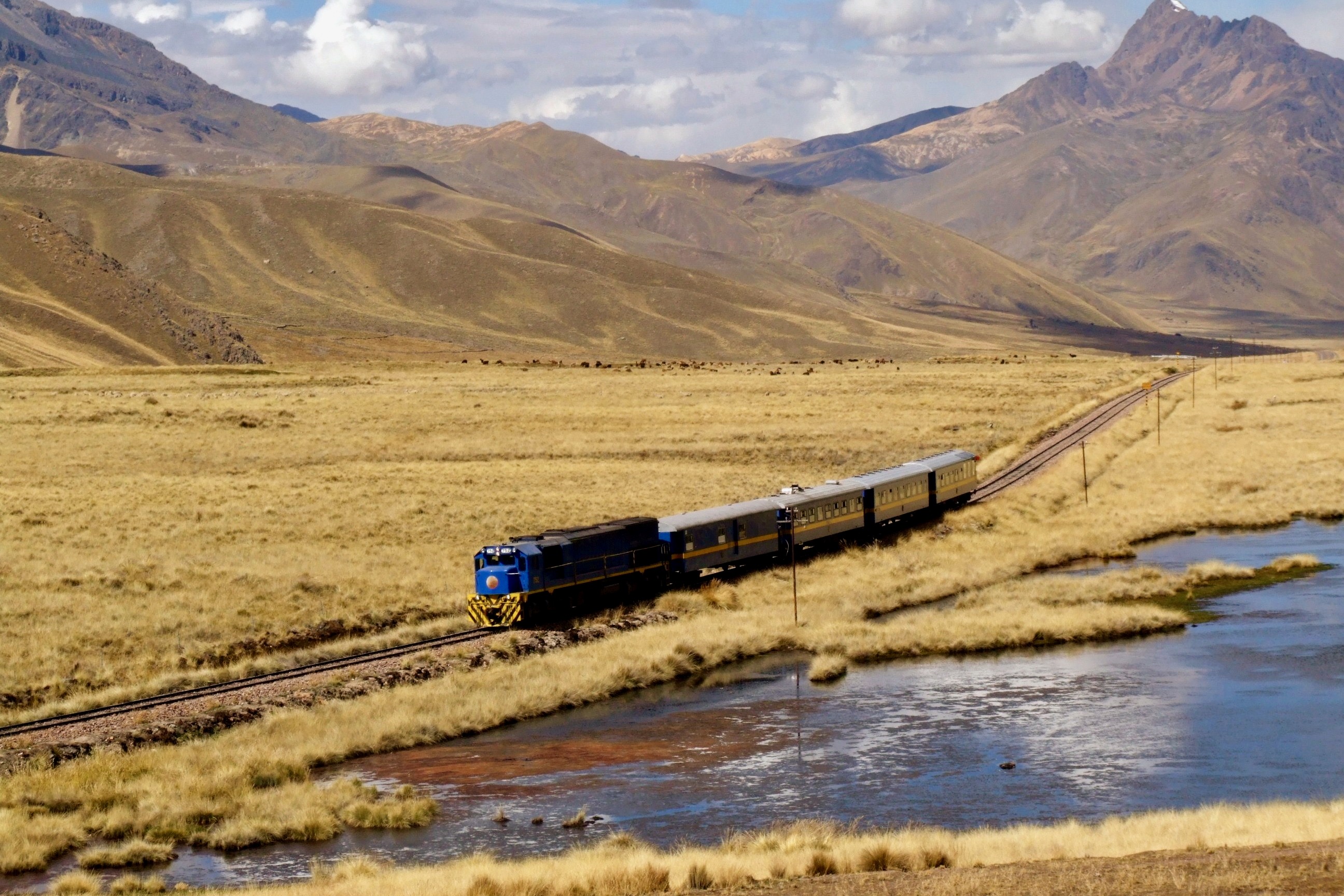
Peru has three long-distance passenger trains, all of them pure tourist trains. The one that travels the longest distance is the Andean Explorer, which runs between Cusco, Lake Titicaca, and Arequipa. A second train runs on the same railroad but only from Puno to Cusco. The third train is the most adventurous because it travels from Lima to Huancayo, passing through the second highest railway station in the world.
The luxurious Andean Explorer train, operated by Belmond, travels from Cusco to Lake Titicaca and then on to Arequipa. The only luxury sleeper train in South America, the Andean Explorer runs once per week in either direction.
The Titicaca Train travels from Cusco to Puno three times per week in either direction. Perurail operates this train, which was the "old" Andean Explorer train. The train travels for 10 hours across 390km (242 Miles). The daylight journey on the Titicaca Train is among the most scenic train trips of the Peruvian Andes. Lunch is included in the ticket price.
The third Peruvian long-distance passenger train runs from Lima to Huancayo and calls at the second highest railway station in the world, 4812 m (15,681 ft) above sea level. The journey takes 12-14 hours. Because of the high altitude, the train has oxygen available and carries a nurse on board. "Clase Turistico" corresponds to first class and "Clase Clasico" to second class,” and the ticket price includes meals on the train. The train runs only sporadically, mostly during public holidays in Peru.
Check-out our Peru Tour:
Peru's railway websites:3.
- Ferrocarril Central Andino
Sounds interesting? Then check out these tours I organize:

Rail South America hosts world-class small-group tours utilizing rail travel whenever possible to discover the most renowned, unique, and unforgettable destinations in South America.
Train travel in Chile
The history of railways in Chile began in 1851, when the first train made his journey from Caldera to Copiapó (80 km). The line was constructed for transport from silver mines to seaport. The majority of railway lines in Chile was constructed for freight transport. The rail networks in the North and South Chile were essentially separate and used different gauge. The Chilean railway network had endless branches of a local nature. Currently Chile has almost 7,000 km of railway lines, most of them are used for freight transport. Train travel in Chile is limited to one long-distance services, few regional trains and tourist trains.
In July and August 2023 railway infrastructure suffered serious damage caused by floods.
In recent years, Chilean railways have purchased new trains and invested in the renovation of some railway lines. There were reinstated regional trains in Temuco area and was introduced passenger service from Chillan to Parral. Unfortunately, the new trains mostly look like trams.
The Chilean government is investing huge amount of money in largest rail investment programme in the history of the country that includes 27 projects through 2027, for example new suburban passenger services from Santiago to Batuco and Melipilla.
Last update: 29.01.2024
Train travel in Chile – timetables
Almost all regular passenger trains in Chile are operated by state-owned Empresa de los Ferrocarriles del Estado (EFE). EFE also runs tourist trains several times a year. Most of trains depart from Estación Central in Santiago. You can check timetable and prices on their website:
Empresa de los Ferrocarriles del Estado (timetable and prices)
There are no trains between Santiago and Valparaiso. Passenger service ceased on this line in 1987. There are plans to rehabilitate existing line and reintroduce passenger trains. The line opened in 1863 is 187 km long and single-track.
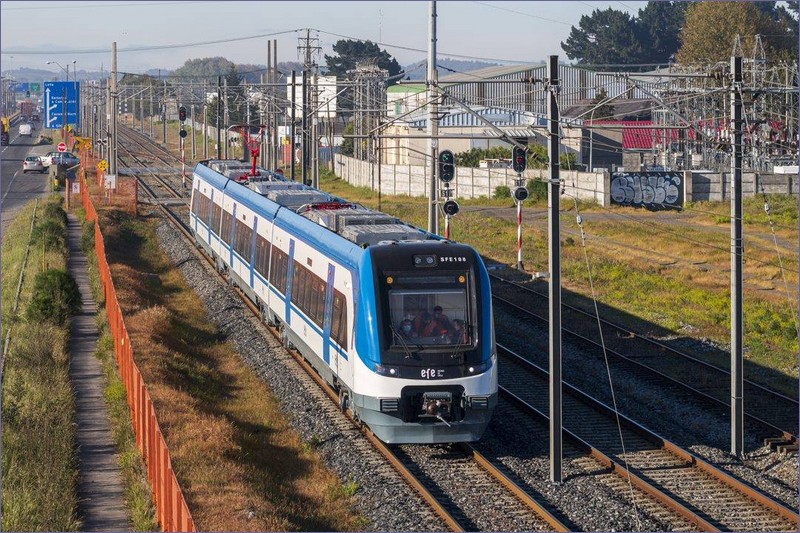
Long-distance services
There is only long-distance train in Chile. Train from Santiago to Chillan covers a distance of 397 kilometers. It stops at 12 stations. At Talca station you can change to the train to Constitución (check in timetable). The train is comprised of comfortable non-compartment carriages manufactured in Spain.
Passengers can choose between two classes:
Salón (2nd class)
– seats arranged 2+2 across the car width – 50% of the seats are oriented in the direction of travel of the train and 50% in the opposite direction – train attendant in each car – air conditioning – catering (snacks)
Preferente (1st class)
– seats arranged 2+1 across the car width – 50% of the seats are oriented in the direction of travel of the train and 50% in the opposite direction – distance between seats is 49 cm – reclining seats – air conditioning – train attendant in each car – electrical sockets (220V)
While I was working on the article, the train was temporarily suspended. In 2023 were delivered new trains dedicated for this train. Trains were produced in China.
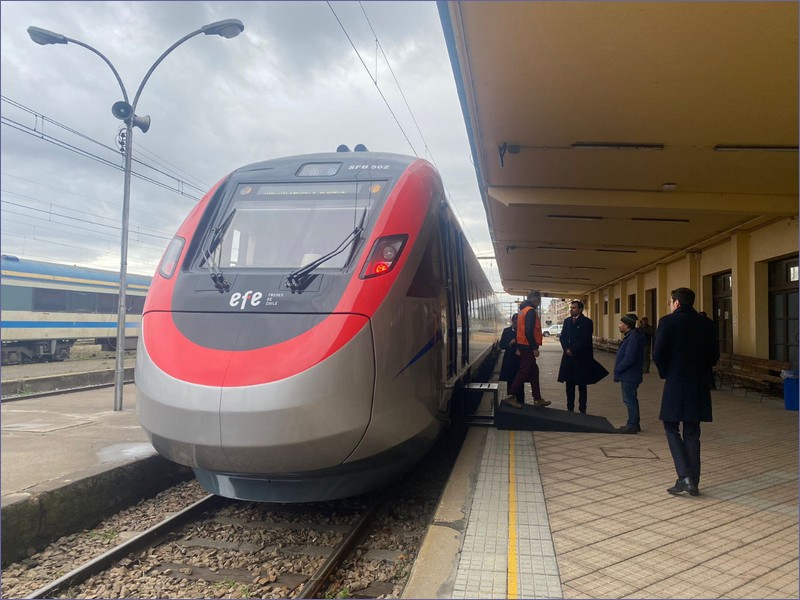
Train travel in Chile – regional trains
In Chile, there are several regional trains running in different parts of the country. Most popular is train from Santiago to Rancagua (80). The connection from Santiago to Rancagua was inaugurated in 2017. Trains run every 15 minutes during peak hours at stop at 10 stations. Some trains are extended to San Fernando (134 km).
Among railway enthusiasts from all over the world, the most famous railway line in Chile is Talca – Constitucion. The non-electrified narrow gauge railway (1000 mm is 88 km long and was opened in 1912. It’s famous for picturesque scenery and old railbus Ferrostaal SB-56 produced in Germany in 1960s, which served this line. Old train was well worn but in good condition. This area is sparsely populated and not well served by roads and the train is the only means of transport that can take you to the doctor or to the market from small village to Constitución. Old railbus in 2023 was replaced by modern diesel multiple units (rather tram like train) with capacity of 80 passengers. The line has been under renovation for several years, but badly suffered during during floods in 2023.
Regional trains in Chile run also on following routes:
Laja – Talcahuano (scenic railway) Talcahuano – Hualqui (Biotren) Coronel – Concepción (Biotren) Temuco – Victoria (65 km) Temuco – Picturefque (29 km) Chilean – Parral (58 km)
Biotren trains are operated by Ferrocarriles Suburbanos de Concepción (EFESUR). Many of suburban trains have no toilet on board.
In Temuco is located Railway Museum in historic engine shed, but I don’t know whether is open to public.
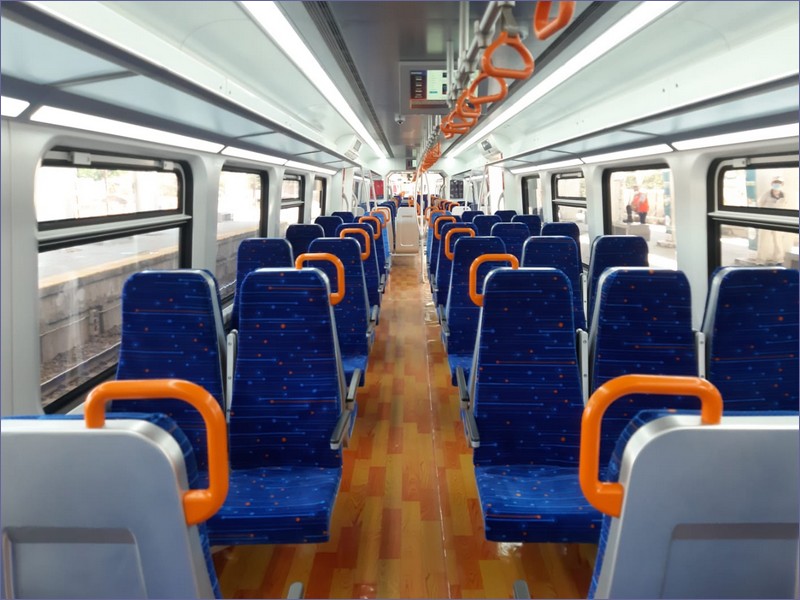
Suburban trains
There are suburban trains in Santiago and Valparaiso area. Metro Regional de Valparaíso (MERVAL S.A.) operates the commuter trains between Puerta Station in Valparaiso and Limache (43 km). Trains stops at famous seaside resort Viña del Mar.
Several times a year, mainly on public holidays, restored electric trains AES-11, manufactured in Argentina in 1970s, run on suburban lines in the Valparaiso area as a tourist train (between Puerto Station and Maestranza Barón).
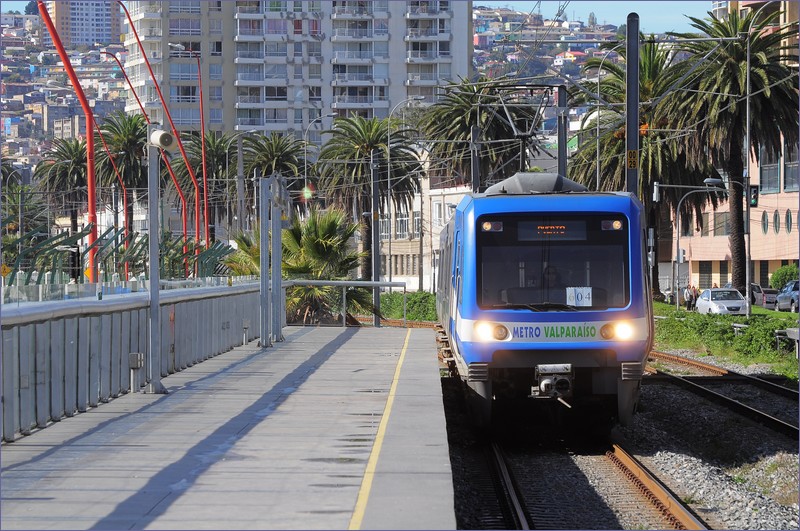
Train travel in Chile – international trains
Chile has international railway connections with all adjacent countries. Railway lines to Bolivia are used only by freight trains. Transandine Railway – mountain scenic railway line to Argentina was abandoned in 1984. There were plans to rehabilitate and re-open line for freight and passenger traffic. Salta-Antofagasta railway line is used only for freight traffic.
There are passenger trains between border towns Arica (Chile) and Tacna (Peru). Trains are sometimes suspended, later reinstated and nobody knows where to find the timetable.
Railways in Americas by country
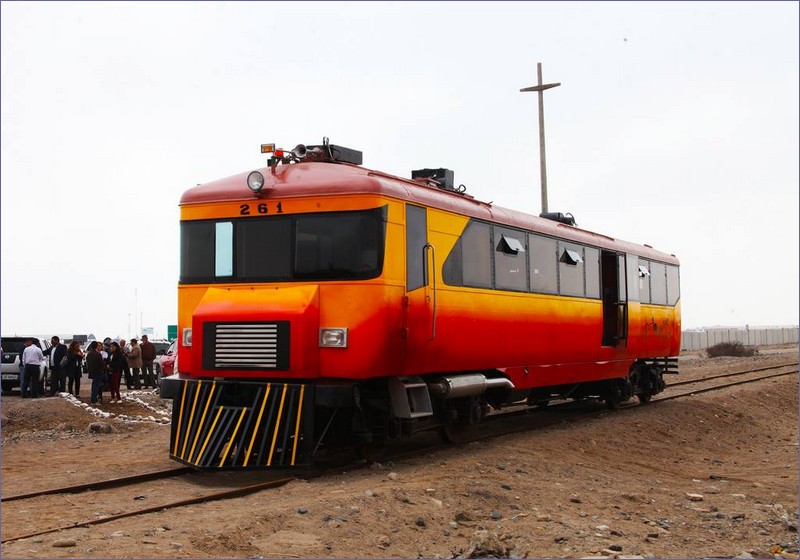
Getting around in Chile is one of South America's great adventures

Aug 20, 2023 • 8 min read
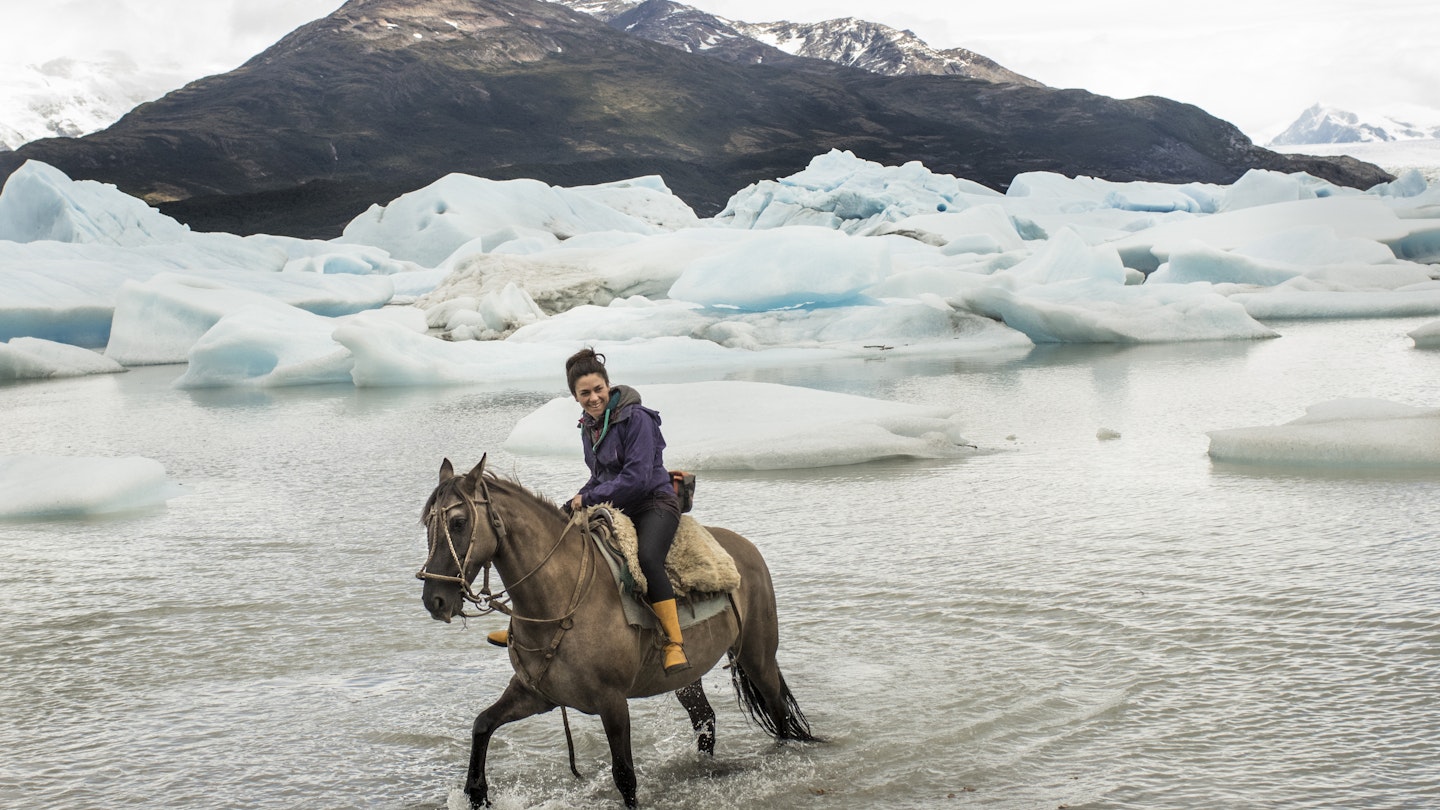
Whether you choose to move by bus, boat, train or airplane, Chile is full of highlights to enjoy © Andria Hautamaki / Getty Images
Chile may be narrow, but the distance between Punta Arenas, in the south, and Arica, in the north, is about 5000km (3100 miles). That’s about the same as the distance between New York and San Francisco. Needless to say, getting around this fascinating South American country poses some challenges.
This long and slender South American country is only 356km (221 miles) wide at its widest point, but finding transport from east to west is harder than finding transport between the north and south. Most long-distance bus routes trace the spine of the country, running north and south from the capital, Santiago.
The key thing to keep in mind is that navigating Chile takes time. Roads become increasingly rugged as you approach Chile's southern tip and boats become an essential part of the travel mix, with the reward of spectacular scenery as you navigate between the islands. Whether you choose to explore by bus, boat, train or airplane, here is the lowdown on the best ways to navigate up, down and all around Chile.
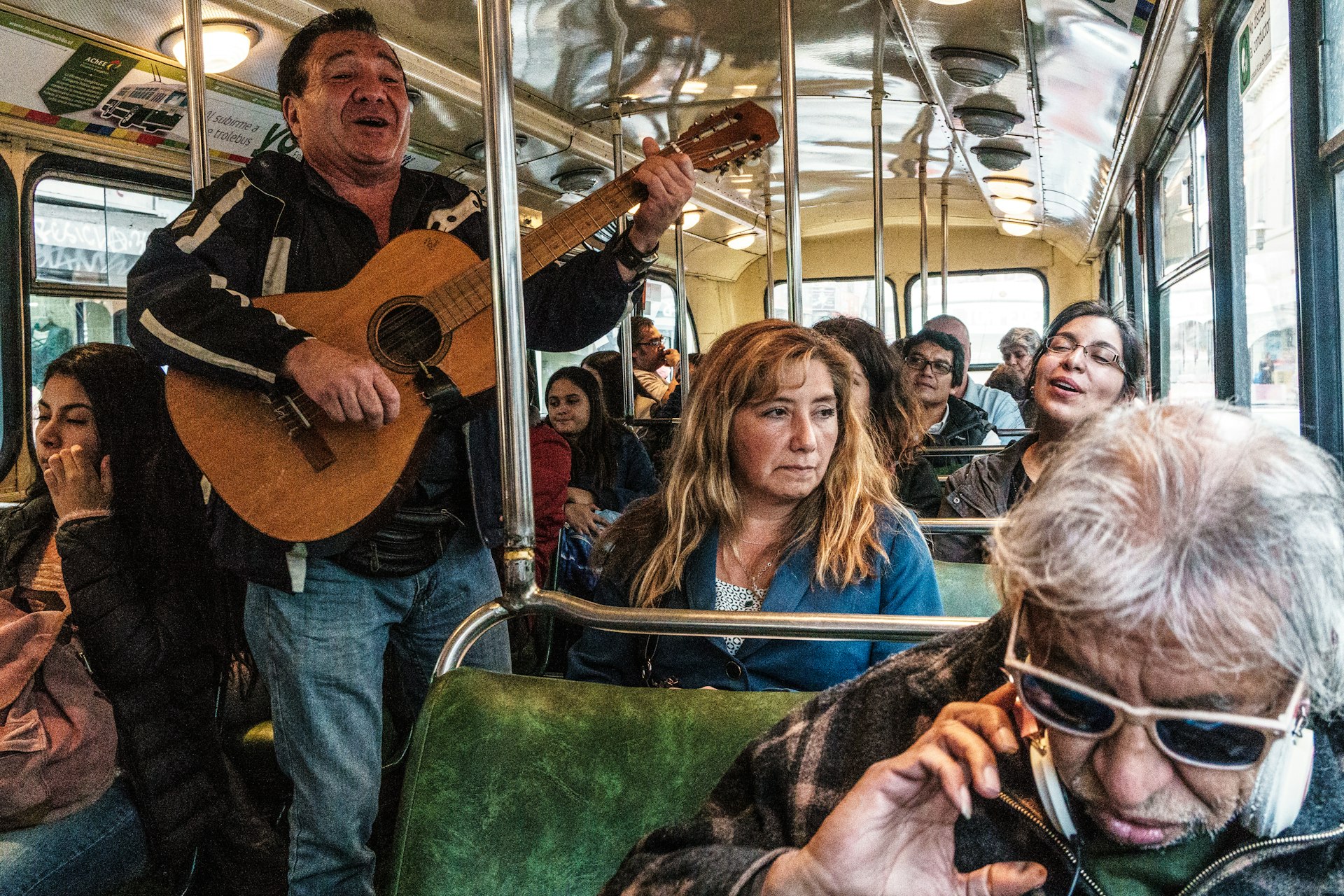
Cover long distances like a local by bus
Buses are the most popular way to get around in Chile for locals and travelers on a budget. Pullman and Turbus are the largest companies and dominate the market, with routes running all over the country. Smaller companies can often be a better bet for niche destinations, including small resort towns or surf beaches.
Recorrido is a good English-language website for comparing fares and booking without a Chilean ID number (which many other bus booking websites require). In general, buses are quite comfortable, air-conditioned and often have onboard entertainment, wi-fi and USB outlets. If it’s a long-distance bus, you can also expect an attendant to serve snacks or a light breakfast.
Unlike elsewhere in Latin America, buses generally depart at the scheduled time in Chile, though arrival times will depend on traffic conditions, particularly if you’re traveling to or from the congested capital, Santiago . Premium seats are sold as semi cama or salón cama and are usually wider, more spread out and have a deeper recline; they tend to be in a smaller downstairs section of a double-decker bus. You won’t regret spending the extra pesos on any long-haul trip.
Bus terminals are not always in the best part of town and many urban bus stations have a reputation for petty crime. If possible, travel in pairs or groups, and keep a watchful eye on your valuables and luggage. Also, be sure to confirm the arrival station – different bus companies may use different stations in larger cities, rather than every company using the same bus stand.
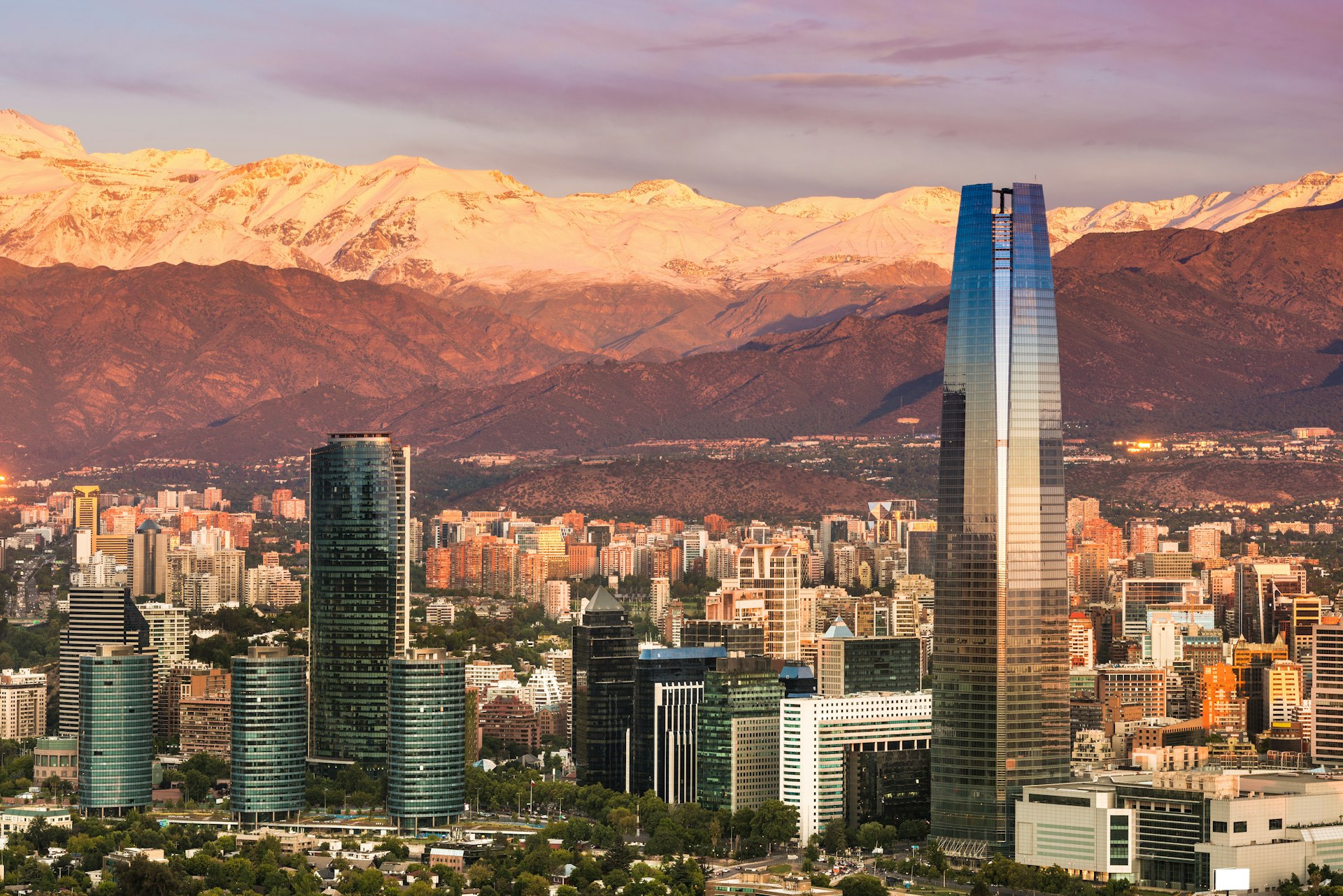
Explore Chile's cities by taxi
Most cities in Chile have taxi services running around downtown, and to and from airports. Prices are quite affordable by international standards. Ride-sharing apps such as Uber and Cabify work in Santiago and many regional cities, and you can use them to summon a ride.
Very few drivers speak English, so if you don't speak Spanish, apps are an easiest way to make sure you end up where you want to go. Licensed taxis can be the best way to get around after dark in large cities, to avoid the risk of petty crime.
Trains are useful for urban travel
The Santiago Metro is, by far, the best and cheapest way to get around the capital. Its sprawling network is growing rapidly, and trains will take you to most places you’d want to visit (except the airport). You can purchase a single fare or load up a " Tarjeta bip! " with cash for multiple trips on both the metro and city buses (which are now mostly electric).
No other city in Chile has a metro system, but Valparaiso and several other large cities have commuter rail networks, supplementing widespread local bus services. Trains were once a pillar of domestic travel for longer routes, but are now little used outside of Chile's Central Valley; the Empresa de los Ferrocarriles del Estado (EFE) service from Santiago to Chillán is the only route likely to appeal to visitors, though there are also occasional tourist trains from Santiago to coastal resorts or nearby wine valleys.

Bikes are great for city exploring and wilderness rides
Santiago is one of the more bike-friendly cities in Latin America, with a vast network of ciclovias (bike lanes) that you can use to get around. There are several different bike-share options; the most common is Bike Itaú . Other cities with strong bike cultures include Viña del Mar , Concepción, Temuco and Puerto Varas.
Many visitors travel to Chile for multi-day cycling trips around the scenic Lake District or down the Carretera Austral in Central Chile. Bring (or hire) a bici todo terreno (mountain bike) or touring bike with beefy tires. You also need to be ready for the climate; rain is common from Temuco south, while water can be in short supply on routes north from Santiago. Carry food and plenty of drinking water for long-distance rides.
Chilean motorists are usually courteous, but on narrow two-lane highways without shoulders, cars can be a real hazard. Ferries in Patagonia often charge a bicycle fee; you can also transport your bike by bus to avoid long rides. Most towns have bike-repair shops but carry spare inner tubes and a repair kit to be safe. Don't expect much support infrastructure in remote areas such as the Carretera Austral.

A rental car opens up lots of wild adventures in Chile
To properly explore Chile’s wildest corners, you’ll need to rent a car. Most highways and byways are well-maintained, though in rural areas in the Andes, on the Altiplano or in Northern Patagonia , roads are often unpaved and riddled with potholes. Carrying a drum of extra gas on the Altiplano is a must, while flat tires on the Carretera Austral are par for the course (always check your spare is in good condition).
Rental cars in Chile tend to be slightly more expensive than in North America or Europe, particularly if you want an automatic car; manual cars are the more common and cheaper option. Fuel costs are also at the higher end of the scale, while hefty tolls on the Pan-American Highway (and throughout Greater Santiago) can add up quickly. Some companies will accept a driving license from your home country; others ask for an International Driving Permit.
If you plan on exploring areas away from the capital, it’s best to rent a car on arrival instead of driving all the way from Santiago. Note that most rental companies don’t allow you to cross the border into Argentina, Peru or Bolivia.
Cover long distances in Chile by air
You may want to avoid flying for environmental reasons, but flights can save huge amounts of time on long-distance trips, for example from Santiago to the far south of Chile. LATAM is the principal airline in Chile, with the widest network of domestic flights and highest quality of service. Sky Airline and JetSmart are newer low-cost carriers that also cover much of the country and can have slightly cheaper fares (sometimes not much more than the price of a bus ticket for well-trafficked routes).
Be careful to read the fare details, however, as the cheapest tickets typically only include one personal item of luggage such as a small backpack. All commercial Chilean carriers have a good reputation for safety, so you can let timetables and prices determine which airline to fly with.
In general, most regional capitals in Chile have an airport, with the exception of those close to Santiago, which rely on Arturo Merino Benítez International Airport as their main hub. If you have a bit of flexibility, flying into busier hubs such as Puerto Montt (in the south) or Calama (in the north) can bring cheaper fares and more convenient flight times.

Explore Chile's southern islands by boat
Traveling in the south of Chile can often be easier – and more fun – by boat than on land. Popular ferry routes through the fjords include Puerto Montt to Puerto Natales, Puerto Yungay to Puerto Natales and Punta Arenas to Puerto Williams – all routes with amazing scenery en route. Ferries also link offshore islands such as Chiloé and the various islands of Tierra del Fuego with the mainland.
Several ferry companies in Northern Patagonia whisk travelers across the border to Argentina. Consider taking the scenic ferry route from Petrohué (near Puerto Varas) to San Carlos de Bariloche, or the adventurous route from Villa O’Higgins (at the end of the Carretera Austral) to Candelario Mancilla for onward hikes to El Chaltén .
Traveling the Carretera Austral by car requires timing your journey to match the departure times for several car ferries along the way at points such as La Arena, Hornopirén and Caleta Yungay, but fares for cars and pedestrians are reasonable.
Accessible travel in Chile
Chile does not have the best infrastructure for travelers with disabilities, but a dedicated group of activists is fighting to make the country more accessible. Access ramps are not common except in larger cities, though the law now requires new public buildings to provide disabled access. Few hotels have rooms adapted for those with impaired mobility, but lifts are common in large hotels.
The Metro in Santiago and some newer urban buses have access ramps and spaces for wheelchairs, and some street crossings have noise-indicated signals for the blind. Those in wheelchairs will find Chile's narrow and poorly maintained sidewalks awkward to negotiate.
One of the largest tour companies for travelers with disabilities, Wheel the World , is based in Chile and it runs tours up and down the country. For more information, check out Lonely Planet’s Accessible Travel Online Resources .
This article was first published Oct 19, 2021 and updated Aug 20, 2023.
Explore related stories
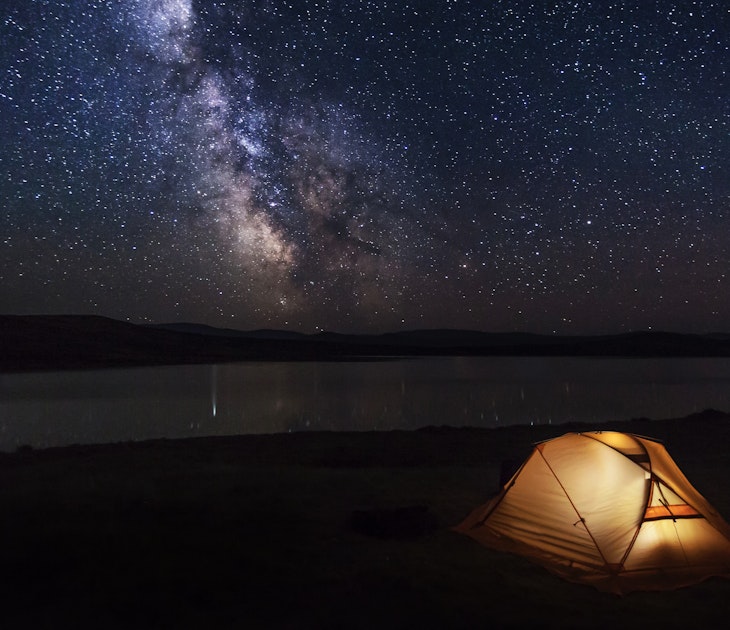
Astrotourism
Dec 27, 2023 • 8 min read
Spectacular things are happening in the skies all over the world in 2024. Read on for a year-long guide to where you will want to look up.

Dec 8, 2023 • 6 min read

Dec 1, 2023 • 6 min read

Nov 18, 2023 • 7 min read

Nov 6, 2023 • 8 min read

Sep 26, 2023 • 7 min read

Sep 23, 2023 • 7 min read
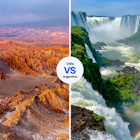
Sep 21, 2023 • 7 min read

Sep 17, 2023 • 7 min read
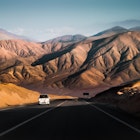
Aug 23, 2023 • 4 min read

Train Transportation in Latin America
Classic and modern rail trips.
on: 16/05/23
by: Lisa Gembrini, Staff

The means of transportation to travel in Latin America are not limited to bus, car and plane. We want to introduce you to the thoroughly unique and enjoyable alternative of train transportation in Latin America. This popular means of transportation is used in several countries of the region to transport cargo and passengers alike, making it one of the best means of transportation for its speed and economy.
In fact, in some countries in Latin America, locals prefer the train system as their means of transportation, even if it does not connect every corner that the bus system would. For example, entirely using the train, you can get all the way from Buenos Aires to Bariloche in Argentina. On the train you can get to many popular tourist sites, and enjoy watching wildlife as you go by as the rail goes through more remote areas far from the noise of constant traffic.
Train from Santiago to Chillan, Chile
Currently, the train system from Santiago to Chillan in Chile transports at least 230 thousand passengers a year on a 398-kilometer route that separates one Chilean region from the other, and is the fastest means of land transportation to move between these areas.
To travel by train from Santiago to Chillan saves at least an hour of travel, when compared to the service by bus or private vehicle. Once in Chillan, you will have the option of daily excursions such as climbing the Chillan volcano, or visiting the longest ski slope in the country called Las Tres Marias . For your convenience, you can book your train tickets on the AndesTransit platform for this and other train routes, as well as get quotes for travel throughout Chile, acquire information for getting around and making connections for the different destinations you want to reach.
The passenger train system in Chile continues to grow as the government works through a list of expansion projects, so look forward to more passenger routes and new destinations. The Chilean State Railway Company is managing the development of the project that will connect Santiago with the ports of Valparaiso and San Antonio, known as the "Santiago - Valparaiso Train" .
Train from Buenos Aires to Bariloche, Argentina
Living the experience of traveling on the Patagonian Train is something you should not miss, as this is an unforgettable experience in which you can see how the landscapes change through the window accompanied by all the comfort and class that the train service offers, from cabins to first class services with comfortable, spacious, heated spaces and cafeteria service on board. All these options are available for booking at Andestransit .
Another advantage of this means of transportation is its special schedules and fares that can save you money. For example, train tickets to Bahia Blanca (southern Argentina) have seasonal discounts, which will be useful for you stretching out your budget to include seeing other sights nearby.
For train travel from Buenos Aires to Bariloche, there is now a project to link two passenger trains that are in operation, giving the possibility to thousands more tourists who travel this way to choose the railroad as their most economical way to move around Argentina .
Train from Bogota to Zipaquira, Colombia
Traveling by train in Bogota is designed more as a tourist attraction that takes you on a vintage experience from the capital city of more than 10 million inhabitants to a nearby wonder of nature, the largest salt reserves in the country. The train trip to Zipaquira is characterized not only by the comfort offered by the transportation units, but also by the experience that awaits you, as you leave the concrete jungle and start to see the imposing plains of the savannah of Bogota, while the mountains of Santander grow larger as the excited travelers approach the destination.
But, while the view is great, the real prize is in Zipaquira itself, as there you will encounter the spectacular Salt Cathedral and the Nemocon Mine, where you can enter another world of glowing natural colors and underground worship sanctuaries, ride subway down into mines, and leave the modern world behind you.
To get to know these impressive destinations, use AndesTransit's search tool to find out the fares and itineraries for traveling by train from Bogota to Zipaquira, and book your train ticket according to your preferences. This will save you from the long lines you'll find at the station on the day of your trip, and above all, you'll have enough peace to enjoy this spectacular Colombian route.
Train from Cusco to Machu Picchu, Peru
Traveling by train to Machu Picchu, one of the seven wonders of the world , is entirely possible. There are two stations from which you can travel by train to Machu Picchu from Cusco: from Poroy, or from Ollantaytambo. Whichever route you take, you will arrive in Aguas Calientes, a small town where all the travelers arrive and from where you can reach the Inca ruins. Both options offer different packages and prices depending on your budget, especially for those who prefer the comfort and convenience of the bus. Remember that getting to Cusco from Lima is not a challenge, as you can go to AndesTransit and book departures for both day and night travel.
It should be noted that this destination is one of the most sought after, in fact everyone who goes to Peru wants to visit this place so rich in knowledge, history, and culture. So, train tickets in Peru are usually sold out weeks or even months in advance. To avoid the hassle, or being forced to make the trip walking for three days, we recommend booking your train ticket a few months before your trip. If you search early, you can find your train ticket to Machu Picchu at lower prices, because there are usually discounts at certain times of the year.
Cusco is the favorite destination of millions of tourists and travelers from around the world, and for many of them, AndesTransit is the favorite tool to plan their trip, book tickets and above all make the most of visiting the Inca territory. If you want personalized help and discounts for your trip, subscribe to the BusClub, and then just enjoy the trip while AndesTransit takes care of travel hassles.
Recommendations for traveling by train in Latin America
All aboard the trains in Latin America! Now that you have read about some of the most enigmatic, wild and unique train routes in the region, don't forget to take into account these recommendations to enjoy your trip even more:
- Avoid excess luggage and take only what you need when traveling by train. Some hotels in the departure city will allow you to store your luggage for a few days while you visit other places by train.
- Take your time. Although it may be a last minute trip, traveling by train is the best way to disconnect from the busyness of travel. Don't rush your experiences, and use all your senses to savor what the train introduces you to.
- Locate the departure station so that on the day of your trip you arrive directly with your ticket and avoid the lines. When you buy at AndesTransit, we will send you your ticket along with the departure address of the service to avoid problems.
- Now you are ready and know everything you need to travel by train in Latin America. Use the search engine below to find your tickets and let the adventure on the rails begin.
Search for train tickets and schedules
Train transportation orientation map.
Similar to Train Transportation in Latin America
- Argentina Transportation
- Bolivia Transportation
- Brazil Transportation
- Central America Transportation
- Chile Transportation
- Colombia Transportation
- Ecuador Transportation
- French Guiana Transportation
- Guyana Transportation
- Mexico Transportation
- Paraguay Transportation
- Peru Transportation
- Suriname Transportation
- Uruguay Transportation
- Private and Shared Shuttles
- Water Transportation
- Migration Assistance
Traveleres here have also enjoyed...

Title: Around the World in 80 Trains: A 45,000-Mile Adventure
Author: Monisha Rajesh
Format: e-Book
Abstract: Around the World in 80 Trains is a celebration of the glory of train travel and a witty and irreverent look at the world.
More information: Click here
Santiago-Chillán train: first two trains arrive that will be the most modern in South America
They are part of a plan to offer 12 daily services (six in each direction), at a speed of 160 km/h. the number of passengers transported will increase from just over 315,000 in 2022 to nearly 800,000 once fully operational. .
The Trains for Chile plan continues to offer good news, this time about the Santiago-Chillán service. Yesterday, the first two trains that will renew the service were unloaded; they will transform it into the most modern in South America.
The Santiago-Chillán section is currently the only regular long-distance service available (400 kilometers). Along with the renewal of the trains, the project includes the improvement and rehabilitation of the Rancagua, San Fernando, Curicó, Molina, San Javier, Linares, Parral, San Carlos and Chillán stations.
It also includes the construction of a maintenance workshop and the incorporation of new trains, which will enable express services of 3 hours 40 minutes (reducing journeys by 1 hour 20 minutes) and 4 hours 5 minutes for the regular service (reducing journeys by more than 50 minutes).
New trains
With an investment of US$70 million, the six trains for the Santiago-Chillán service were made in China by CRRC Sifang. The recently-arrived lot contained the first two.
The remaining four are expected to be here by mid-2023. Once they arrive in Chile, they will be subjected to calibration and testing that will last an estimated six months. The trains are therefore expected to come into use during the third and fourth quarters of 2023.
The trains are a type of bi-mode multiple unit (BMU), with bimodal feeding systems, which means they can work both with electrical power through overhead wires and with diesel fuel. They each have four cars, with a total capacity of 238 seated passengers per train. They are the most modern in South America and will be able to move at a speed of 160 kilometers per hour.
They also offer better benefits when circulating and lower maintenance costs, which will allow 12 daily services to be provided (six in each direction). Three services are currently provided in each direction, and four in summer. The number of passengers transported will increase from just over 315,000 in 2022 to nearly 800,000 once fully operational.
Main characteristics
- Capacity for 238 seated passengers in a high-standard class.
- Maximum operating speed of 160 km/hour.
- Automatic access and level doors. This is different from current trains, which use stairs for passenger entry.
- Bathrooms with universal accessibility. Current trains do not operate to these standards.
- Spaces conditioned for wheelchairs for persons with reduced mobility (PRM), improving accessibility.
- Cafeteria space and self-service machines on board.
- Space for bags, suitcases and other packages (racks above seats, at the end of cars, etc.), thus increasing available space.
- Reclining seats. The cheapest seats on current trains do not recline.
- Passenger information systems using LED screens and a sound system that provide information on travel conditions in real-time, similar to air services.
- Change of power supply for train traction. Automatically switches between electric and diesel mode (bimodal or BMU) in the event of failures in the electric power system, which increases reliability.
Follow us on our social media:
Nomadic Matt's Travel Site
Travel Better, Cheaper, Longer
Chile Travel Guide
Last Updated: August 30, 2023
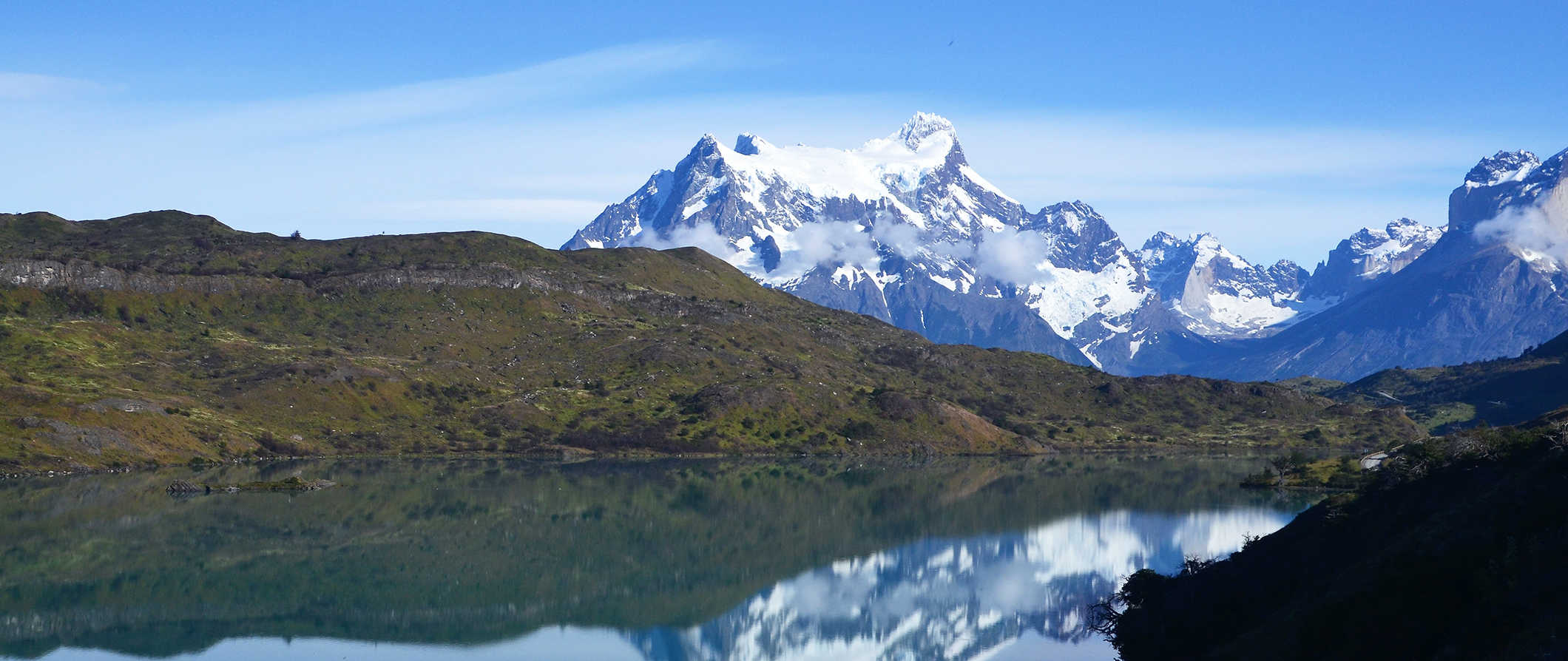
Chile is one of the most slender and longest countries in the world — it’s just 150 miles across at its widest point! From the snow-capped volcanoes of Patagonia and blistering heights of the Andes to world-class wineries and Maoi sculptures of Easter Island , there are a lot of wonderful things to see in Chile.
Traveling to Chile was one of the best experiences I’ve had in South America. It just constantly blew me away. It’s one of the most developed South American countries (the capital, Santiago, is a tech hub for the region), the people were awesome, the food was incredible, and the scenery made me feel in awe of nature.
Not only is there lots to do but the country is budget-friendly, which really rounds it out as a must-see destination.
Use this travel guide to Chile to plan your visit, save money, and make the most out of your trip!
Table of Contents
- Things to See and Do
- Typical Costs
- Suggested Budget
- Money-Saving Tips
- Where to Stay
- How to Get Around
- How to Stay Safe
- Best Places to Book Your Trip
- Related Blogs on Chile
Top 5 Things to See and Do in Chile
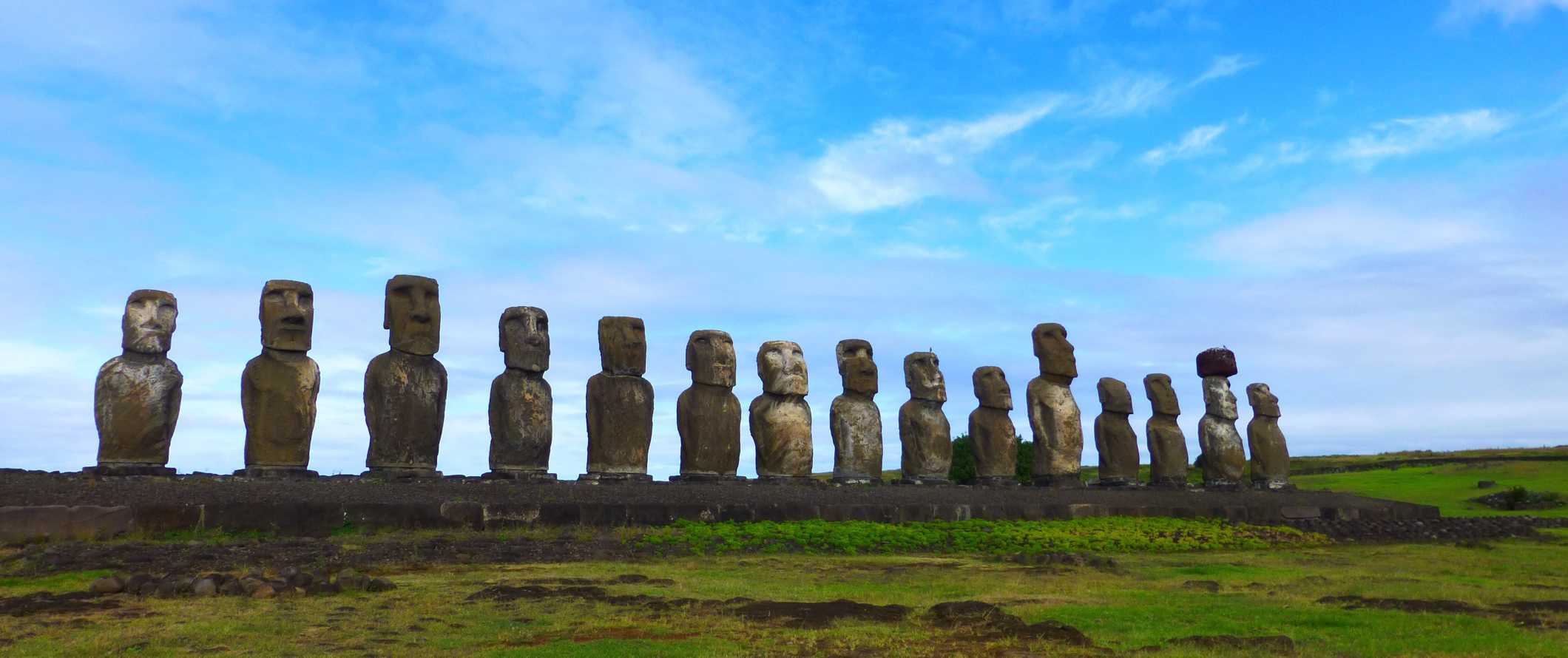
1. See Easter Island
Easter Island, located 3,540 kilometers (2,200 miles) off the coast of Chile, is the most isolated inhabited island on earth and home to the Rapa Nui Polynesian indigenous people that have lived there since 300 CE. Named after explorer Jacob Roggeveen’s ‘discovery’ of the island on Easter Sunday in 1722, this protected UNESCO World Heritage Site is famous for its Moai sculptures (the iconic big faces dotted all over the island). However, there is so much more to the island, including thousands of archaeological sites, volcanic craters and tunnels, pristine beaches, and excellent diving. To explore this magical place, hike around the dramatic cliffs and extinct volcanoes around the Moai archeological sites or around the spectacular Rano Kau crater and the Ana O Keke Cave. Or go sun yourself on Anakena’s beautiful white coral sand beach or Ovahe, a secluded pink sand beach hidden in a little cove with sparkling turquoise waters.
2. Discover Torres del Paine National Park
Torres del Paine lies between the Andes and Patagonian steppe and is made up of snow-clad mountains, glacier lakes, and some of the best hiking in Chile. It also happens to be one of the most beautiful and desolate regions on the planet. There is no end to the scenic views here, including the three rugged, towering peaks of Central, Monzino, and Dagostini as well as the Southern Ice Fields. Be sure to wander around the enchanting Sarmiento Lake and see the Amarga Lagoon and the giant Salto Grande Waterfall. Admission is 29,250 CLP for up to three days for foreigners.
3. Explore Santiago
Chile’s capital is a thriving city and home to a third of the country’s entire population. Founded in 1541, this vibrant capital offers gorgeous panoramas, great restaurants, tasty locally-produced wine, and of course, Barrio Bellavista’s nightlife. There are quite a few must-see attractions in the city: Parque Metropolitano (a large urban park) as well as Cerro San Cristóbal, where you can hike around taking in beautiful views of the city, shouldn’t be missed. The Museum of Human Rights is also a must-visit site, as it chronicles the dark years of Pinochet when thousands of people ‘disappeared’ at the hands of his violent regime.
4. Marvel at San Pedro de Atacama
Located in Chile’s Norte Chico northern region, San Pedro de Atacama is one of Chile’s hottest tourist towns. Literally. Sitting at 2,400 meters (7,874 feet), the ancient town is in the driest desert in the world (it reportedly hasn’t seen rain since 1870). But the rock formations here are stunning, and it’s the perfect place to stargaze. This little town with adobe houses and dirt streets only has 5,000 inhabitants but plenty of tourists visit up to explore the stunning valley landscapes, the Atacama Salt Flats, and the Chaxa and Miniques Lagoons. Don’t miss the famous beautiful jagged geological formations of Valle de la Luna and Valle de la Muerte valleys that can be reached by bicycle from town.
5. Visit colorful Valparaiso
Nicknamed the “Jewel of South America,” this colorful city near Santiago is a mesh of bohemian bars and Victorian architecture along a coastline of sheer cliffs. The laid-back atmosphere and beauty of the area have inspired generations of writers and poets, including poet Pablo Neruda. Be sure to bring your camera because the whole city is painted in vibrant Insta-worthy colors. Take the Ascensor Reina Victoria funicular up to the Concepcion neighborhood and have a cocktail on the hilltop overlooking the city as you try some of the delicious local seafood dishes. Also, be sure to check out two of Chile’s top beaches nearby, the upscale Viña del Mar and the super cool Reñaca.
Other Things to See and Do in Chile
1. see the san marcos cathedral.
The same architect who was responsible for the Eiffel Tower, Alexandre Gustav Eiffel, designed San Marcos Cathedral. The cathedral is in Arica, Chile’s northernmost city, and was built to replace the original cathedral destroyed by an earthquake in 1868. The new cathedral was commissioned in 1876 and is a rare example of Gothic architecture in South America.
2. Get tipsy on a wine tour
Chile’s vineyards have been producing world-class wine for over 400 years. There are plenty of tours available around the country as vineyards stretch the entire length of Chile. I think the best wineries are located near Santiago. Expect to pay around 15,000-20,000 CLP for a basic tour, though fancier tours at more prestigious vineyards can easily be over 55,000-100,000 CLP per person. Most tours last 4-8 hours.
3. Hike a volcano
Chile is home to the world’s tallest active volcano, Ojos del Salado, which lies in the Andes near the Argentine border. Villarica and Osorno are also popular volcanoes (and both lie close to lakes). Most volcanoes in the country have thermal spas at their base too. Experienced hikers can do the trip on their own, though there are plenty of guided tours available for travelers looking for a group tour. Most multi-day tours span 10-14 days and cost millions of pesos. For day trips like the Cajon de Maipo, Osorno Volcano, Termas Colina, and Petrohue Falls, expect to pay 32,000-56,000 CLP per person.
4. Valle de la Muerte
Also known as “Death Valley,” this is an astounding place to hike, go horseback riding, or even go sandboarding. Located in the northeast of the country near San Pedro de Atacama, there are also guided moonlight walks that take you out over the rocky martian landscape. You can rent a sandboard for around 8,300 CLP or go on a sandboard tour for 23,000 CLP per person which includes transportation. There are even tours that sandboard at midnight, using spotlights to light the way (they have a DJ too!). If you’re looking to hike, check out the Corniza Trail. It’s a 7-hour loop that’s relatively easy (many families do it).
5. Santuario de la Naturaleza Valle de la Luna
Also located near San Pedro de Atacama, the “Valley of the Moon” is an otherworldly landscape that is home to stones and sand formations that have developed an extraordinary texture due to thousands of years of winds and flooding. The rock formations look like the surface of the moon, hence the park’s name. It’s a great place to go hiking — just don’t forget to bring water as it can get quite warm. Tours are available for around 26,000 CLP per person.
6. See the El Tatio geysers
A popular tourist attraction, these geysers are incredibly beautiful and well worth a visit as they make up the largest geyser field in the Southern Hemisphere (and they are the third largest in the world). You have to get up around 4am as all the tour companies aim to get you there by sunrise and it’s a 90-minute drive from San Pedro de Atacama. But it’s worth the effort! Bring a swimsuit as there are thermal pools nearby. Tours cost around 33,000-38,000 CLP. You can visit without a tour (admission is 15,000 CLP) but you’ll need to rent your own vehicle to get there.
7. Museo de Bellas Artes
This museum is one of the best in the country. Located in Santiago, it’s home to a wide display of fine art, sculptures, photography, paintings, and digital media. Built in 1910, the building is somewhat small but the architecture is equally as impressive as the collection within (it was built in the Beaux-arts style and has a very Parisian feel to it). Admission is free.
8. Mingle among the wealthy in Viña del Mar
Considered a Chilean Miami, this city next to Valparaiso serves as a hotspot for casinos, upscale cafes, and seaside restaurants. Even if you don’t have money to burn, it’s an interesting place to spend an afternoon people-watching as you wander the beach promenade. You’ll find lots of world-class restaurants here. If you’ve got some money to burn, stay a night!
9. Tour Pablo Neruda’s homes
One of the world’s most famous poets used to call Chile home. With homes in Valparaiso, Santiago, and Isla Negra, this Chilean icon stuffed a lifetime of knick-knacks, literature, and interesting maritime architectural pieces into his three abodes. All of them are open to the public. Even if you’re not a huge fan of his work, his homes alone are an interesting glimpse into Chilean culture as Neruda is a cultural icon and one of the most famous poets of the 20th century. Admission to each home costs around 7,000 CLP and includes an audio-guide system in multiple languages.
10. Get off the beaten path
Some lesser-known treasures worth visiting in Chile are Frutillar (a beautiful lakeside community in southern Chile’s Los Lagos Region), Lonquimay (another gorgeous lakeside town in the Malleco Province of southern Chile’s Araucanía Region), Caleta Tortel (a rugged seaside town with wooden walkways instead of streets in the heart of Patagonia) and Coyhaique (a less pricey Northern Patagonia city that’s a hub for great nature adventures). If you’re looking to beat the crowds, be sure to visit some of these lesser-known destinations.
11. Swim in the world’s largest pool
If you’re looking for some luxury, head to the Crystal Lagoon, home to the world’s largest swimming pool. It’s located at the San Alfonso del Mar resort in Algarrobo, just west of Santiago. The pool is the size of twenty Olympic swimming pools and is the biggest recreational swimming pool in the world, requiring 66 million gallons of water just to fill it! A 1-2 bedroom apartment rental here costs 70,000-120,000 CLP per night.
Chile Travel Costs
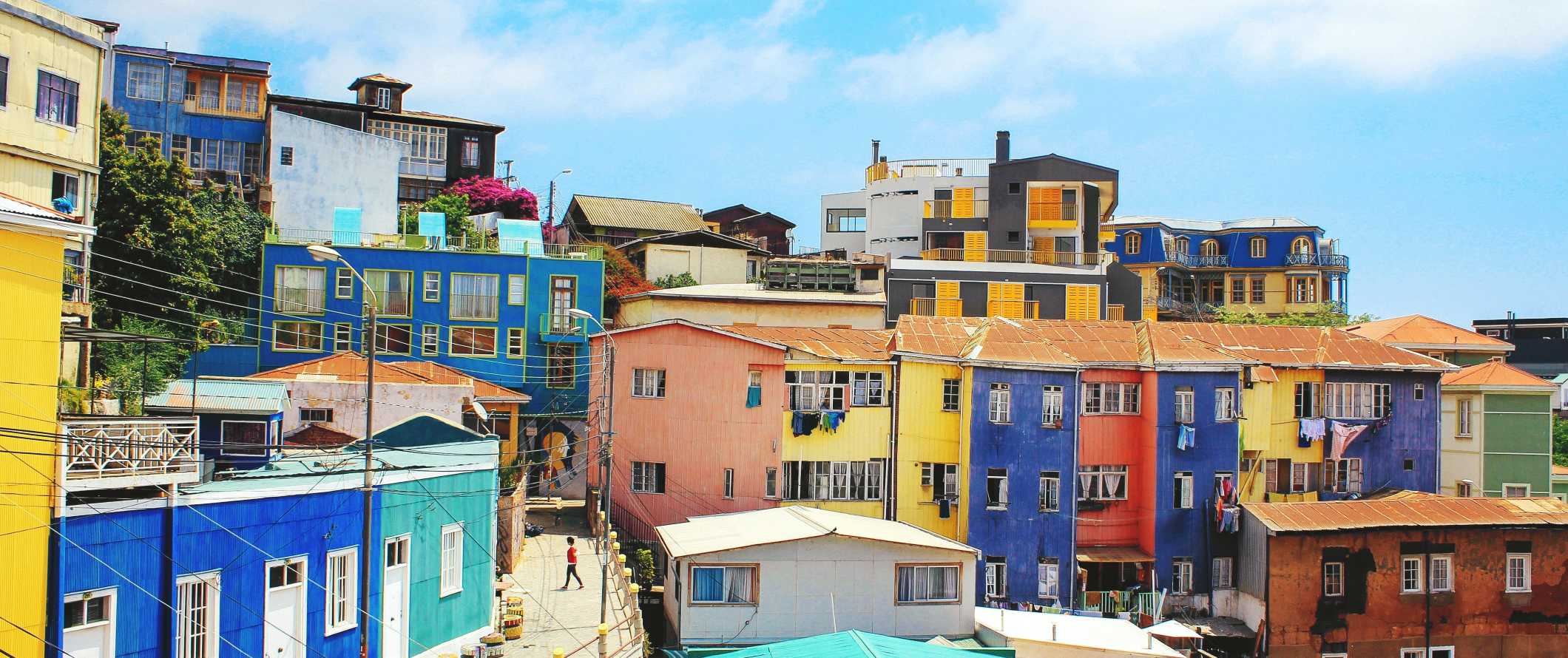
Accommodation – Hostel dorms start around 9,800 CLP per night and private rooms come in at around 22,000-30,000 CLP. Free breakfast and free Wi-Fi are common, and many hostels have self-catering facilities if you want to cook your own food.
Budget hotels are inexpensive in Chile with prices starting at 25,000-35,000 CLP per night for a basic double or twin bed (though expect to pay closer to 55,000 CLP for a nicer budget hotel). Many budget hotels include free breakfast and free Wi-Fi (though not all, so be sure to double-check).
Airbnb is available in the larger cities, with prices as low as 16,000 CLP per night for shared accommodation. If you want a private home or apartment, expect to pay at least 45- 60,000 CLP.
For those traveling with a tent, camping is possible. There are a handful of campgrounds scattered around the country where you can pitch a tent for as little as 5,300-6,000 CLP per night but some with lots of amenities and proximity to the beach are as much as 35,000 CLP.
Food – With an extensive coastline, Chilean cuisine relies heavily on seafood. Cod, salmon, shrimp, lobster, prawn — there are tons of options available. BBQ meat (including alpaca) is particularly popular in the north. Other popular Chilean dishes include churrasco (steak sandwich), machas a la parmesana (clams baked with white wine, parmesan cheese, and butter), and chupe (a hearty seafood stew), and empanadas.
Overall, food in the country isn’t too expensive, though prices get a lot higher the further south you go due to higher transportation costs. Most places in the country offer a set menu for lunch with a starter, main, and drink for about 7,000 CLP. A steak dinner with wine and an appetizer costs around 35,000 CLP while a fast food combo meal (think McDonald’s) costs around 6,000 CLP.
A latte or cappuccino costs 2,300 CLP while a domestic beer can be as cheap as 3,000 CLP. Bottled water is 850 CLP.
Grocery shopping can save you a lot of money if you have access to a kitchen. Expect a week’s worth of groceries to cost around 25,000 CLP depending on your diet. This gets you basic staples like pasta, rice, quinoa, vegetables, and some meat.
As everything must be shipped south, food prices in Patagonia are about 30% higher than elsewhere in the country.
Backpacking Chile Suggested Budgets
How much does it cost to visit Chile? That depends on a few different factors, specifically, what you plan on doing while you’re here as well as your travel style.
On a backpacking budget of 36,000 CLP per day, you can stay in a hostel dorm, cook your own meals, use public transportation to get around, and visit a few museums. If you plan on drinking, you’ll need to add 5,000-8,000 CLP per day.
On a mid-range budget of 105,000 CLP per day, you can stay in a private Airbnb, take buses between destinations, eat out at street stalls and cheap restaurants serving local cuisine, take the occasional taxi, drink at the bar, and do some paid excursions like guided hikes and wine tours.
On a “luxury” budget of 205,000 CLP per day, you can stay in a hotel, hire a rental car to get around, do some guided tours, drink as much as you want, and eat out at nice restaurants for every meal. This is just the ground floor for luxury though. The sky is the limit!
You can use the chart below to get some idea of how much you need to budget daily. Keep in mind these are daily averages – some days you’ll spend more, some days you’ll spend less (you might spend less every day). We just want to give you a general idea of how to make your budget. Prices are in CLP.
Chile Travel Guide: Money-Saving Tips
Chile can be an expensive place to visit, especially if you’re doing a lot of tours and activities. The size of the country also means you can end up spending a lot on transportation. Here are some tips to help you save during your visit:
- Buy wine at the supermarkets – Surprisingly, buying wine from vineyards can be more expensive than in the supermarkets. Buy from the supermarkets if you’re on a tight budget.
- Take the bus – Bus service is inexpensive and efficient here. Night buses are comfortable and a good way to save on a night’s accommodation (they often have lie flat beds).
- Buy food from La Vega Market – La Vega Market in Santiago sells everything you could possibly need and all sorts of local ingredients from Chile and Peru. Shop here for your veggies, fruits, and to get an authentic experience.
- Eat at the local fish markets – In the coastal cities, the local fish markets are usually the best place for a seafood meal. Though the restaurants look cheap and thrown together, they’re delicious!
- Shop around – Haggling is not common and vendors stick to their guns even when called out for price discrimination. So, if you’re quoted an inflated price for being a tourist it’s best to just move around and find alternatives where the prices are already set and visible. Otherwise, you’ll just be wasting your time and energy.
- Ride in a micro or colectivo – Regular buses are for intercity transportation. “Micros” are intracity, and “colectivos” are taxis that drive a specific route once they get four people in the car, and charge a very low rate. If you want to go somewhere, chances are there’s a micro or colectivo that can get you close — just ask a local and they’ll know where to point you.
- Stay with a local – Chile doesn’t have a huge Couchsurfing community, but you can still give it a shot and try to find a host (and get a local friend and a free place to stay). Just be sure to send your requests early!
- Take a free walking tour – There are some great options available when it comes to free walking tours in Santiago, such as Tours 4 Tips or Free Tour Santiago . If you want to explore the city while learning about its history, architecture, and people then be sure to take a free tour. Just remember to tip at the end!
- Stay at a Hola Hostel – Hola Hostels is a network of hostels predominantly in South and Central America. They offer 10% off to their members, as well as other local discounts for food and activities. Joining is free, and their hostels are also committed to environmentally sustainable practices.
- Travel in the shoulder season – Prices in the country are cheaper outside of the high season (which is November-March). This includes admission to parks like Torres del Paine, which charge double during the busy summer months. Beat the crowds and save some money by skipping the high season.
- Bring a water bottle – LifeStraw is a reusable water bottle with a built-in filter that you can use instead of buying single-use plastic bottles. It removes bacteria, parasites, micro plastics, and other contaminants so it’s perfect for cities as well as if you’re out hiking in nature.
Where to Stay in Chile
Hostels can be found in all the major destinations across Chile. Here are my recommended places to stay if you’re on a budget:
- Hostal Forestal (Santiago)
- Poker Hostel (Santiago)
- Hostal Po (Valparaiso)
- Hostal Rural (San Pedro de Atacama)
- Kona Tau (Easter Island)
- Chili Kiwi Lakefront (Pucon)
How to Get Around Chile
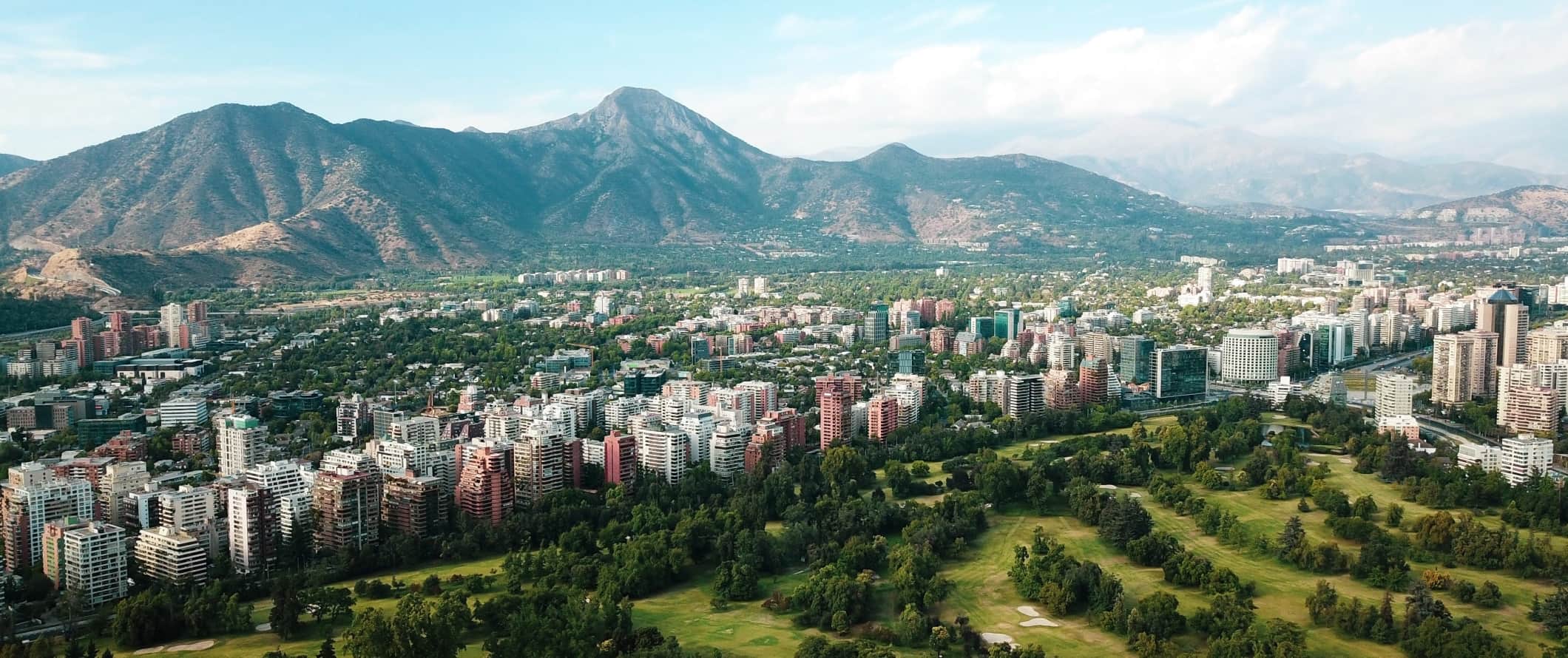
Public transportation – Public transportation, especially in Santiago, is reliable and affordable. In Santiago, you need to purchase a refillable bus pass (BIP Card) for your journeys as individual tickets are no longer available. The card costs around 1,550 CLP with the average ride costing around 700 CLP (prices vary depending on the time of day). BIP cards need a minimum initial credit of 1,000 CLP. You have to pay for your card and top-ups in cash; non-Chilean credit cards are not accepted.
Bus – For intercity travel, buses are the cheapest way to get around — and they are nice too! Reclining seats are common and many even recline almost all the way down. Additionally, some night buses even have a curtain between the seats so you can have a little privacy from your neighbor. The best companies to use are Turbus and Pullman.
Expect to pay at least 38,000 CLP per person from Santiago to Antofagasta. From Santiago to Valparaiso, bus tickets cost around 6,000–10,000 CLP each way. For something like the cross-country journey from Santiago to Punta Arenas, expect to pay at least 60,000 CLP for the 40-hour bus ride (this is an incredibly long distance so you have to change at Osorno or choose flying).
Train – Traveling by train in Chile is virtually non-existent. Much of the tracks have been left to decay beyond repair outside the central region of the country. Trains link Santiago with Curico, Talca, Linares, and Chillan with air-conditioned cars but that’s the extent of Chile’s train infrastructure. You can visit trencentral.cl for the available routes and prices.
Flying – Flying around the country is surprisingly affordable. Expect to pay around 28,000-35,000 CLP for the two-hour flight from Santiago to Antofagasta. Prices are similar for trips from Santiago to:
- La Serena (one hour)
- Calama (two hours)
- Arica (two hours forty-five minutes)
- Concepcion (one hour)
- Puerto Montt (one hour forty minutes)
For a flight between Santiago and Puerto Natales, expect to pay around 40,000-55,000 CLP. Round-trip flights from Santiago to the remote Easter Island cost around 240,000-300,000 CLP.
Car rental – Driving in Chile is much easier (and safer) than driving in other South American countries. Many of the highways are well-maintained thanks to their liberal use of toll roads. While driving in Santiago can be a little chaotic, once you get out of the city things generally become much easier. Expect to pay around 178,000 CLP for a one-week rental. Drivers need to be at least 21 years old.
For the best car rental prices, use Discover Cars .
When to Go to Chile
Since Chile is in the southern hemisphere, the summer months are December, January, and February. With landscapes ranging from desert to tundra, the weather and temperatures can vary tremendously here. Expect daily highs around 28-30°C (82-86°F) in Santiago, while the highs in Torres del Paine are closer to 13°C (55°F).
Winter is not a particularly great time to visit as the temperatures can drop below freezing, with snowfall common in certain regions. Daily lows reach -15 °C (5 F), making it rather unpleasant to be out and about during the day. Unsurprisingly, you can see why most travelers visit during the summer.
Fortunately, the shoulder season is also a fantastic time to visit Chile as you’ll be able to beat the crowds and save yourself some money. It’s an especially good time to visit if you plan on visiting Torres del Paine as there will be fewer hikers here and the park admission will be much cheaper. November and March are usually included in the high season, so aim for late October or early April. The weather won’t be perfect, but it’s a good compromise for travelers looking to dodge the crowds.
How to Stay Safe in Chile
Chile is considered a safe destination and generally ranks as one of the safest on the continent. That said, crimes still do occur so you’ll want to take some precautions during your trip. The most common crimes in Chile are petty theft and bag snatching. Since these are crimes of opportunity, you’ll always want to make sure your possessions are secure. Be extra vigilant when riding the bus and when you’re in areas popular with tourists.
When taking the bus (especially the night bus) make sure you don’t have any valuables in your checked bag. Additionally, keep any valuables secure and out of reach from any would-be pickpockets.
If you’re enjoying the nightlife of Santiago, keep an eye on your drink as drink-spiking can occur.
Be sure to read about the common travel scams to avoid here .
Earthquakes are also common enough in Chile that you’ll want to make sure you are prepared should one occur. Know where your emergency exits are in your accommodation as well as any local evacuation locations for major emergencies. If you have a map downloaded on your phone, save the location of the nearest hospital and airport as well, just in case.
If you need emergency services, dial 113 for assistance.
The most important piece of advice I can offer is to purchase good travel insurance. Travel insurance will protect you against illness, injury, theft, and cancellations. It’s comprehensive protection in case anything goes wrong. I never go on a trip without it as I’ve had to use it many times in the past. You can use the widget below to find the policy right for you:
Chile Travel Guide: The Best Booking Resources
These are my favorite companies to use when I travel. They consistently have the best deals, offer world-class customer service and great value, and overall, are better than their competitors. They are the companies I use the most and are always the starting point in my search for travel deals.
- Skyscanner – Skyscanner is my favorite flight search engine. They search small websites and budget airlines that larger search sites tend to miss. They are hands down the number one place to start.
- Hostelworld – This is the best hostel accommodation site out there with the largest inventory, best search interface, and widest availability.
- Booking.com – The best all around booking site that constantly provides the cheapest and lowest rates. They have the widest selection of budget accommodation. In all my tests, they’ve always had the cheapest rates out of all the booking websites.
- Get Your Guide – Get Your Guide is a huge online marketplace for tours and excursions. They have tons of tour options available in cities all around the world, including everything from cooking classes, walking tours, street art lessons, and more!
- SafetyWing – Safety Wing offers convenient and affordable plans tailored to digital nomads and long-term travelers. They have cheap monthly plans, great customer service, and an easy-to-use claims process that makes it perfect for those on the road.
- LifeStraw – My go-to company for reusable water bottles with built-in filters so you can ensure your drinking water is always clean and safe.
- Unbound Merino – They make lightweight, durable, easy-to-clean travel clothing.
- Top Travel Credit Cards – Points are the best way to cut down travel expenses. Here’s my favorite point earning credit cards so you can get free travel!
Chile Gear and Packing Guide
If you’re heading on the road and need some gear suggestions, here are my tips for the best travel backpack and for what to pack!
The Best Backpack for Travelers
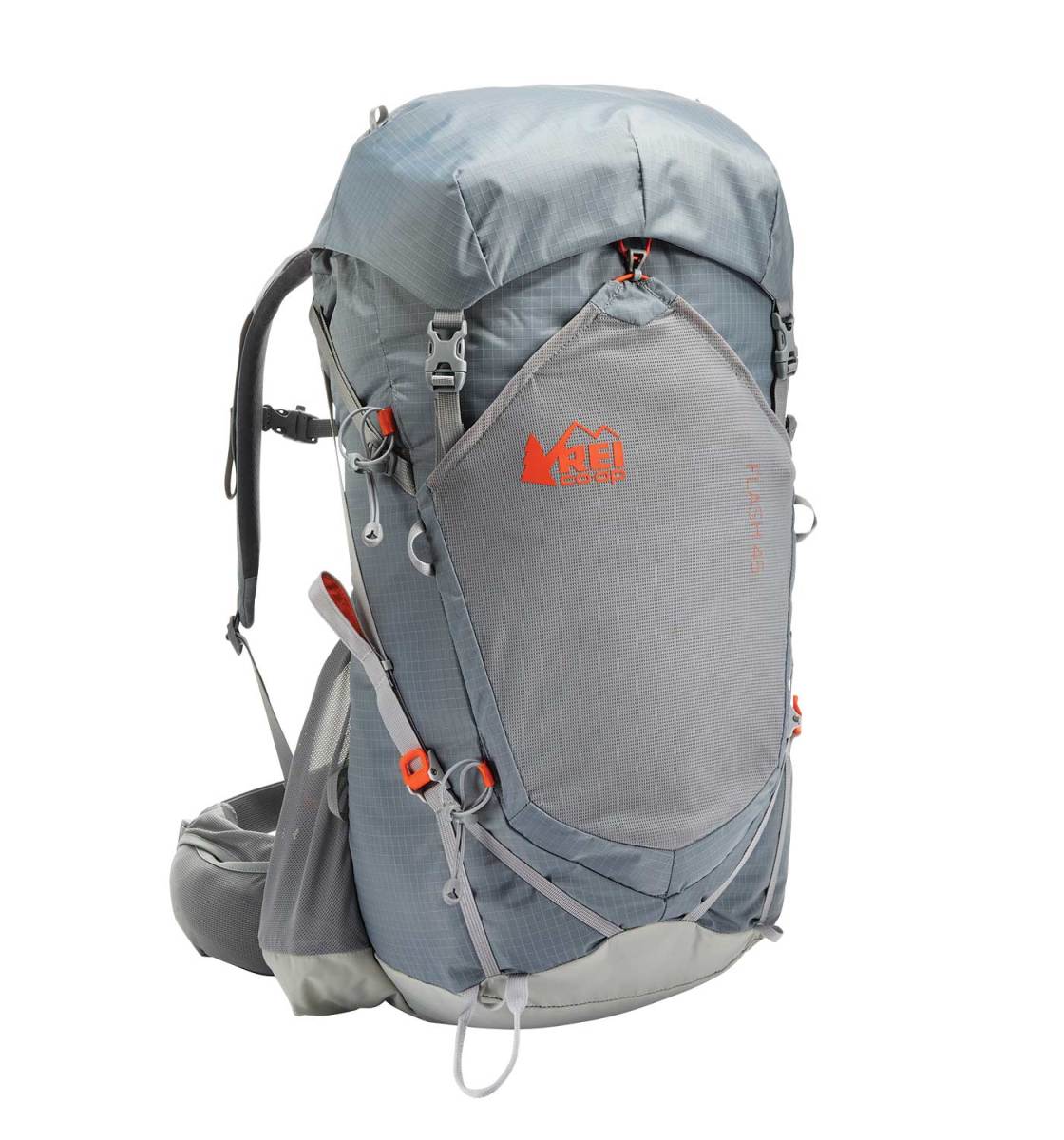
If you want something different, refer to my article on how to choose the best travel backpack for tips on picking a pack and other backpack suggestions.
What to Pack for Your Trip
- 1 pair of jeans (heavy and not easily dried, but I like them; a good alternative is khaki pants)
- 1 pair of shorts
- 1 bathing suit
- 5 T-shirts ( Unbound Merino is my preferred company. If you’re a member of TNN+, you can get 15% off your purchase )
- 1 long-sleeved T-shirt
- 1 pair of flip-flops
- 1 pair of sneakers
- 6 pairs of socks (I always end up losing half)
- 5 pairs of boxer shorts (I’m not a briefs guy!)
- 1 toothbrush
- 1 tube of toothpaste
- 1 package of dental floss
- 1 small bottle of shampoo
- 1 small bottle of shower gel
Small Medical Kit (safety is important!!!)
- Hydrocortisone cream
- Antibacterial cream
- Hand sanitizer (germs = sick = bad holiday)
Miscellaneous
- A key or combination lock (safety first)
- Zip-lock bags (keeps things from leaking or exploding)
- Plastic bags (great for laundry)
- Universal charger/adaptor (this applies to everyone)
- LifeStraw (A water bottle with a purifier)
Female Travel Packing List I’m not a woman, so I don’t know what a woman wears, but Kristin Addis, our solo female travel guru, wrote this list as an addition to the basics above:
- 1 pair of stretchy jeans (they wash and dry easily)
- 1 pair of leggings (if it’s cold, they can go under your jeans, otherwise with a dress or shirt)
- 2-3 long-sleeve tops
- 2-3 T-shirts
- 3-4 spaghetti tops
- 1 light cardigan
- 1 dry shampoo spray & talc powder (keeps long hair grease-free in between washes)
- 1 hairbrush
- Makeup you use
- Hair bands & hair clips
- Feminine hygiene products (you can opt to buy there too, but I prefer not to count on it, and most people have their preferred products)
For more on packing, check out these posts:
- What I Pack For My Travels
- The Ultimate List For Female Travelers
- How to Choose and Buy the Right Backpack
Chile Travel Guide: Related Articles
Want more info? Check out all the articles I’ve written on Chile travel and continue planning your trip:
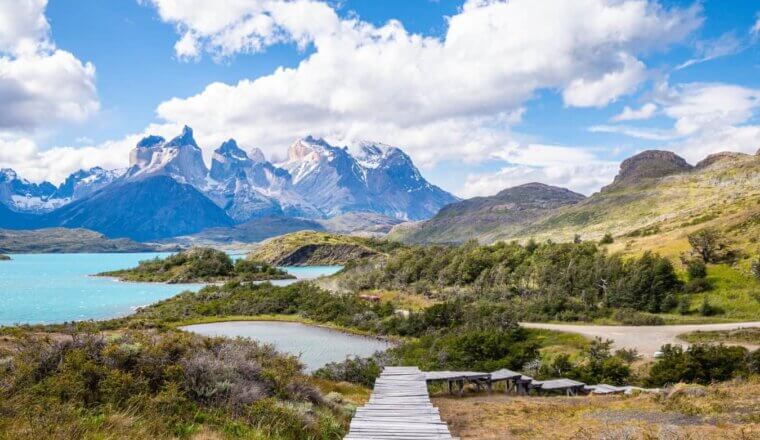
Is Chile Safe to Visit?
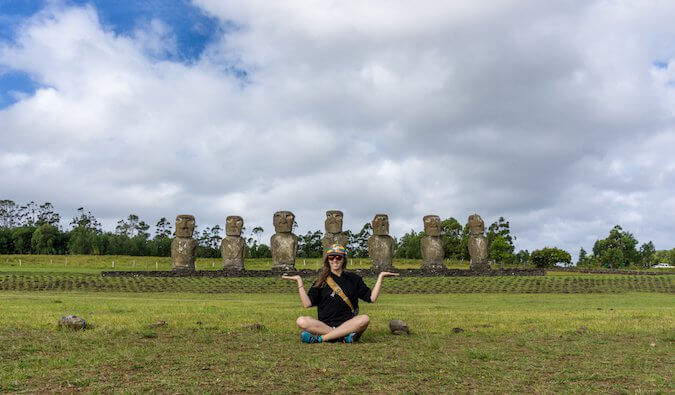
How to Travel Easter Island on a Tight Budget
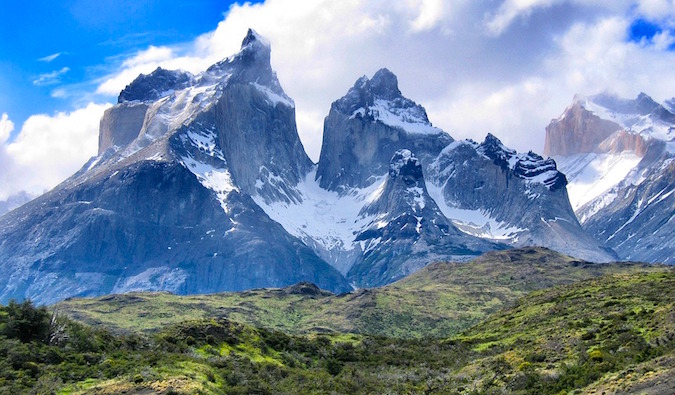
18 of the Best Spots in Patagonia
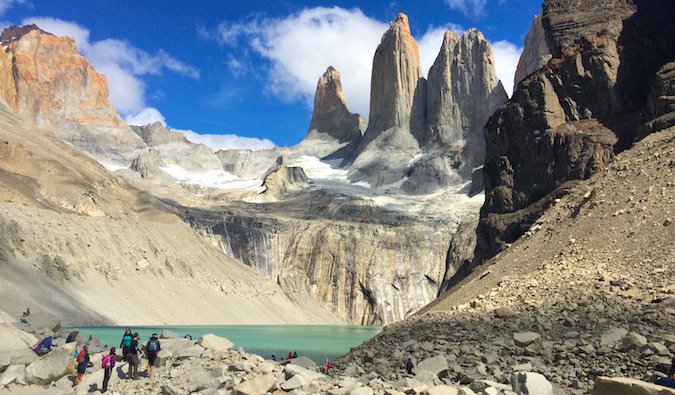
Patagonia: Thoughts on Getting Offline and Trying to Camp
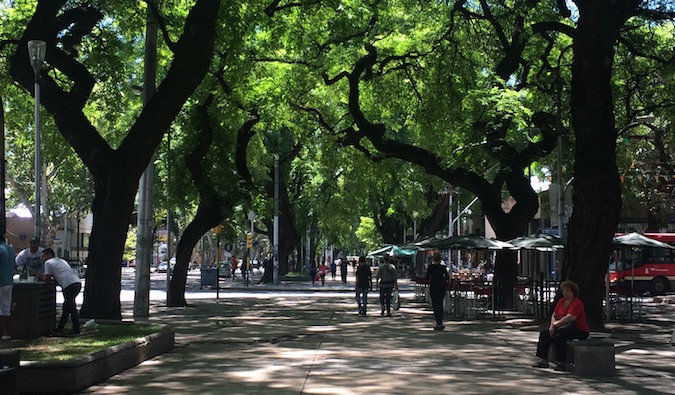
12 Ways to Save Money in Argentina
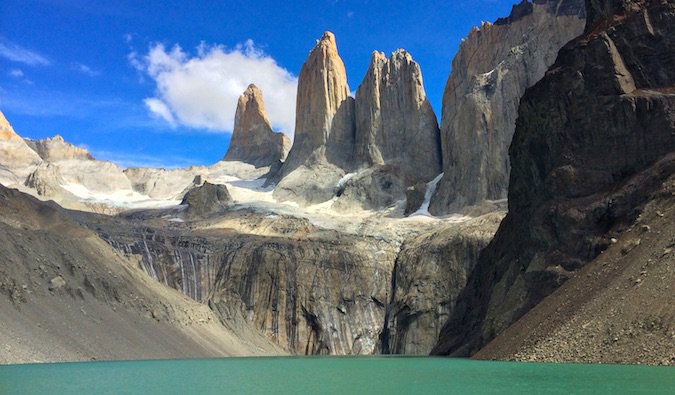
16 Amazing Photos from My Visit to Torres Del Paine
Get my best stuff sent straight to you, pin it on pinterest.
- Where To Stay
- Transportation
- Booking Resources
- Related Blogs

- Huasco Valley
- San Pedro de Atacama
- Elqui Valley
- Antofagasta
- Limarí – Fray Jorge National Park
- Bahía Inglesa
- Alto El Loa
- La Serena and Coquimbo
- Copiapó Valley
- Tagua Tagua – Almahue Valley
- Alto Colchagua Universidad Glacier
- Cachapoal Valley
- Portillo Ski Resort
Pirque and Maipo Valley
- Aconcagua Valley
- Valle Nevado Ski Resort
- El Colorado Ski Resort
- Curicó Valley
- Maule Valley
- San Antonio/Leyda Valley
- Colchagua Valley and Santa Cruz
- Casablanca Valley
- Viña del Mar
- Cajón del Maipo
- Robinson Crusoe Island
- Rancagua and Sewell
- La Parva Ski Resort
- Rano Raraku
- Llanquihue Lake
- Chillan Ski Resort
- Puerto Montt
- Osorno and Puyehue
- Valdivia and Corral
- Pucón and Villarrica
- Panguipulli
- Temuco and Lago Budi
- Arauco Territory
- Puerto Varas
- Chilean Antarctic Destination
General Carrera Lake
- Tierra del Fuego
- Coyhaique and Puerto Aysén
Carretera Austral
- Torres del Paine
- Puerto Natales
- Punta Arenas
- Family recreation
- Coastal beaches
- Lakeside Beaches
- Hot Springs
- Spa and relaxation
- Patagonian cruises
- Lake sailing
- International cruises
- Visits to observatories
- Astronomical facilities
- Indigenous Peoples and Ethnotourism
- World Heritage Sites
- Archaeology
- Paleontology
- Poetry and Literature
- Typical gastronomy
- Gastronomy of the world
- Hiking y trekking
- Skiing and snowboarding
- Mountainbike
- Horseback Riding
- Mountain and rock climbing
- Sport fishing
- Kitesurfing and water sports
- Ice walking
- Overland 4×4
- Paragliding and aerial sports
- Wildlife watching
- Landscape photography
- National Parks
- Bird Watching

Tourism in Chile Where the impossible is possible
From the extreme north with the driest desert in the world to the austral south with eternal ice and inverted waterfalls, Chile is an invitation hard to refuse. Learn about tourism in Chile and be amazed by the experiences in the southernmost portion of the world.
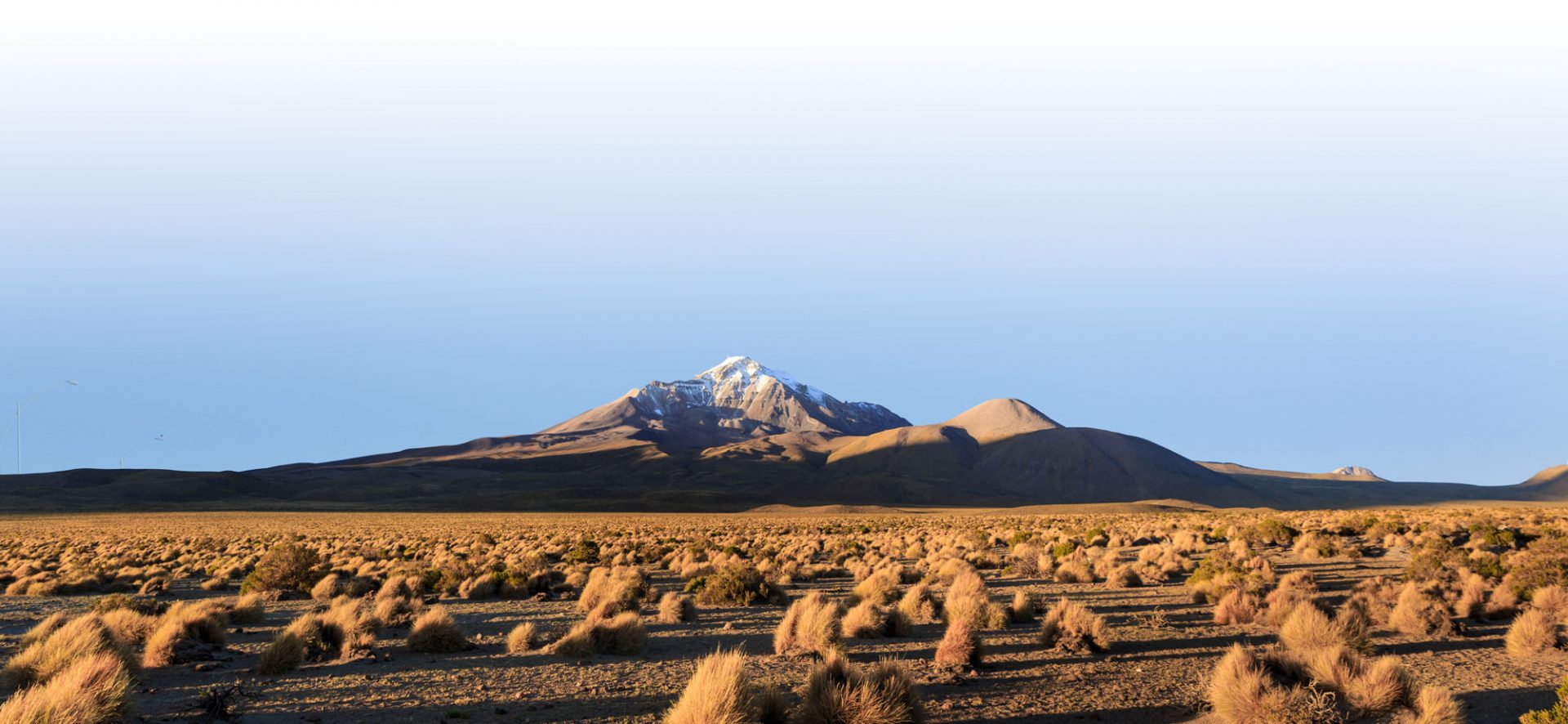
Discover our diversity
The tranquility of vast sandy esplanades and intense sunshine contrast with deep blue lagoons, small towns where the native customs are kept intact and large cities with beautiful beaches.
Nestled in a plain of small valleys and coastal destinations, central Chile stands out as one of the most populated areas and surprises with the assortment of activities that can be performed, from the mountains to the beaches.
The mystical Rapa Nui culture floods the entire island and gives life to one of the most emblematic destinations in the world. Its pink sand beaches, volcanoes and grasslands along with more than a thousand Moais are just some of its main attractions.
The rain falls heavily on millenary ancient forests of deep vegetation and assorted wildlife, and then gives way to a deep blue sky. Southern Chile stands out not only for its wonderful green landscapes, but also for being one of the most important areas for adventure tourism in the world.
An almost untouched nature full of mountains, fjords, glaciers, forests, steppes, pioneer villages where you can breathe the cattle traditions and the gaucho culture, along with important cities, is part of what you can find in the Chilean Patagonia.
Enjoy Chile, live Chile
- Itineraries
- Destinations
3 amazing destinations to visit from the PUQ Airport
Five magical cities in the south of Chile that you must visit
Los Jesuitas Route in Chile: How to get there and all the points you should visit
Visit Osorno Volcano and discover the magical surroundings of southern Chile
Neighborhoods and Activities to Enjoy Nightlife in Santiago
Salt flats, wildlife, and more: Things to see and do in the Atacama Desert
Discover the panoramas that await you in the metropolitan region
Come to Chile with your partner! What you need to know to come to Chile with your pet
Overland on the Carretera Austral and Tierra del Fuego: an adventure in nature
Pumalín National Park: preservation as an impulse in local development
Come to Chile’s most romantic destinations
The most romantic experiences that you could live in San Pedro de Atacama
Three days in the main vineyards and valleys in Chile
A few kilometers from santiago: what to do in the cajón del maipo, adventures that endure: 2 days of hikes in the andean araucanía, enjoy santiago’s mountains and the casablanca valley.
How to get to Chile?
No matter where you are! Select the country you are in and choose the airline that suits you best to get to Chile*:
(*) Official information of Nuevo Pudahuel

Travel through Chile's destinations
Are you an adventure, beach or desert person? Select the following options to give you the best recommendation according to your interests:
Travelers Recommend
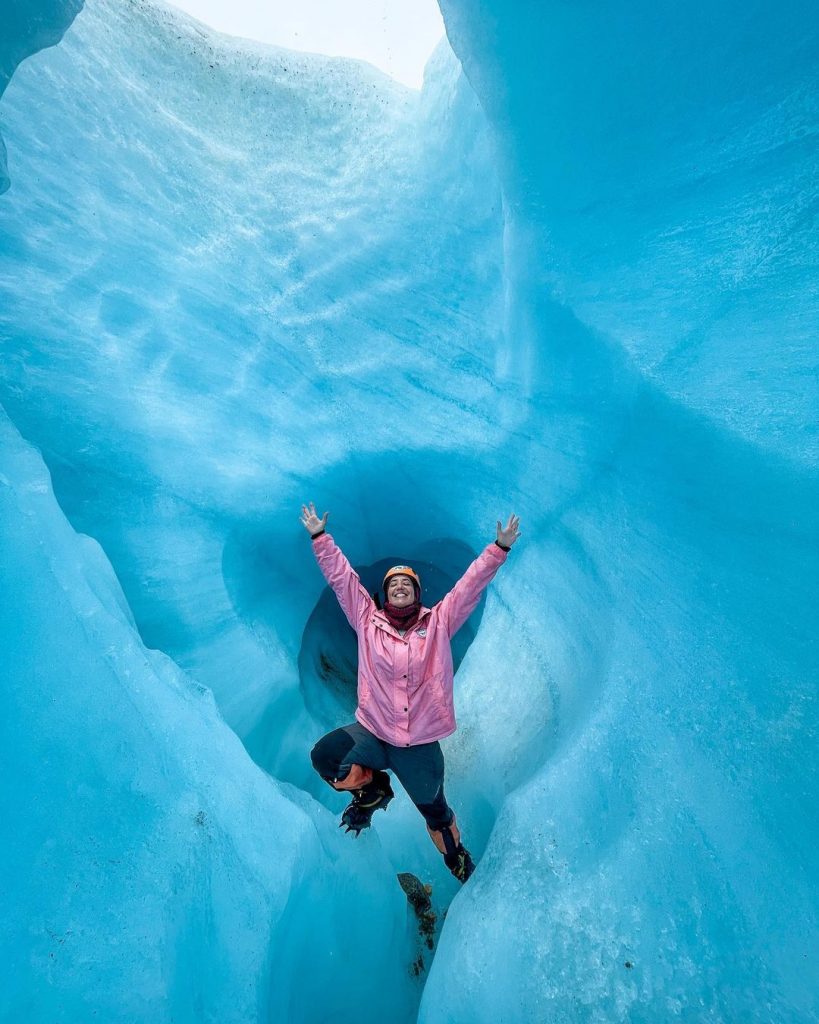
The Aysén region in Chile is full of special places. Today we went to the Exploradores Glacier, and it has been quite an adventure! In total 6 hours on foot, going through forest, moraine, ice… using crampons, being cold and hot at the same time… I LOVED IT.
After an hour on the road, we began to see herds of guanacos running through the Patagonian pampas, and that confirmed that we had reached our next destination: @parquepatagonia.
After going rafting down the Baker River with @raftingbaker, bathing in icy water, seeing incredible landscapes and chatting with people who only teach and add things to our lives

IMAGES
VIDEO
COMMENTS
Chile Tours. In Chile, there are some excellent train routes for railfans. Ride the rails of Chile from Puerto Varas to the coast and mild climates of Santiago de Chile. Travel by rail to Temuco, Chillán, Talca, and Constitución. There is also a train from Calama in the north to Uyuni in Bolivia. The scenery of Chile's wine and agricultural ...
A Travel Guide For Train Travel In Chile. Here you will find information for Chile about trains, routes, tours, connections, where to buy train tickets, and more. [shariff] Useful Information. Population: 18.73 million. Currency: Chilenian Peso. Language: Spanish. Capital: Santiago de Chile.
Trains in Chile are getting faster. New high-speed trains will reach speeds of up to 160 km/h on the Santiago-Chilian route, reducing travel time from 5 to 3 hours and 40 minutes. This is part of a project to modernize the country's rail infrastructure. The journey from Puerto to Limache takes 1:03 hours and from Central to Rancagua takes 1:10 ...
Mar 7, 2025. Patagonian Rail & Cruise Tour: Cape Horn Cruise. 11 Oct - 1 Nov 2024: USD 13,900 per person (Double Occupancy), USD 3,308 per person (Single Room Supplement) 7 - 29 March 2025 (+ 1 Day in Punta Arenas): USD 14,050 per person (Double Occupancy), USD 3,458 per person (Single Room Supplement) Patagonian Rail & Cruise Tour: Overland ...
Trains. You can travel from Santiago to Chillán in modern and comfortable trains. Terra Sur Company offers differnt trips, in which you can enjoy the southern part of the country. Questions and reservations at www.efe.cl. USA: +1-800-906-8056 Arg.: (11) 5219-4105 Brasil: (11) 3958-7071. Information about Efe Train company in Chile.
Concepción-Laja (Corto laja): Train with 22 stops between Talcahuano and Laja, which diverse scenery including the cities of Talcahuano and Concepción and magnificant views of the Bio Bio River. CLP$1,650. Talca-Constitución (Ferrobus): A 3-hour journey bordering the beautiful Maule River to the coast with 11 stops.
On this train journey, passengers experience Santiago and its surroundings from a completely different perspective. The 110 kilometre journey with the "Tren del Recuerdo" (Train of Remembrance) invites you to enjoy the nature of the Chilean landscape in a peaceful ride and travel into the past.The train journey begins at Santiago's main railway station and takes passengers to the port ...
Patagonian Rail & Cruise. Oct 11. Nov 1, 2024. Embark on an unforgettable train expedition from the bustling metropolis of Santiago de Chile to the picturesque town of Chillán. This enchanting rail journey offers travelers a delightful blend of stunning landscapes, cultural encounters, and a glimpse into the heart of Chile.
In summary, rail travel in Chile is a comfortable and efficient mode of transportation for both locals and tourists. With modern and well-maintained trains, two classes of travel, and a range of ticket options, it is a convenient way to explore the country. Additionally, the metro systems in urban areas provide an easy and affordable way to get ...
Estación Central - Train Station - Santiago. Prices range from CLP7,000 to CLP24,000 depending on the season, length of the journey and or which carriage you wish to travel. They basically follow two standards: Clase Preferent e (first class), where seats are considerably wider, more comfortable and far apart from one another, in addition ...
Read more. Review of: Metro de Santiago. Written March 5, 2020. This review is the subjective opinion of a Tripadvisor member and not of Tripadvisor LLC. Tripadvisor performs checks on reviews. Polo Morailles. San Diego, CA157 contributions. Small, but lenghtly train servicing Valparaiso.
Chile Tours offers the best travel packages to Chile. Plan an excursion to South America to visit the incredible sights in Chile - explore the landmarks in Plaza de Armas in Santiago, take photos of street art in Valparaiso, or hike the Andes mountain range in Patagonia. Chile Tours offers an opportunity to discover the best of Chile!
Luxury Train Travel in South America via Peru, Bolivia, Argentina, Brazil, Chile & Patagonia. We often find that travellers head for Latin America due to the diversity it offers in landscapes, incredible city destinations, history, and intriguing cultures. South America train travel provides a wonderful way of seeing many of the region's ...
Train travel in Chile. The Chilean state railways official website is www.efe.cl, although for passengers trains use www.trencentral.cl. Several Terrasur trains per day link Santiago's Alamada station with Curico, Talca, Linares and Chillan on the electrified main line. The trains are air-conditioned, standard class & preferente class with a ...
All long-distance passenger trains in Chile leave Santiago Alameda Railway Station and run from Santiago de Chile southward to Chillan for over 398 km (247 Miles). From there, on specific dates, night trains continue to Temuco or Constitucion. Between Santiago de Chile and Chillan, various passenger trains circulate each day.
Train travel in Chile - regional trains. In Chile, there are several regional trains running in different parts of the country. Most popular is train from Santiago to Rancagua (80). The connection from Santiago to Rancagua was inaugurated in 2017. Trains run every 15 minutes during peak hours at stop at 10 stations.
Roads become increasingly rugged as you approach Chile's southern tip and boats become an essential part of the travel mix, with the reward of spectacular scenery as you navigate between the islands. Whether you choose to explore by bus, boat, train or airplane, here is the lowdown on the best ways to navigate up, down and all around Chile.
Tren Central is an intercity bus company of the Group Empresa de los Ferrocarriles del Estado (EFE) and was founded in the year 1995. Tren Central offers different servicios like the Expreso Maule, TerraSur, Ramal Talca Constitución and the Metrotren. The company offers a different service for the people leaving from Santiago to the south of ...
Currently, the train system from Santiago to Chillan in Chile transports at least 230 thousand passengers a year on a 398-kilometer route that separates one Chilean region from the other, and is the fastest means of land transportation to move between these areas. To travel by train from Santiago to Chillan saves at least an hour of travel ...
The Trains for Chile plan continues to offer good news, this time about the Santiago-Chillán service. Yesterday, the first two trains that will renew the service were unloaded; they will transform it into the most modern in South America. The Santiago-Chillán section is currently the only regular long-distance service available (400 kilometers).
Train - Traveling by train in Chile is virtually non-existent. Much of the tracks have been left to decay beyond repair outside the central region of the country. Trains link Santiago with Curico, Talca, Linares, and Chillan with air-conditioned cars but that's the extent of Chile's train infrastructure. ... Chile Travel Guide: The Best ...
At Chile Travel, we want you to discover it and know what activities you can engage in. Find out more "> Blog Discover the panoramas that await you in the metropolitan region. Santiago is a mesmerizing city. Full of culture, history, and fun, it is one of the most important cities in Latin America. The city is an attractive tourist destination ...